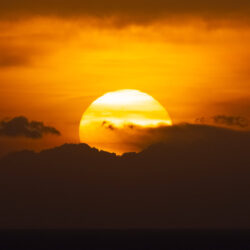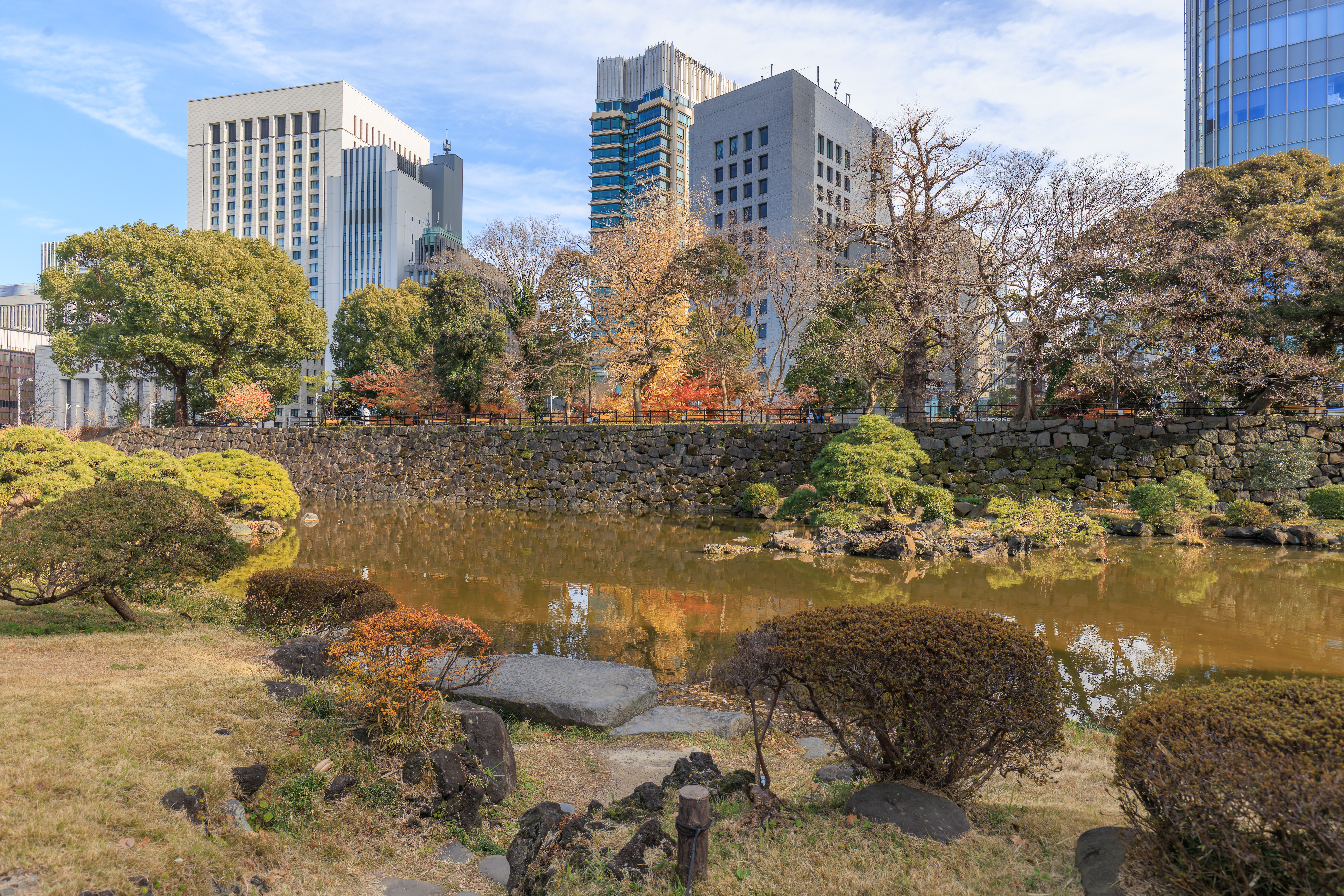We checked out of the Mercure in the morning and headed to Tsukiji for an early seafood donburi lunch. After we visited the Namiyoke Inari Shrine, had some sushi, and spent some time at Hibiya Park. We then headed to Haneda, getting our bags from the Mercure on our way. We flew to Chitose on JAL and took a bus to the ANA Crowne Plaza Chitose for the evening.
Mercure Tokyo Haneda Airport
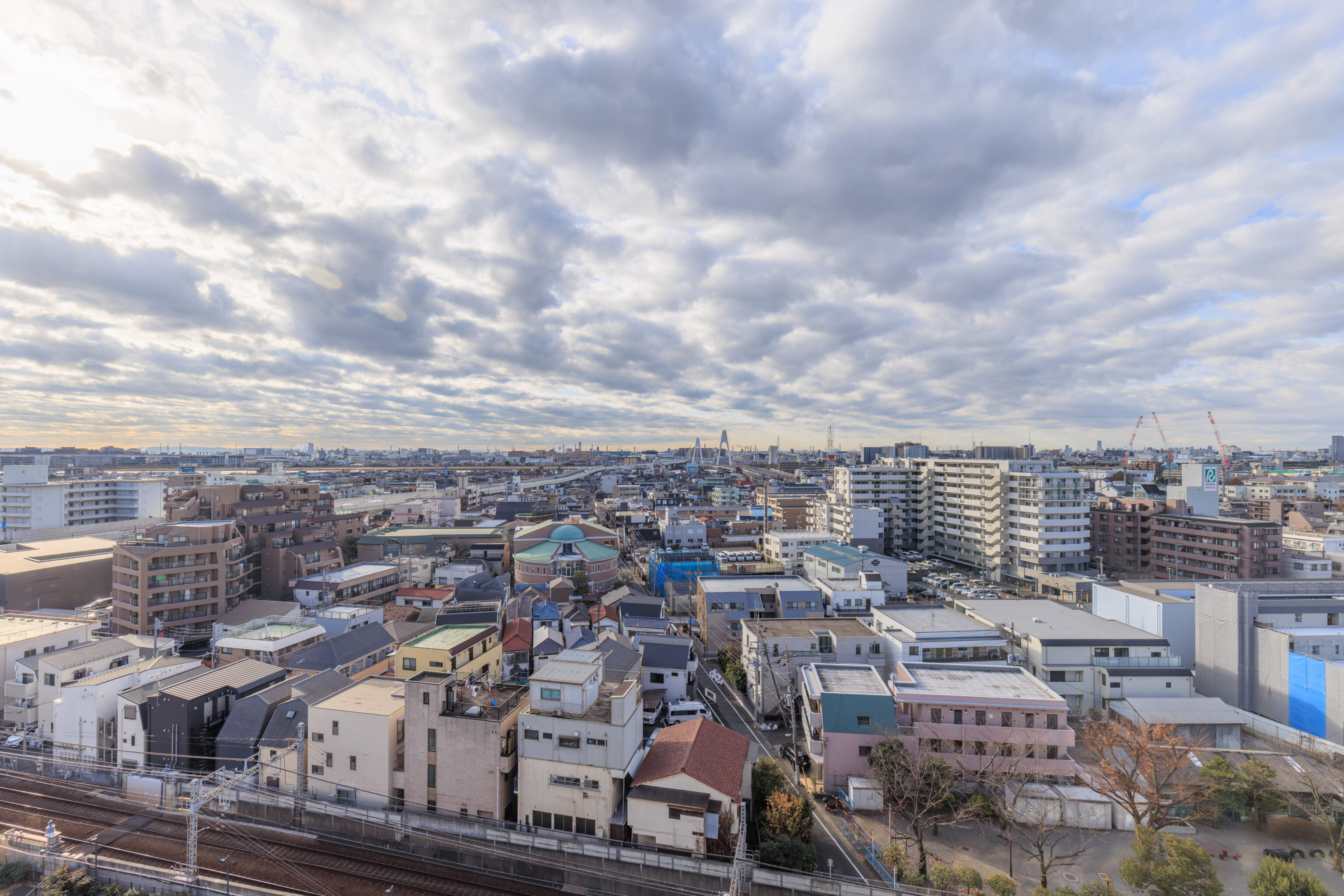
After waking up one final morning at the Mercure Tokyo Haneda Airport, we finished packing and checked out, leaving our bags at the hotel to pick up later. Overall, it has been an excellent stay! The hotel is nice and modern and the room was a reasonable size. The room rate was extremely reasonable given how crazy Tokyo hotel pricing has been recently. The location was also extremely convenient as it is easy walking distance to 大鳥居駅 Otorii Station which has frequent rail service as it is on the 京急空港線 Keikyu Airport Line to 羽田空港 Haneda Airport.
We did pick up a few transit tricks when headed to places that aren’t the airport from Otorii. It is optimal to simply get on the next train that is headed west. If it happens to be going to where we want to go, great! If not, get off at 京急蒲田駅 Keikyu-Kamata Station and transfer as all the trains that stop at Otorii will stop there.
The same mostly applies to returning to Otorii, simply get on a train that is going to go to Keikyu-Kamata and transfer if necessary. The only exception here is the Airport Limited Express which goes non-stop from Shinagawa to Haneda. These trains are relatively rare compared to the other services. We didn’t see one at all this time but we did ride on it previously. Not too much of a big deal as you can always just take the next train from Haneda to Otorii.
Keikyu-Kamata can be a bit confusing as there are multiple floors of platforms and platforms can have trains going in either direction. It can be a bit of a scramble to find the next train, figure out where its actually going, and then get to it!
Tsukiji Outer Market
After checking out, we decided to head to the 築地場外市場 Tsukiji Outer Market as although the fish market has been demolished, the outer market still exits. We considered going to 豊洲市場 Toyosu Market, which replaced Tsukiji, but decided to save it for a future trip.

We took the train to 東銀座駅 Higashi-Ginza Station, one of the closer stations to Tsukiji. It can be reached without changing trains if you get on one that continues north of Shinagawa on the 浅草線 Asakusa Line. 歌舞伎座 Kabukiza, a kabuki theater as the name suggests, is right by the station.
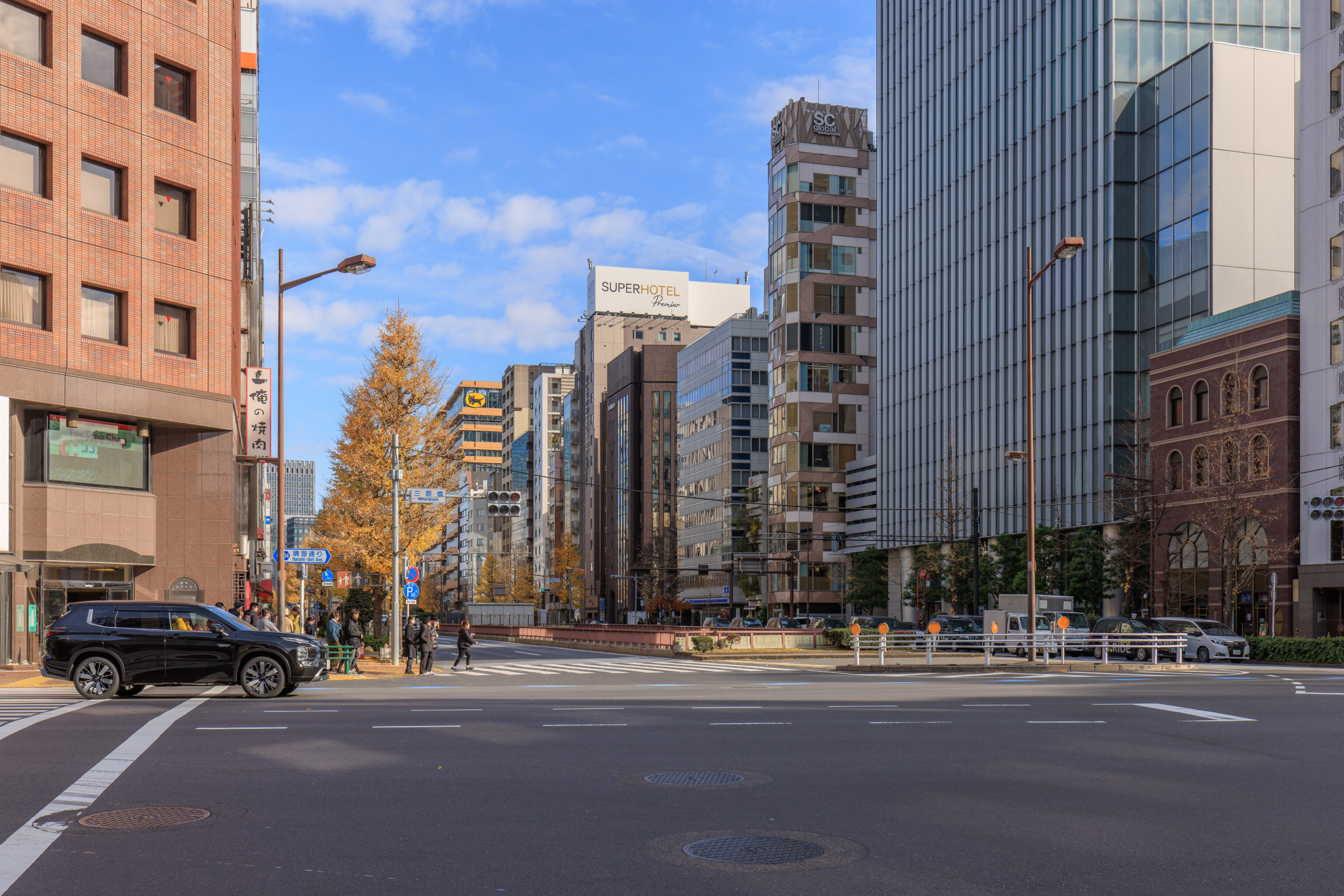
I think we were either photographing the ginko trees or the Yamato Transport with its cat carrying kitten logo building in the background!
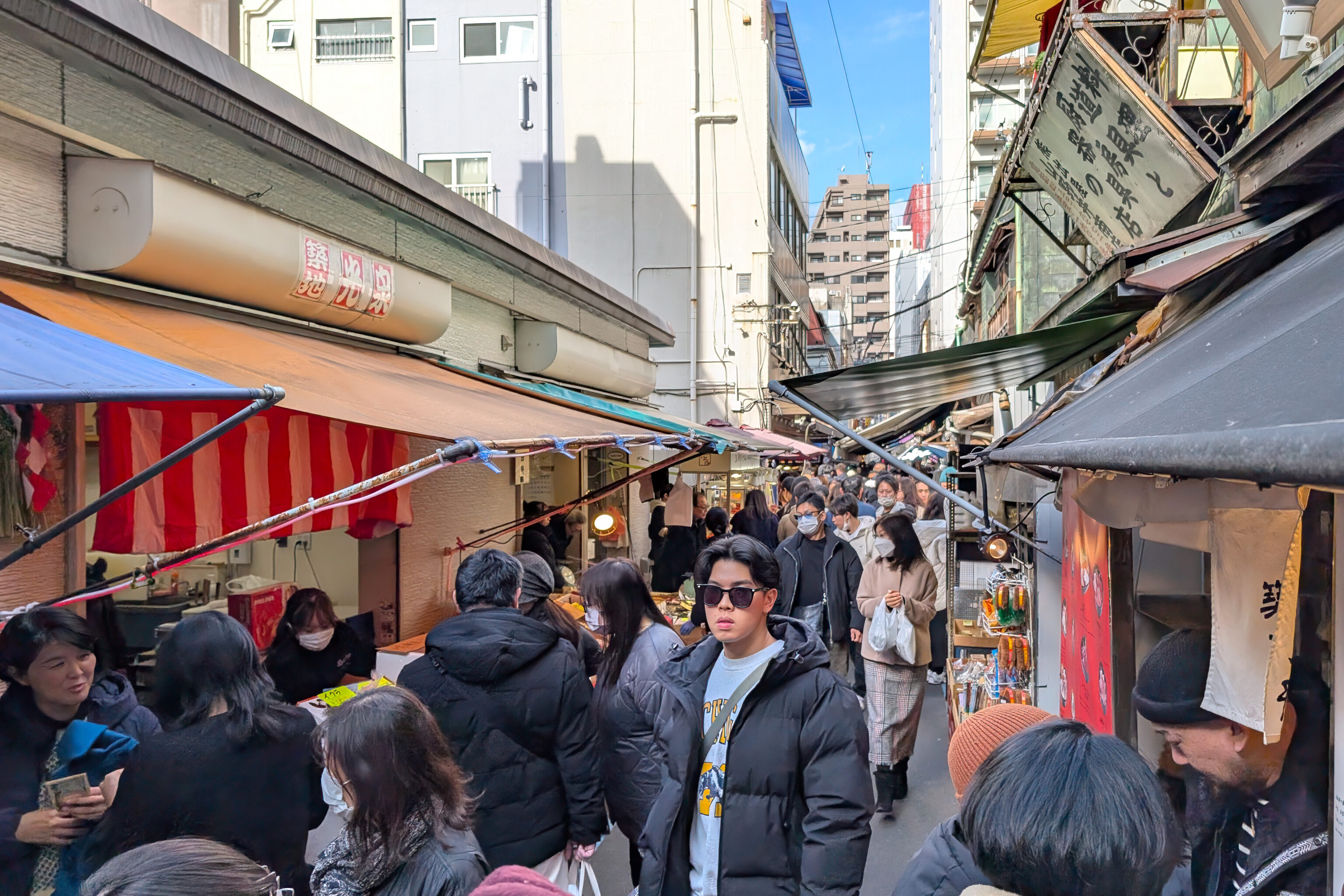
The Tsukiji Outer Market ended up being a zoo. It has been a long time since we’ve been here! We decided to eat at Tsukijiro, a seafood donburi restaurant, as the queue seemed reasonable.

The restaurant’s sign above the entrance as we waited on the queue.
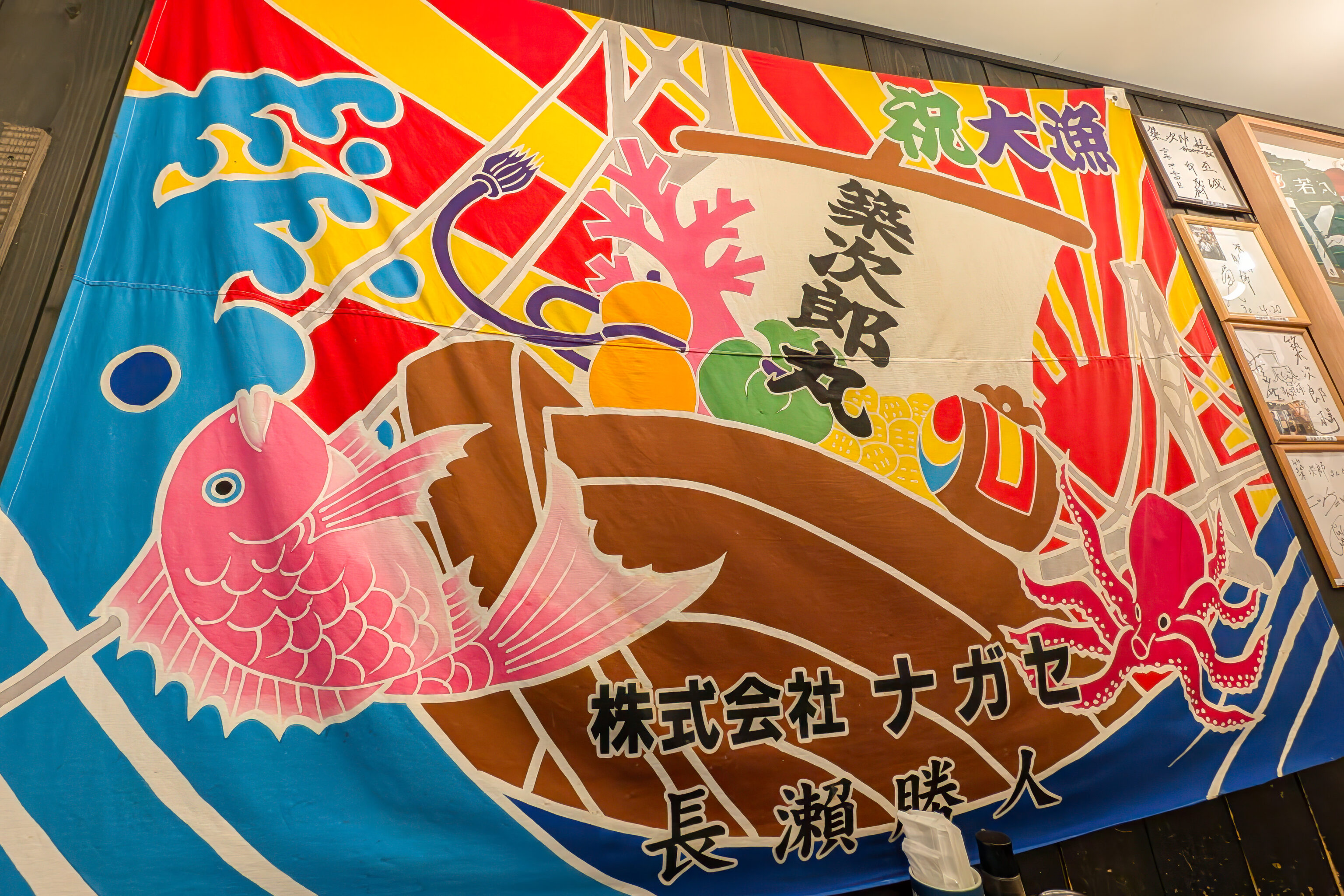
A banner inside the restaurant. It seems to be a congratulatory message?
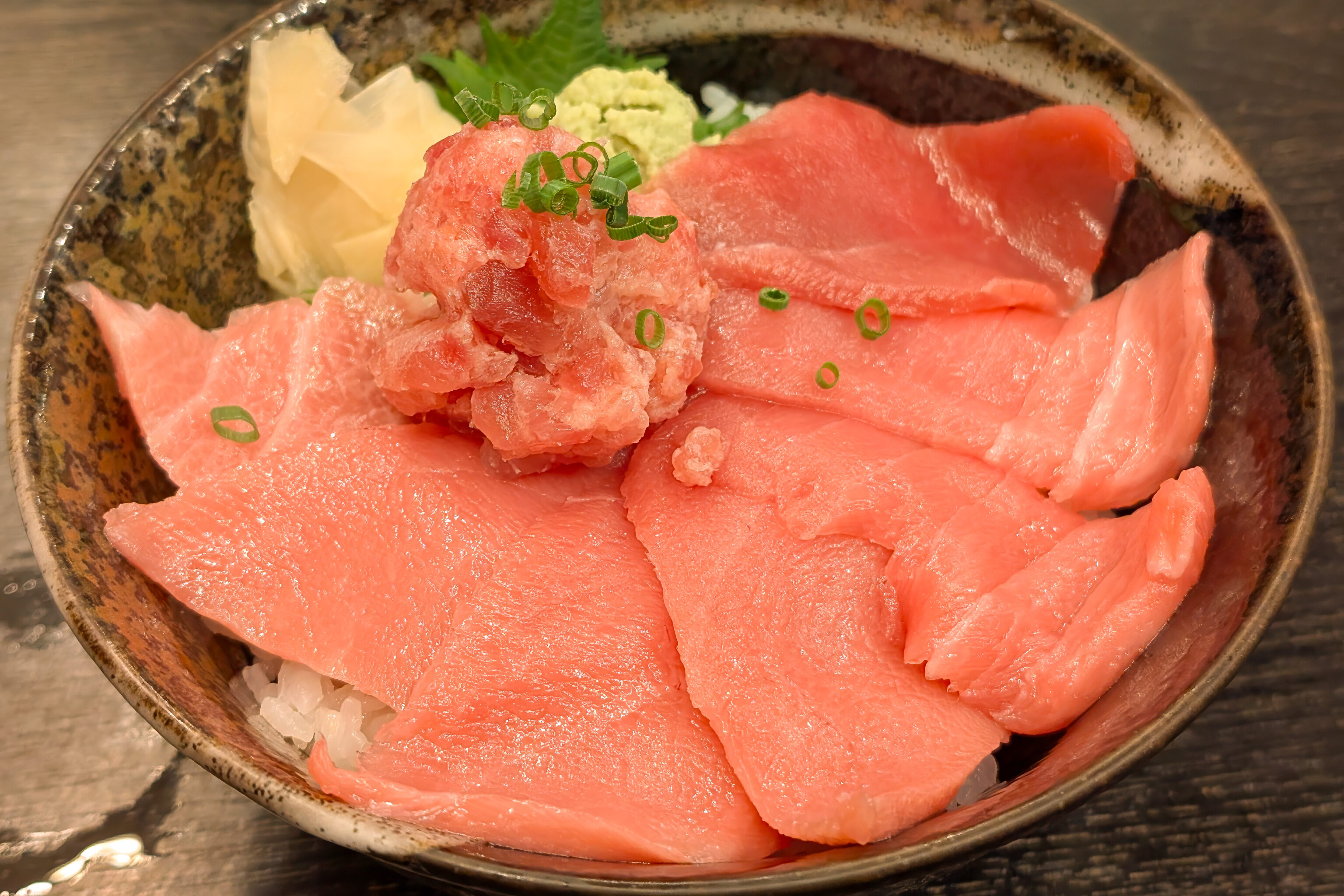
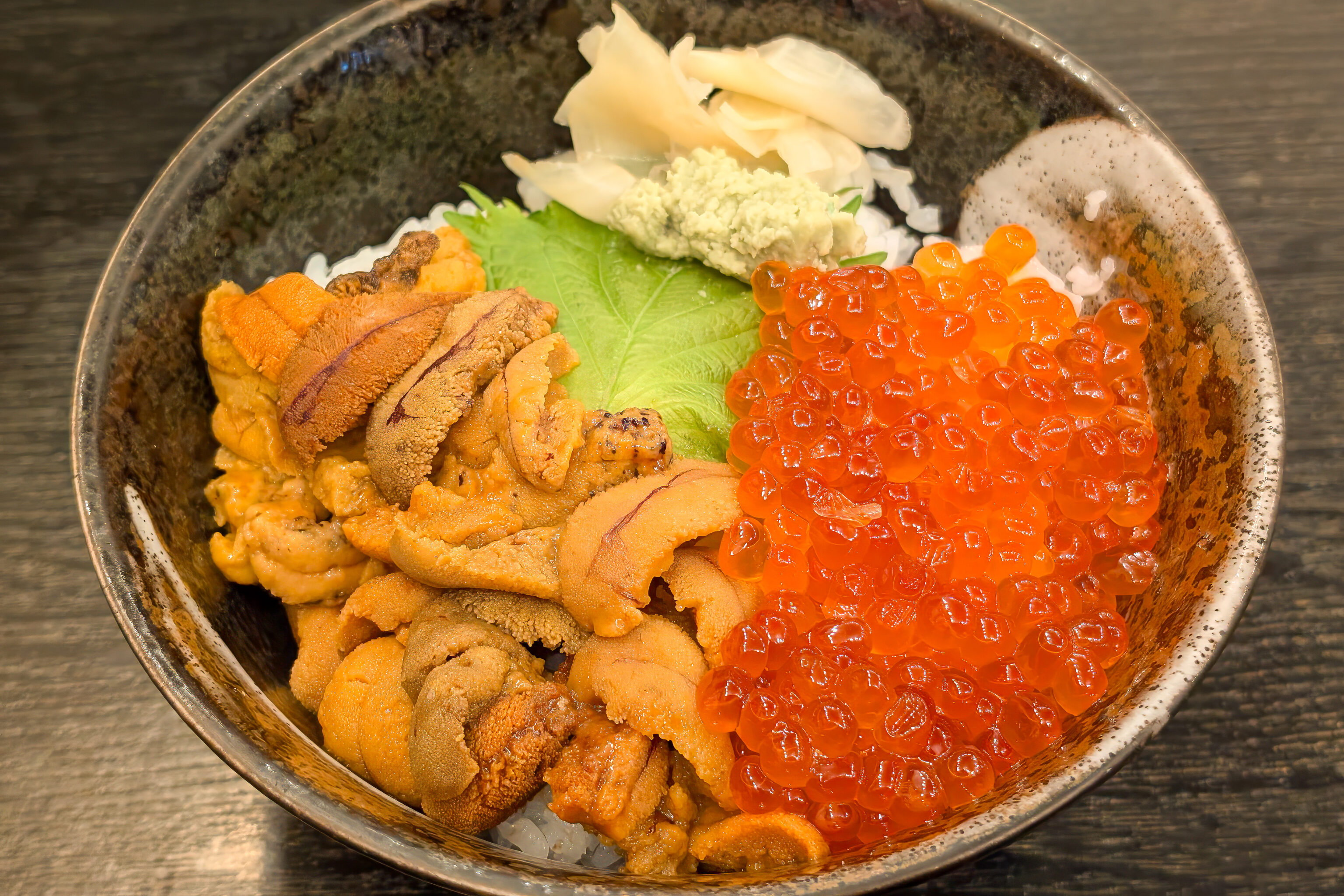
It was pretty pricey but the fish quality was fantastic. Still, Japanese fish quality tends to be extremely high so we’d probably be happy just eating cheaper Japanese fish!
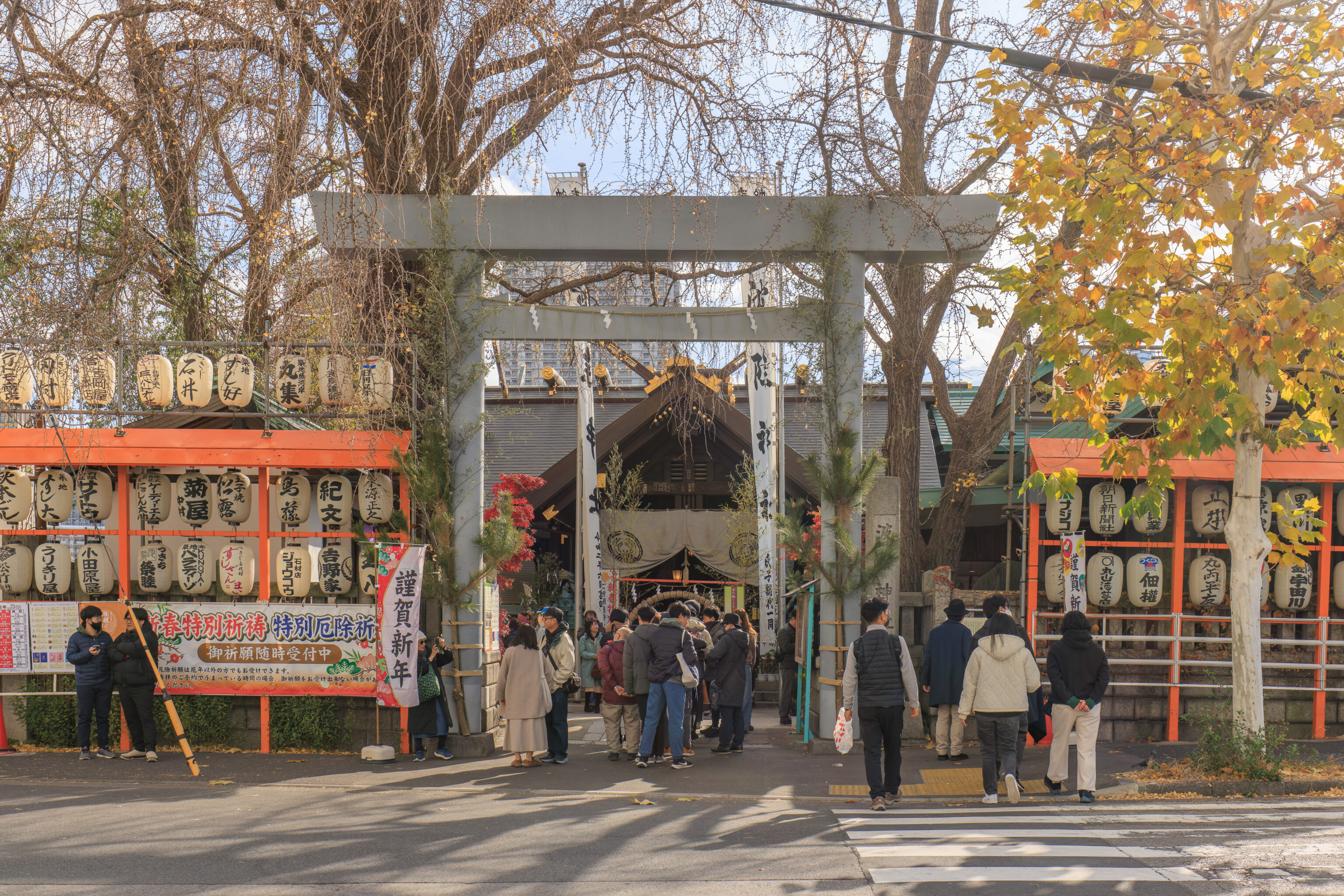
We walked to the southeast after eating, ending up at the 波除稲荷神社 Namiyoke Inari Shrine. A sign describes the shrine in English:
Namyoke Inari Shrine
6-20-37 Tsukiji, Chuo-ku
It is said that Namiyoke Inari Shrine was built during the Manji era (1658 to 1661). During the years in the Manji era when land in the entire Tsukiji area was reclaimed, the work ran into difficulties due to waves. It is said, however, that after an image of Inari-Myojin was floated on the sea as worship, the land reclamation work was safely completed. The honorific title of "Namiyoke (protection from waves)" came from this historical event. Since the Edo period, the shrine has been worshiped by people as the deity for safe voyage, averting misfortune and good luck..
The festival of Namiyoke Inari Shrine has been known as the Shishi Matsuri (lion festival) since the Edo period. Many lion heads paraded the town during the festival. Although most of the lion's heads were lost due to earthquakes and damage during the war. a pair of remaining lion's heads made in 1848 (cultural properties of Chuo-ku (ward]) is enshrined at the main shrine as treasures. During the "Tsukiji Shishi Matsuri Festival" held every June, "Yakuyoke-tenjo-oojishi (Lion charm against bad luck)" and "Benzaiten-ohaguro-jishi (Saraswati lion with black painted teeth)" occasionally parade through the town to preserve the tradition of the Shishi Matsuri.
Moreover, two rainwater bowls (cultural properties of Chuo-ku [ward]) in front of the main shrine were dedicated in 1838 by conveyors who were engaged in discharging cargo from ships of the Owari domain. During the Edo period, there was a warehouse of the Owari Tokugawa clan in the southern half of Tsukiji market to which rice and local specialties of Owari were brought. The rainwater bowls, which were dedicated for praying for the safety of ships, are valuable eultural properties that preserve the people's faith in Namiyoke Inari Shrine.
March 2010
Chuo City Board of Education
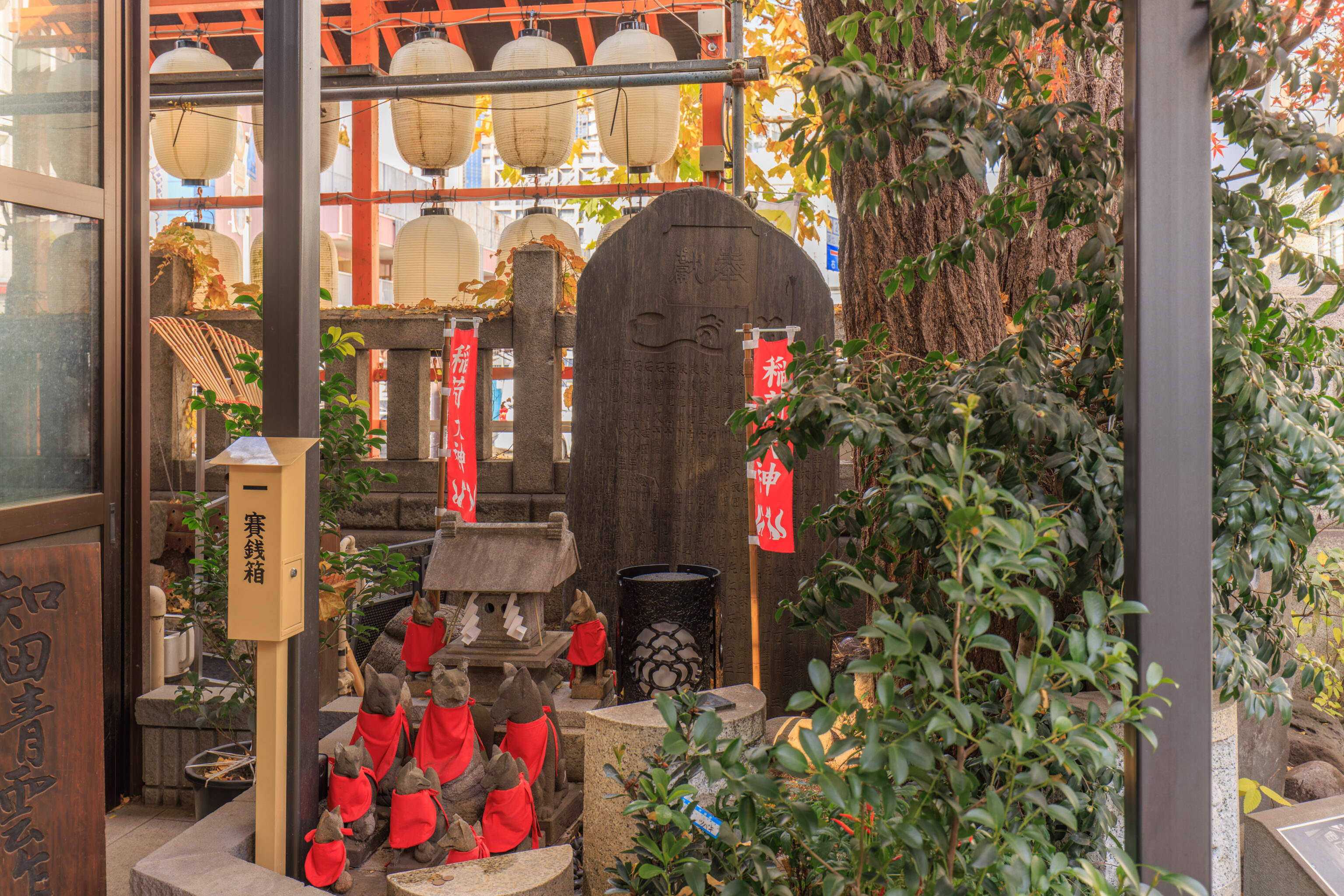
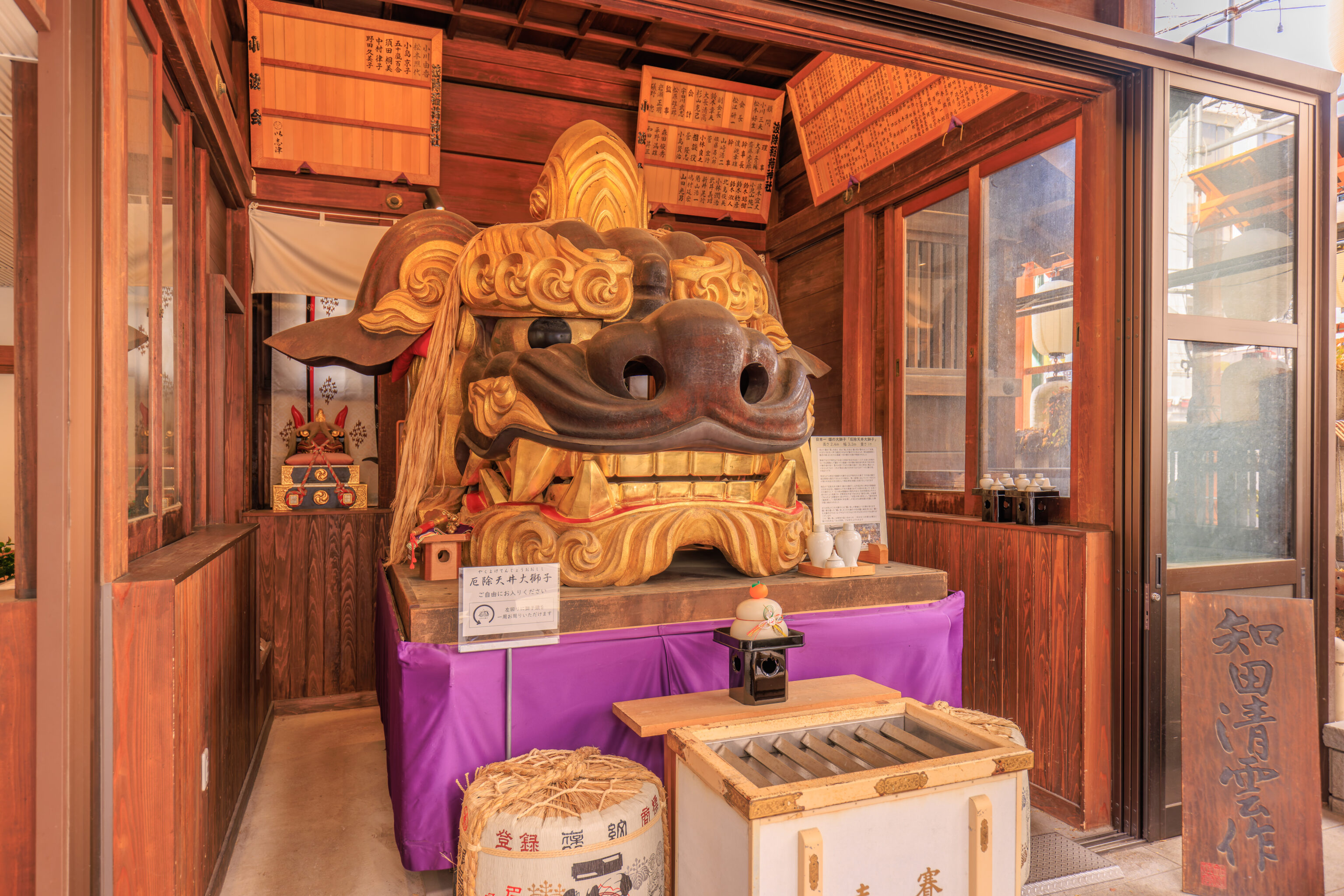
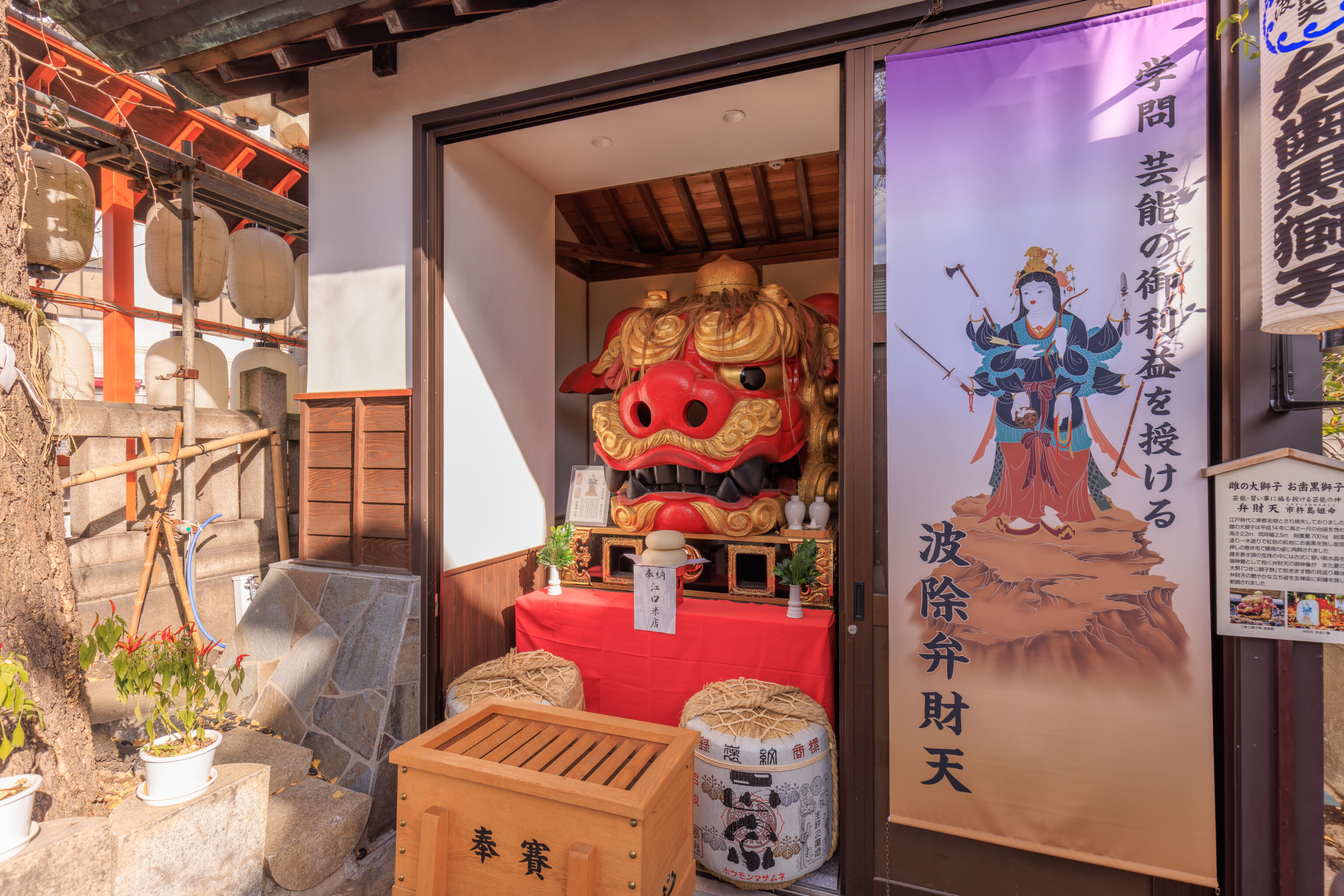
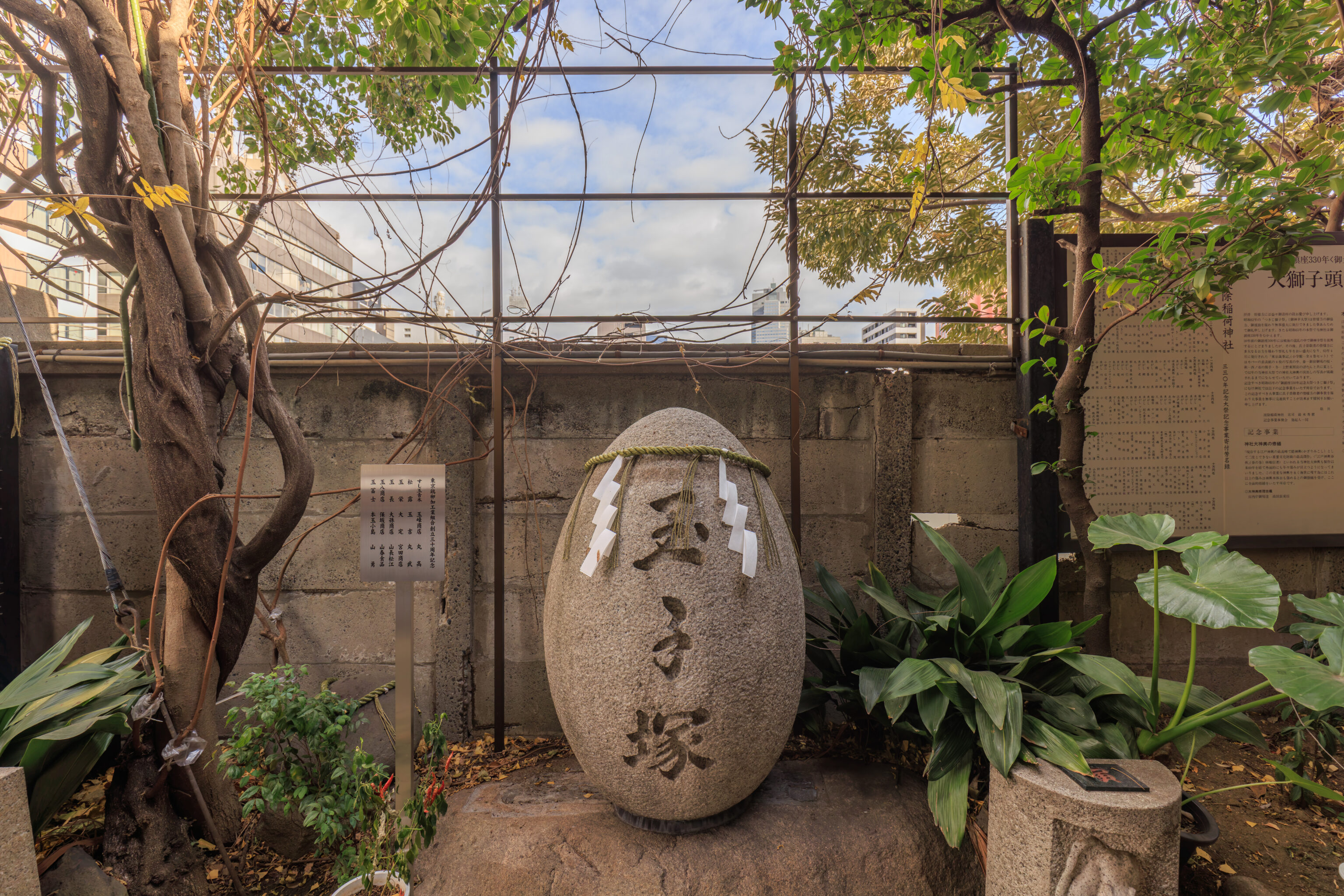
The shrine is pretty small and was pretty busy.
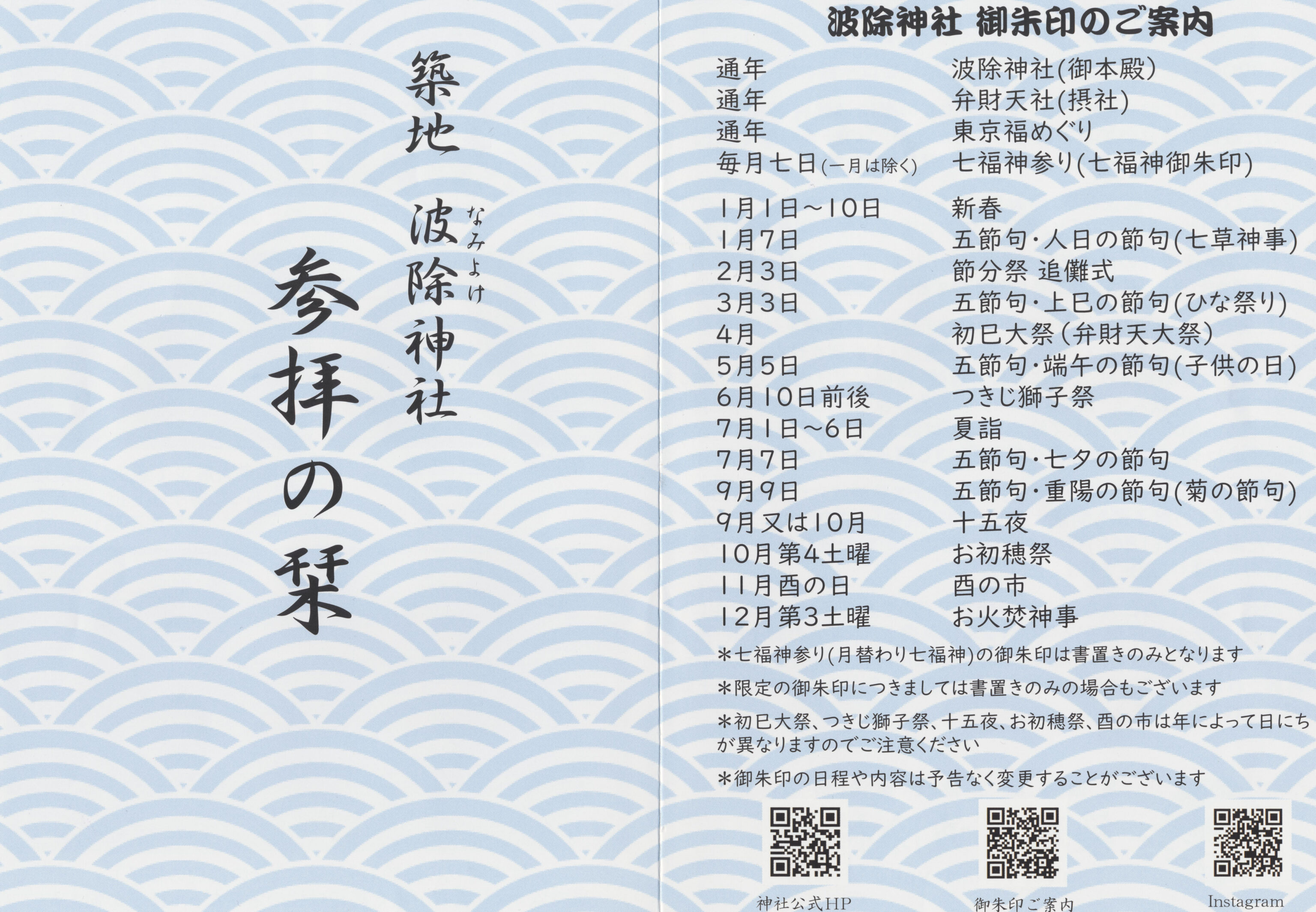
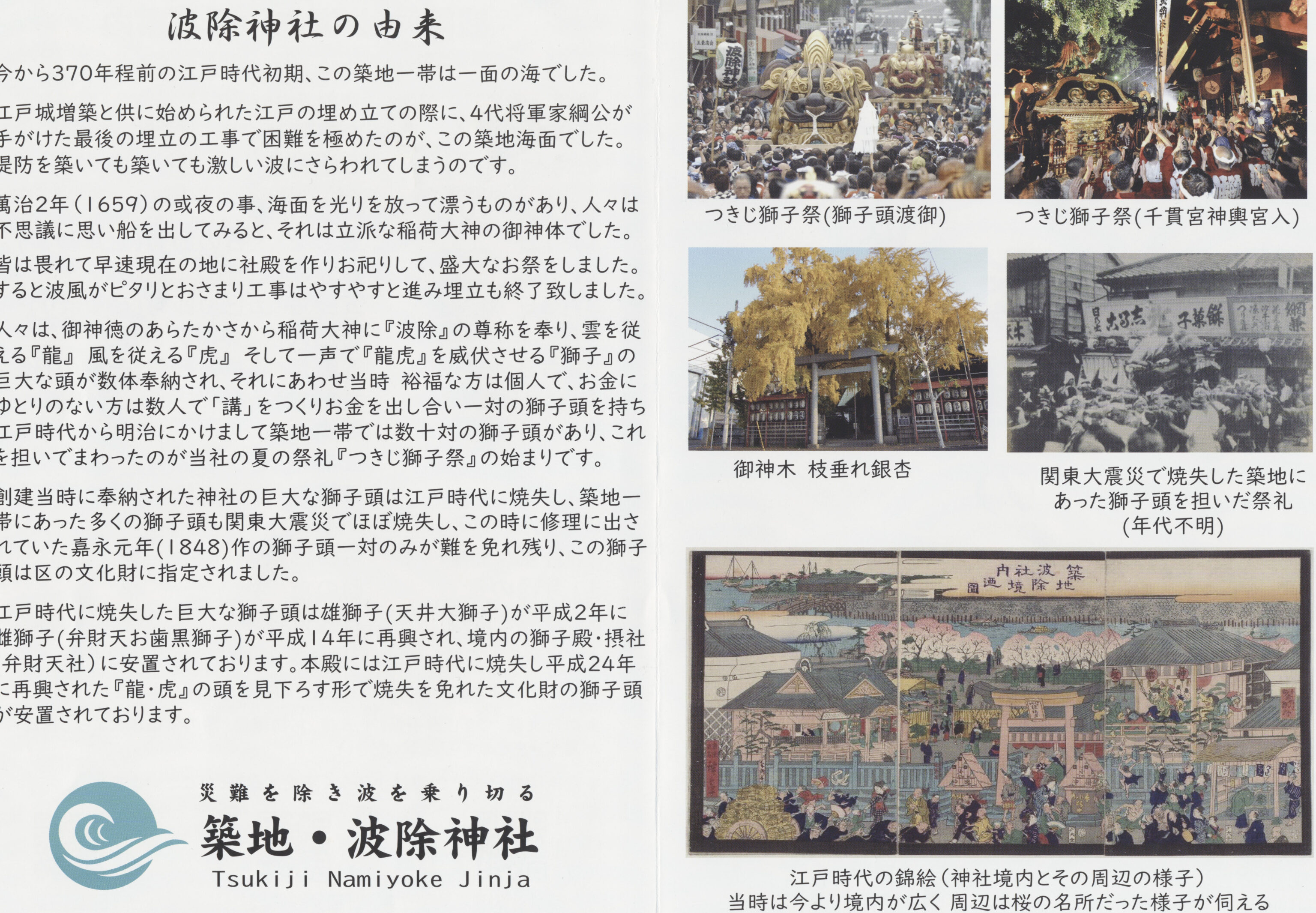
We picked up a small pamphlet describing the shrine in Japanese. It was a bit surprising that they had this given how small the shrine is!
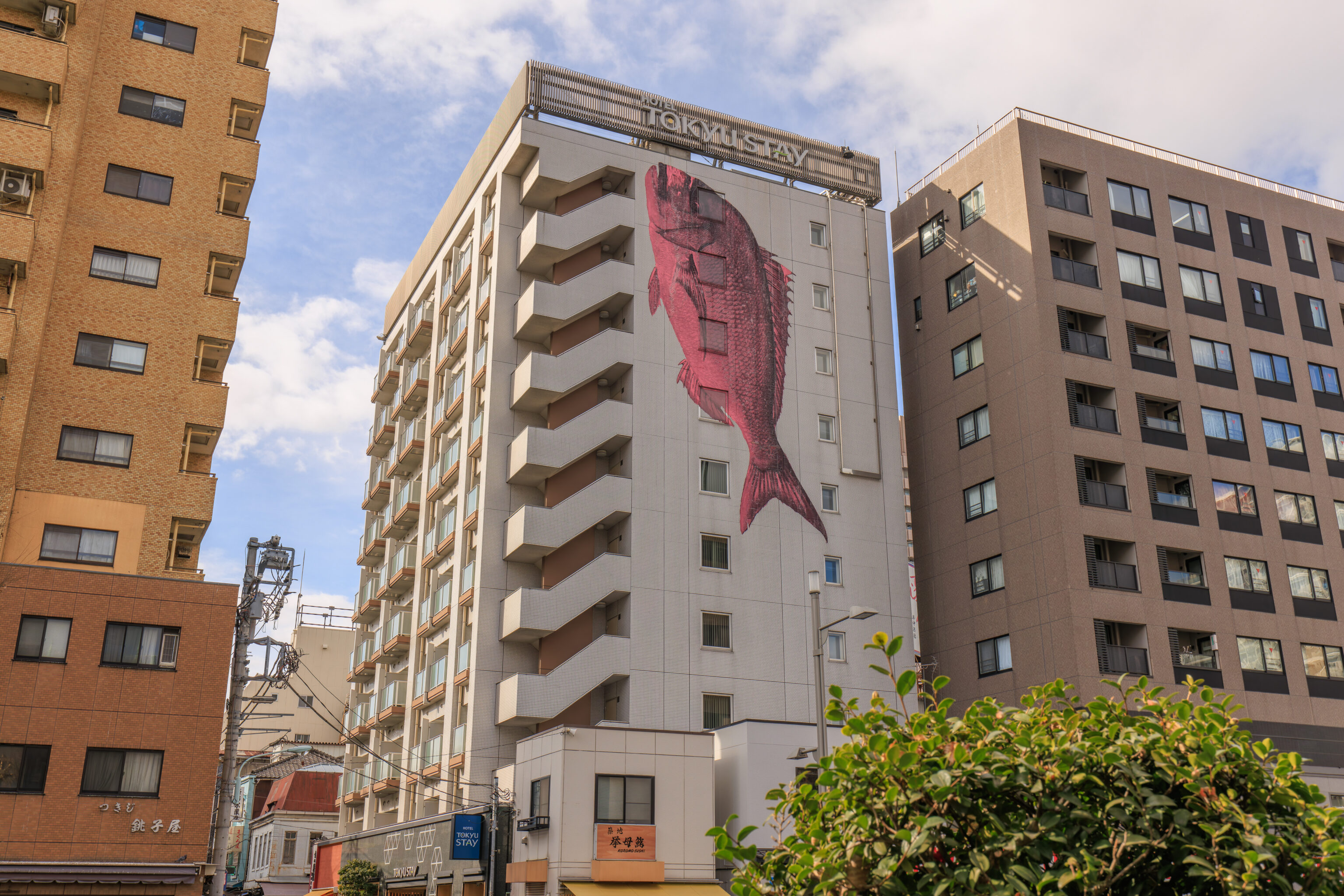
The crowds in the outer market were a bit much so we decided to escape! We walked to the north east to the closest major street and started walking to the northwest on the far side of the street. We noticed this hotel on the market side of the street, a Tokyu Stay, with a big fish mural on the side. On our side of the street, we decided to try a sushi restaurant, Tsukiji Sushiko. The restaurant looked fairly large and didn’t seem overly busy so we joined the queue.
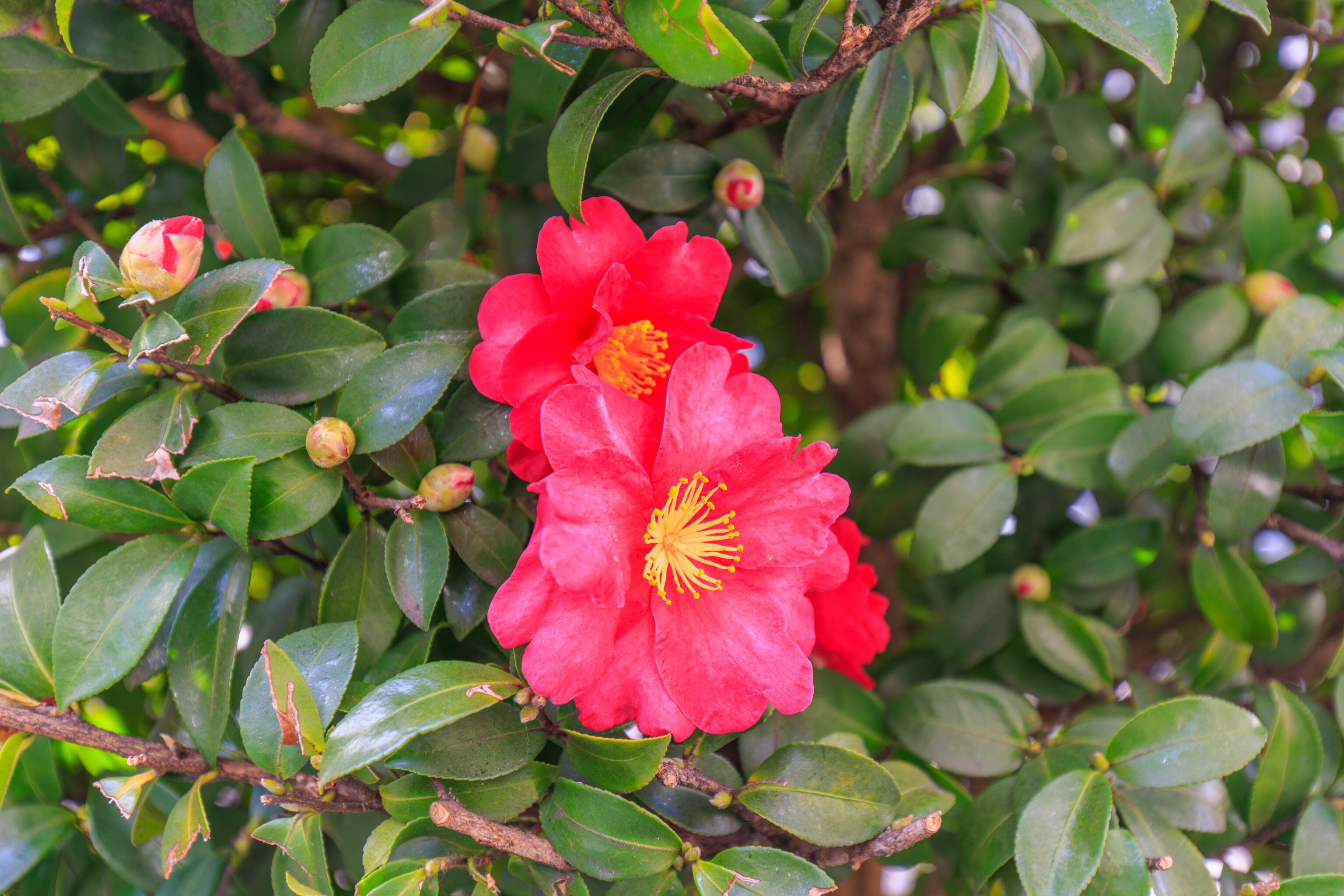
We noticed many camellias by the restaurant. We’ve seen a bunch of these flowers on this trip so far. We ended up having to wait for about an hour before being seated, which was longer than we expected. We had arrived not long after opening time meaning we basically had to wait for the first round of customers to finish eating.

We started with a variety of tuna. They were all fantastic! Japanese tuna is so much better than what is typically available in the US.
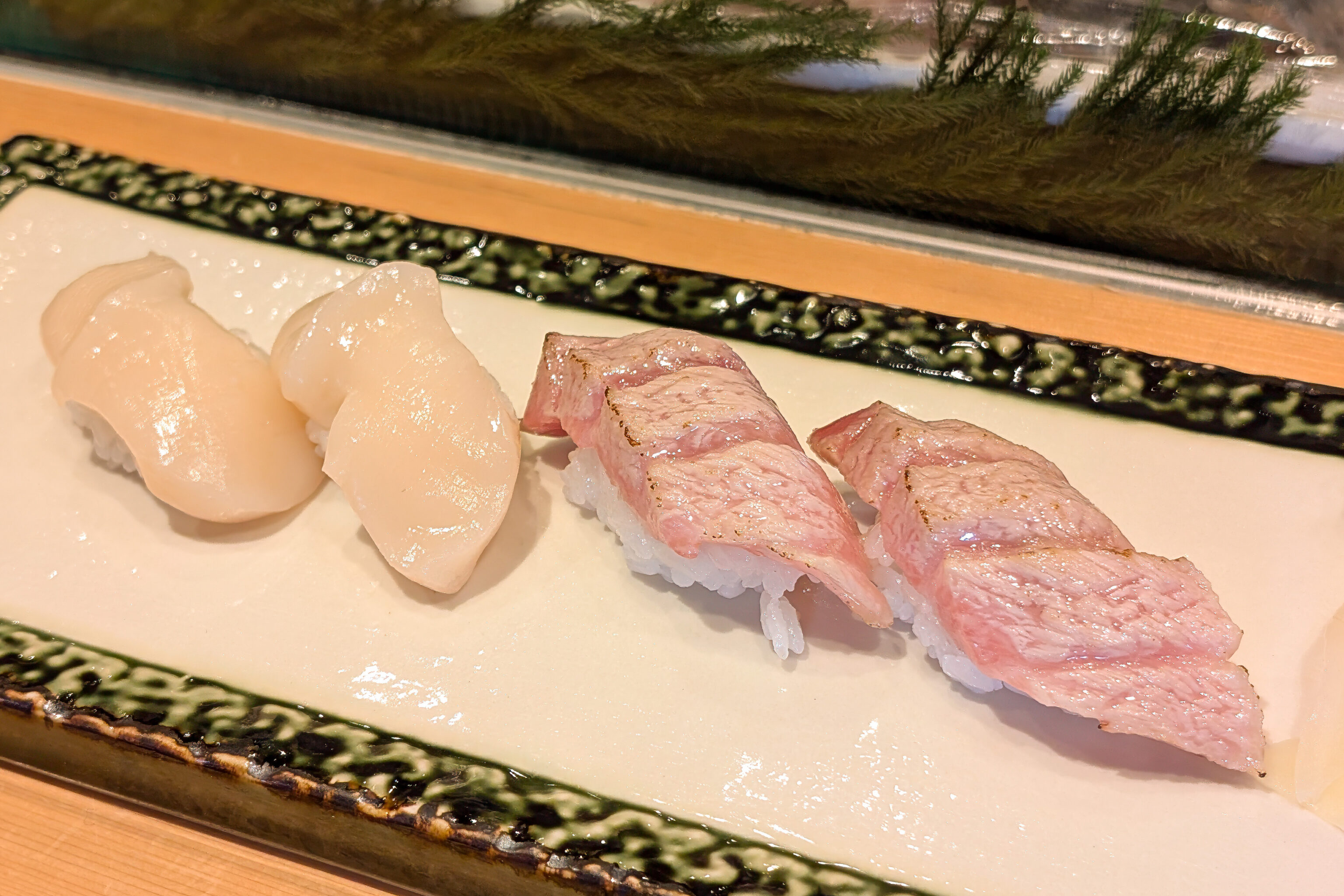
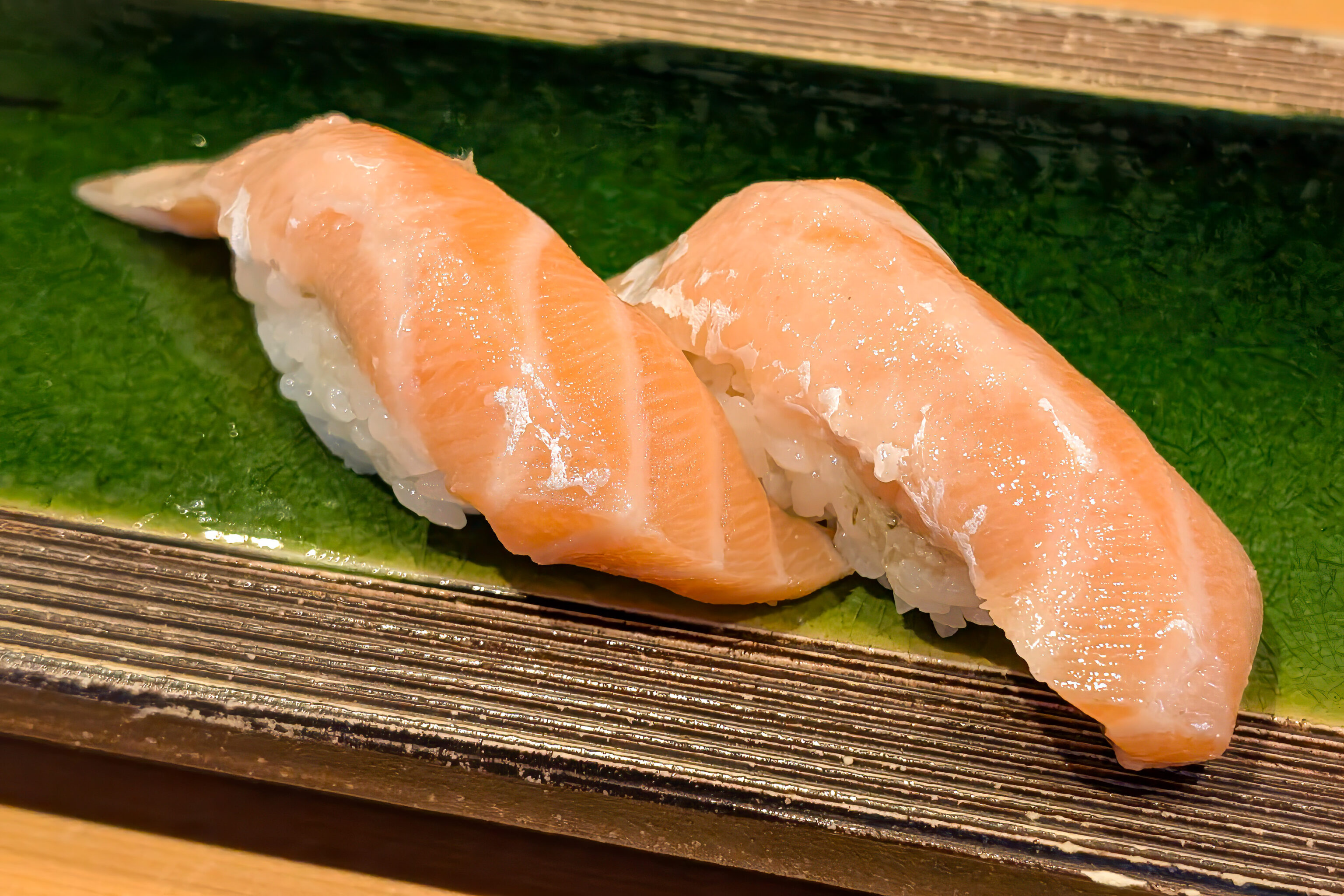

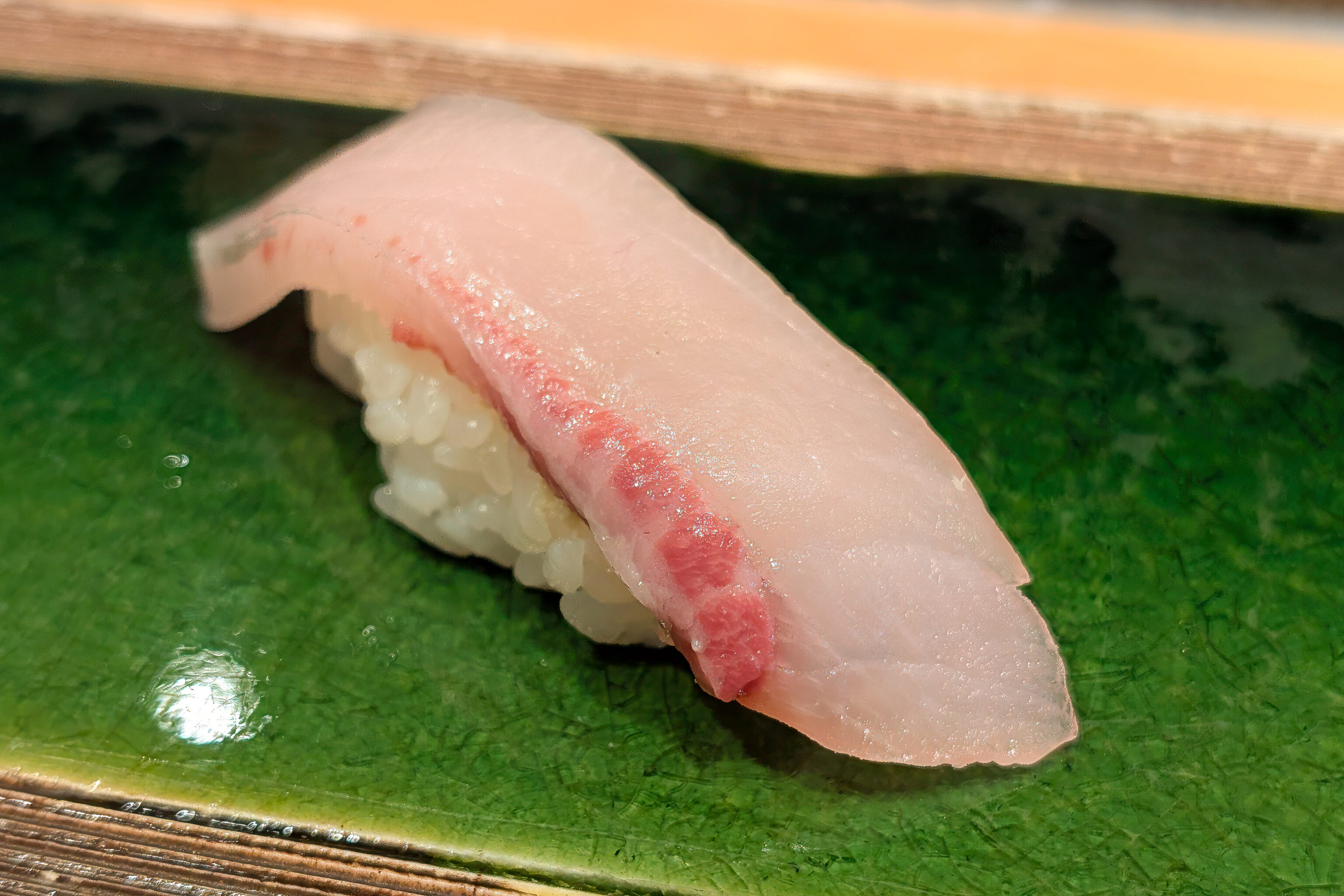
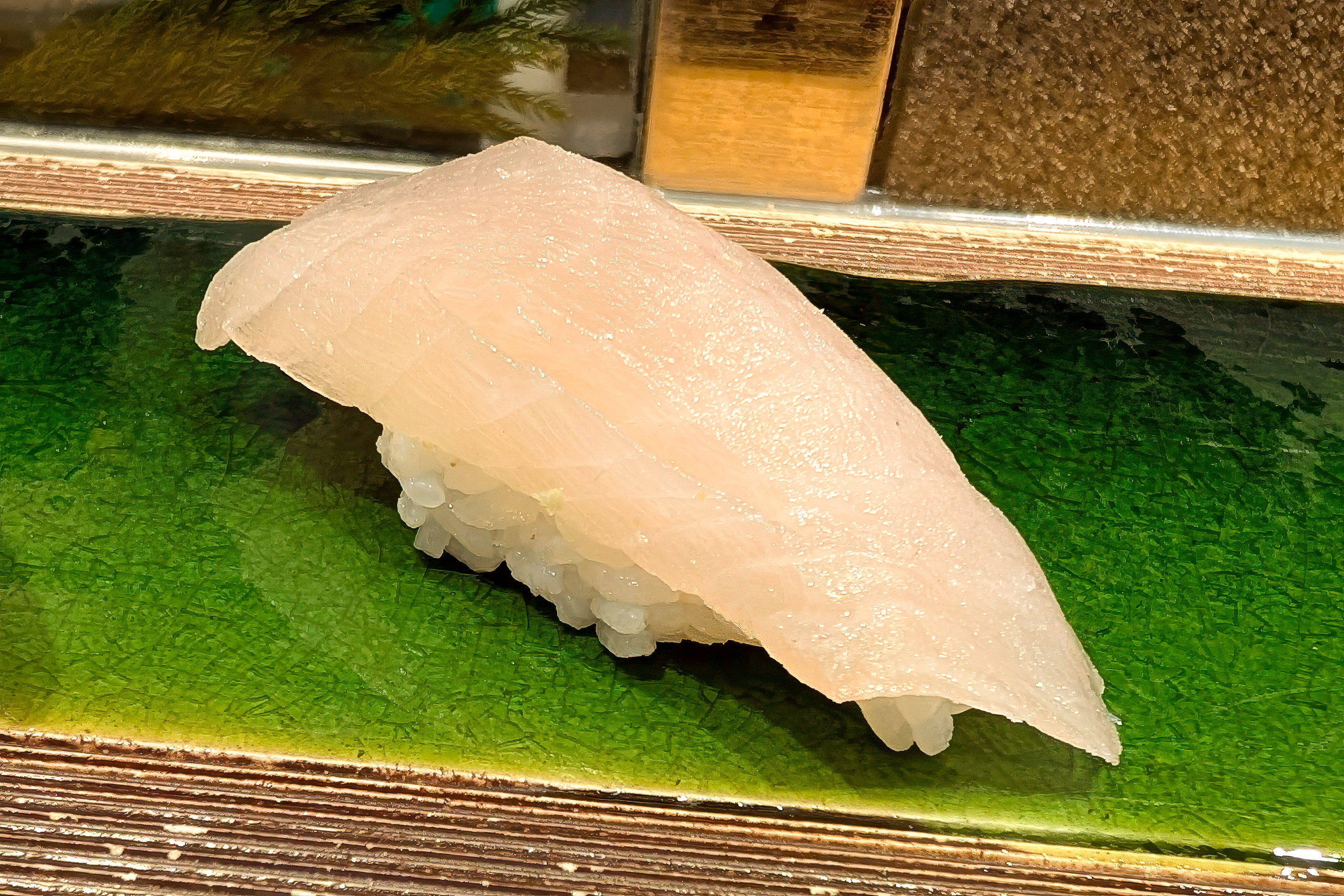
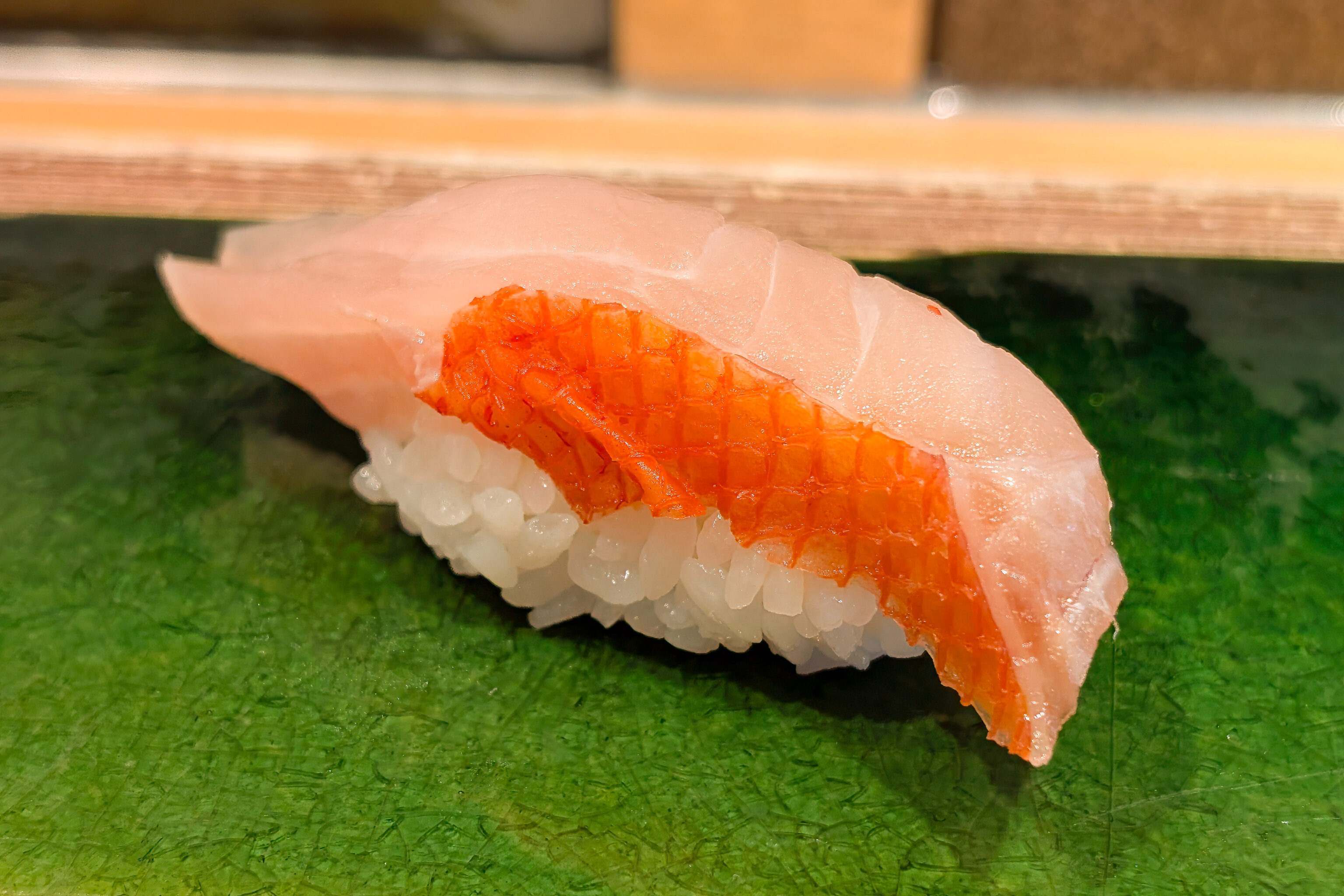
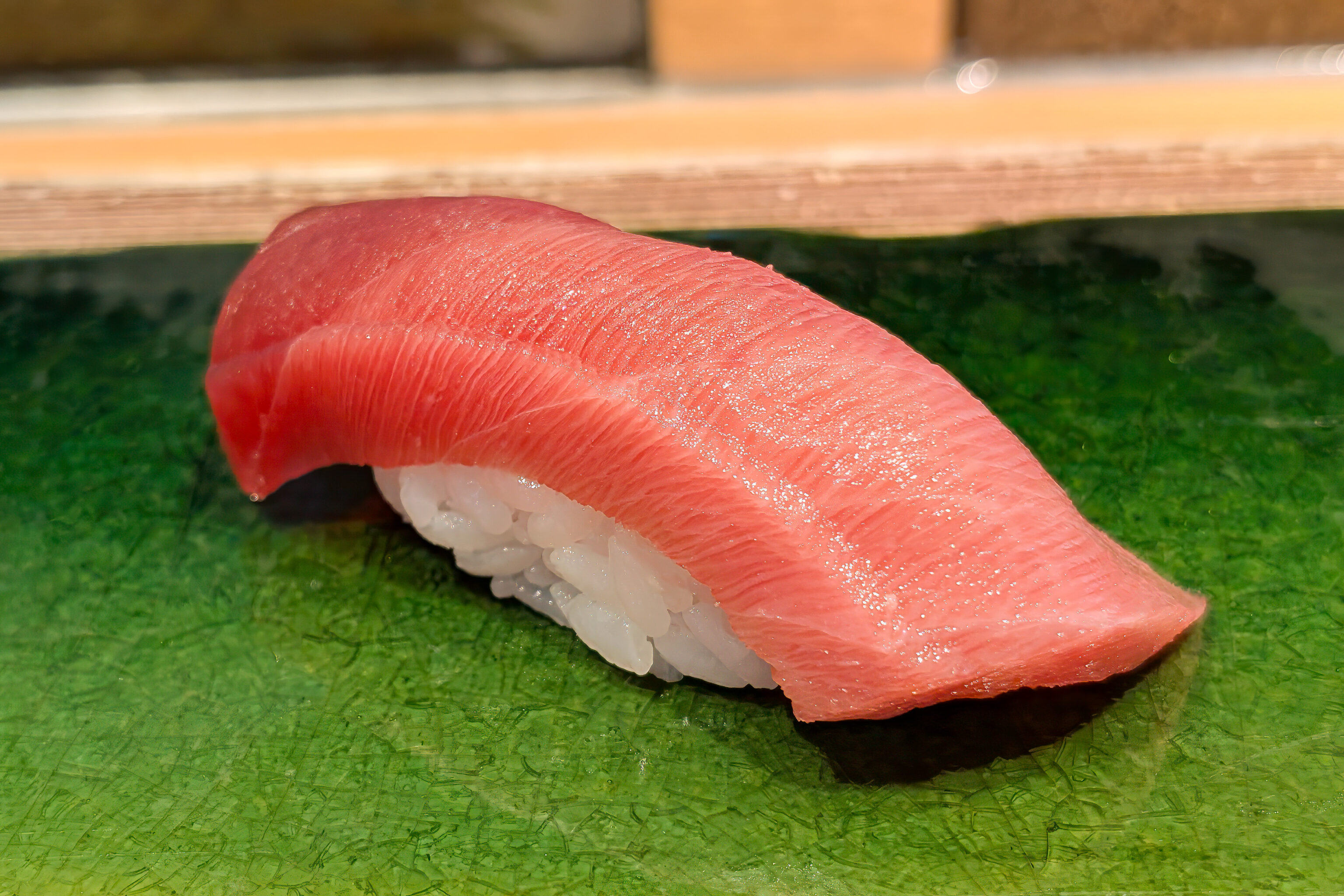

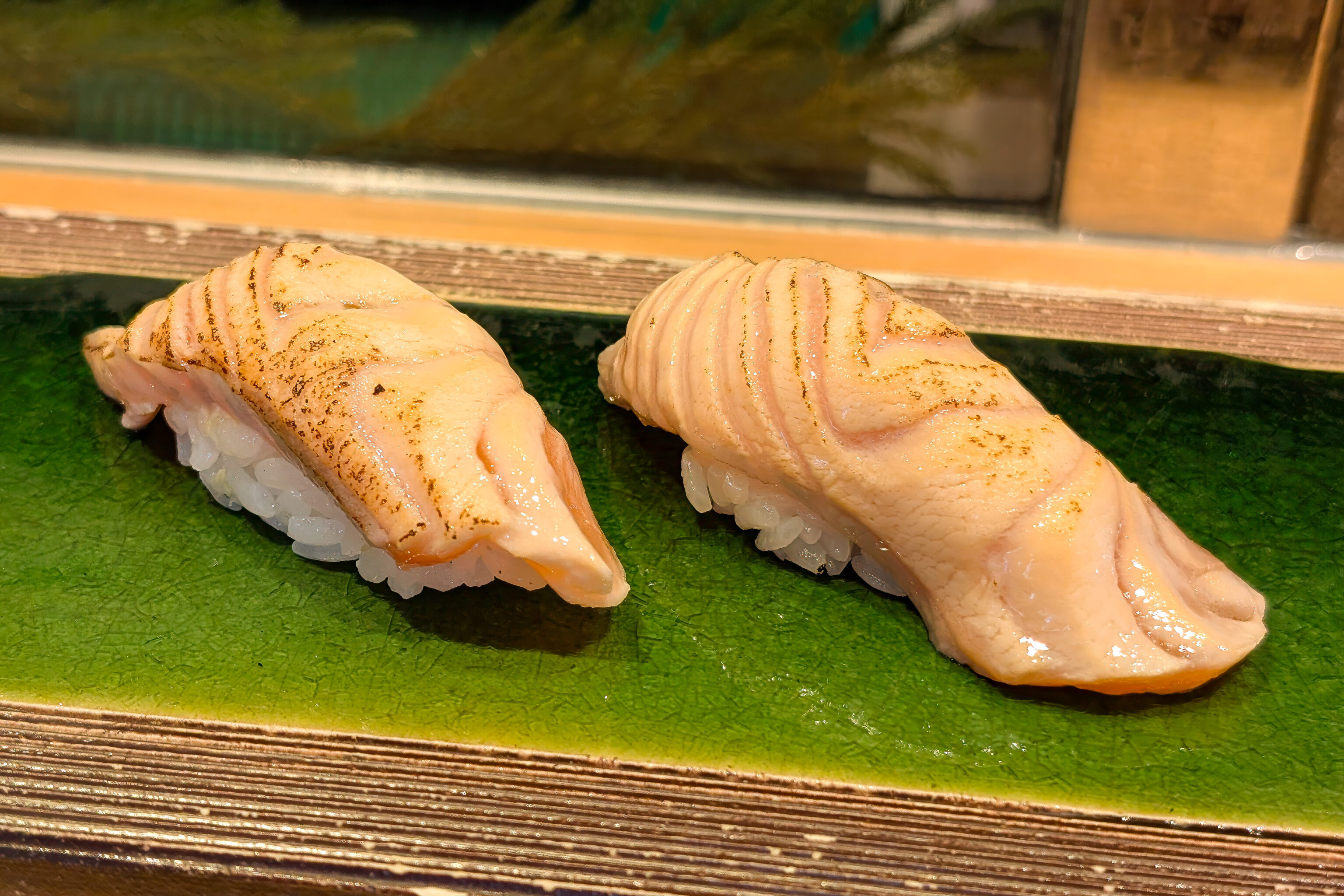
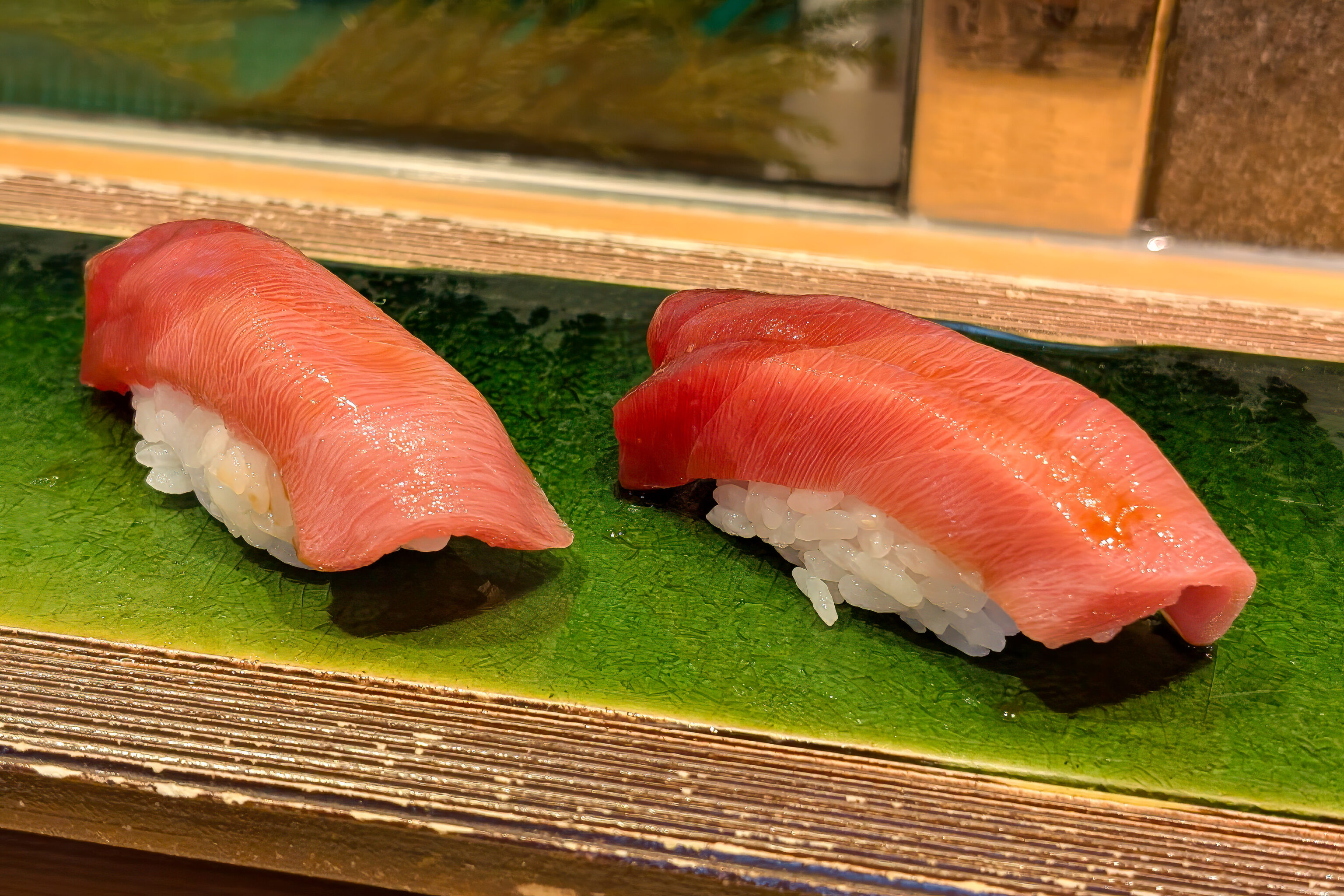
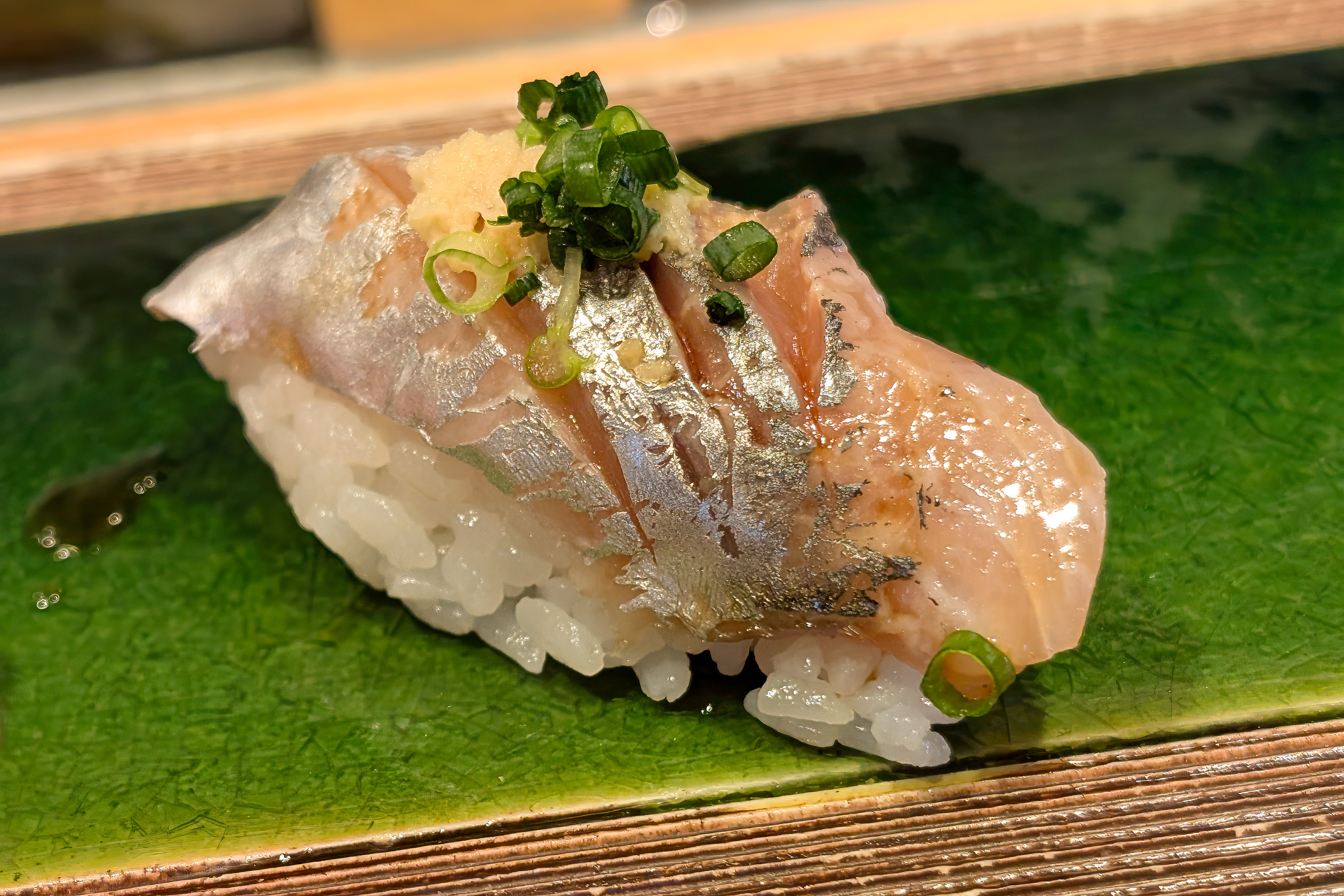
We then ordered even more sushi! This turned out to be an extremely satisfying meal. Much more satisfying than the donburi we had earlier in the morning!
Hibiya Koen
We decided to head to 日比谷公園 Hibiya Park next. We started walking to 築地駅 Tsukiji Station on the 日比谷線 Hibiya Line.
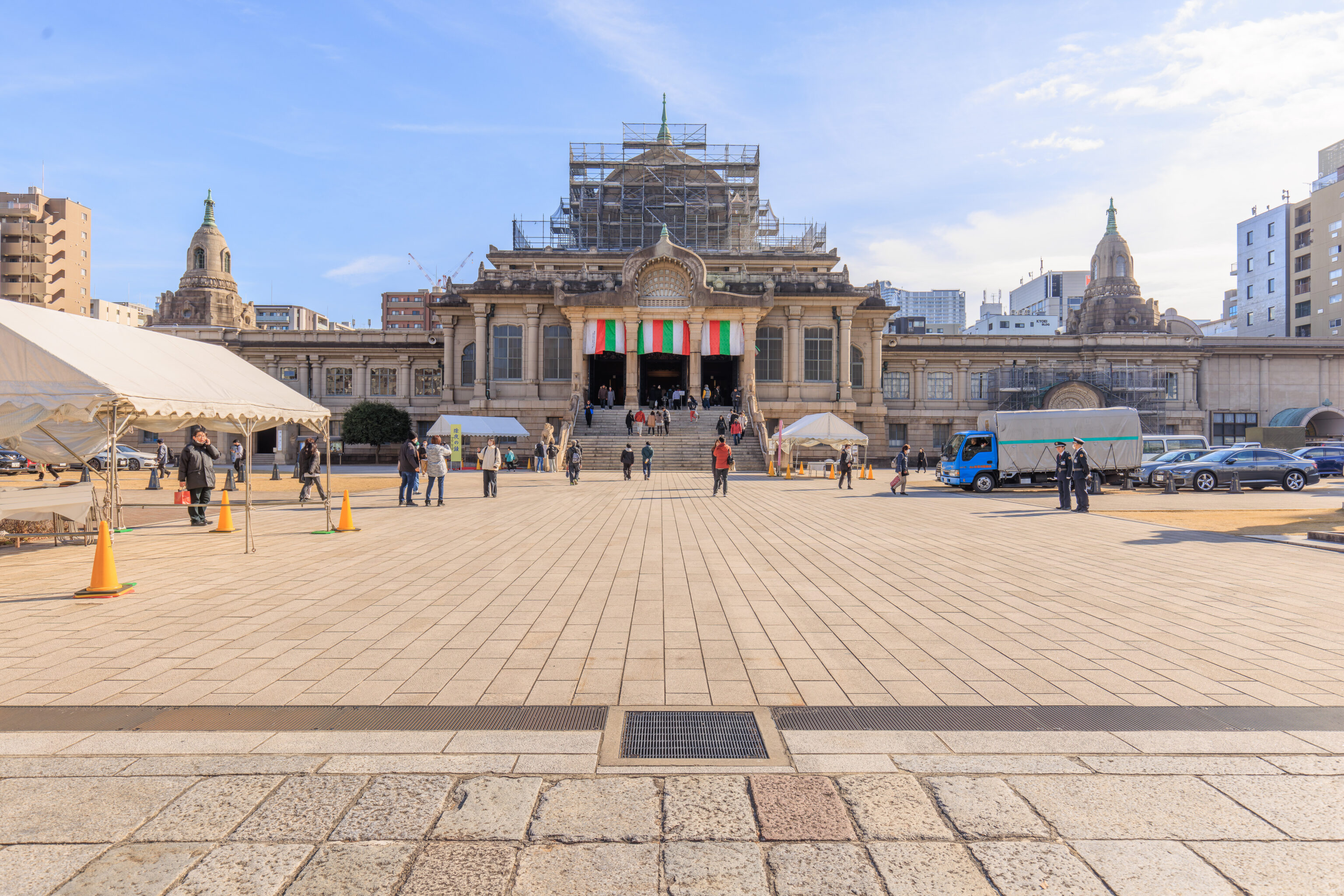
This temple, the Tsukiji Hongan-ji, was just around the corner from the Tsukiji Sushiko. Its very different in appearance from the typical wooden Japanese temples.
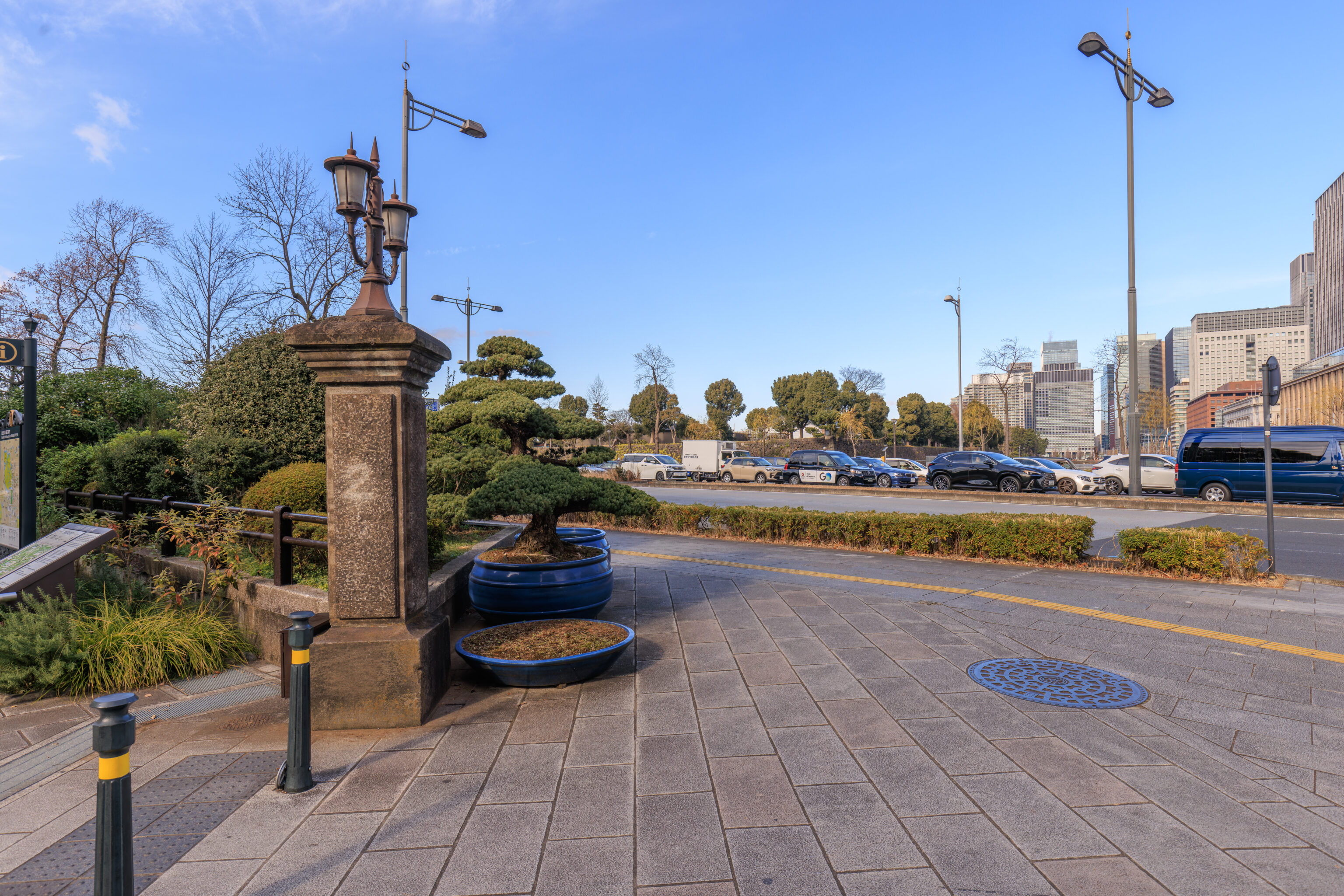
After taking the metro to Hibiya station, we were right by the park’s northeast entrance.
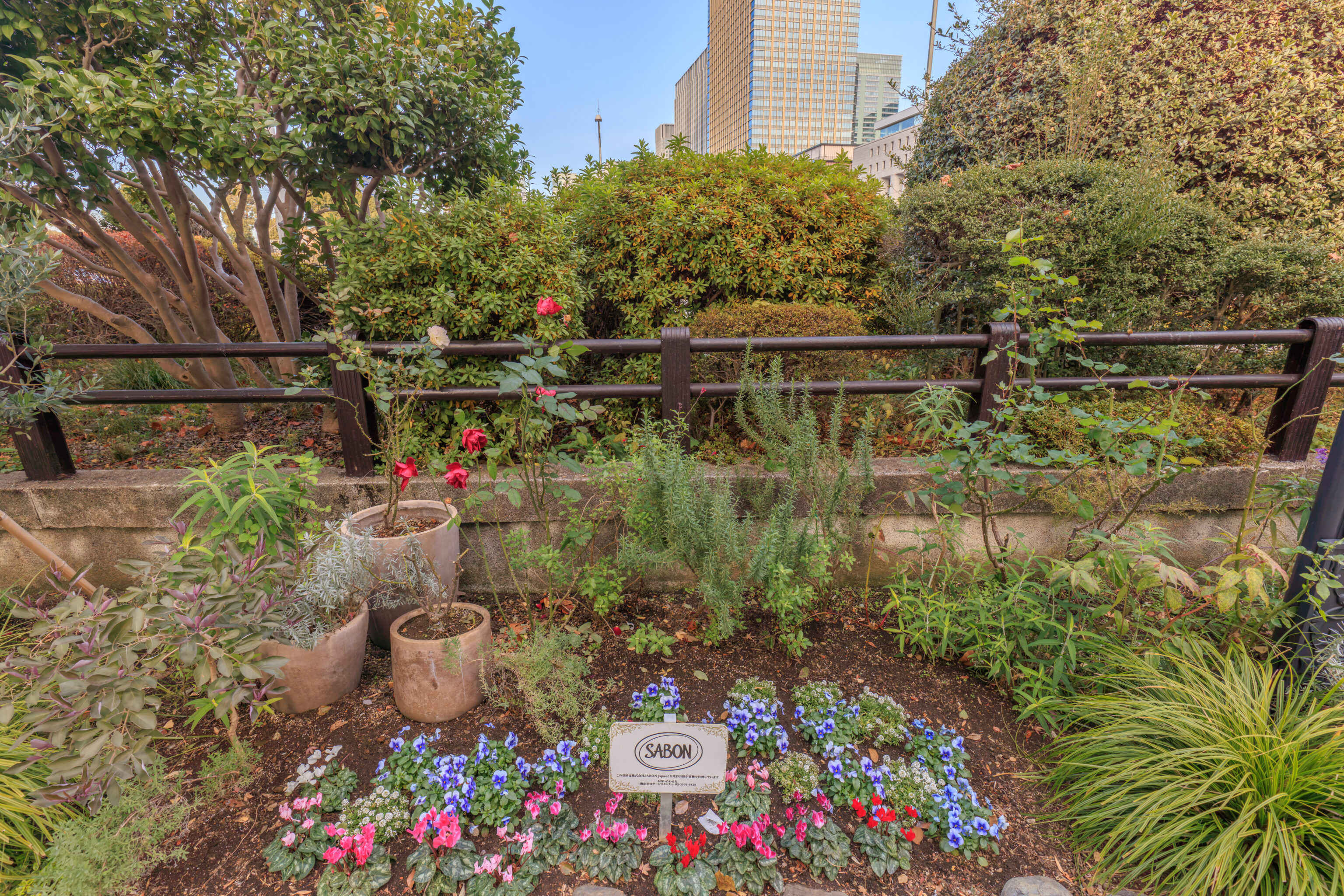
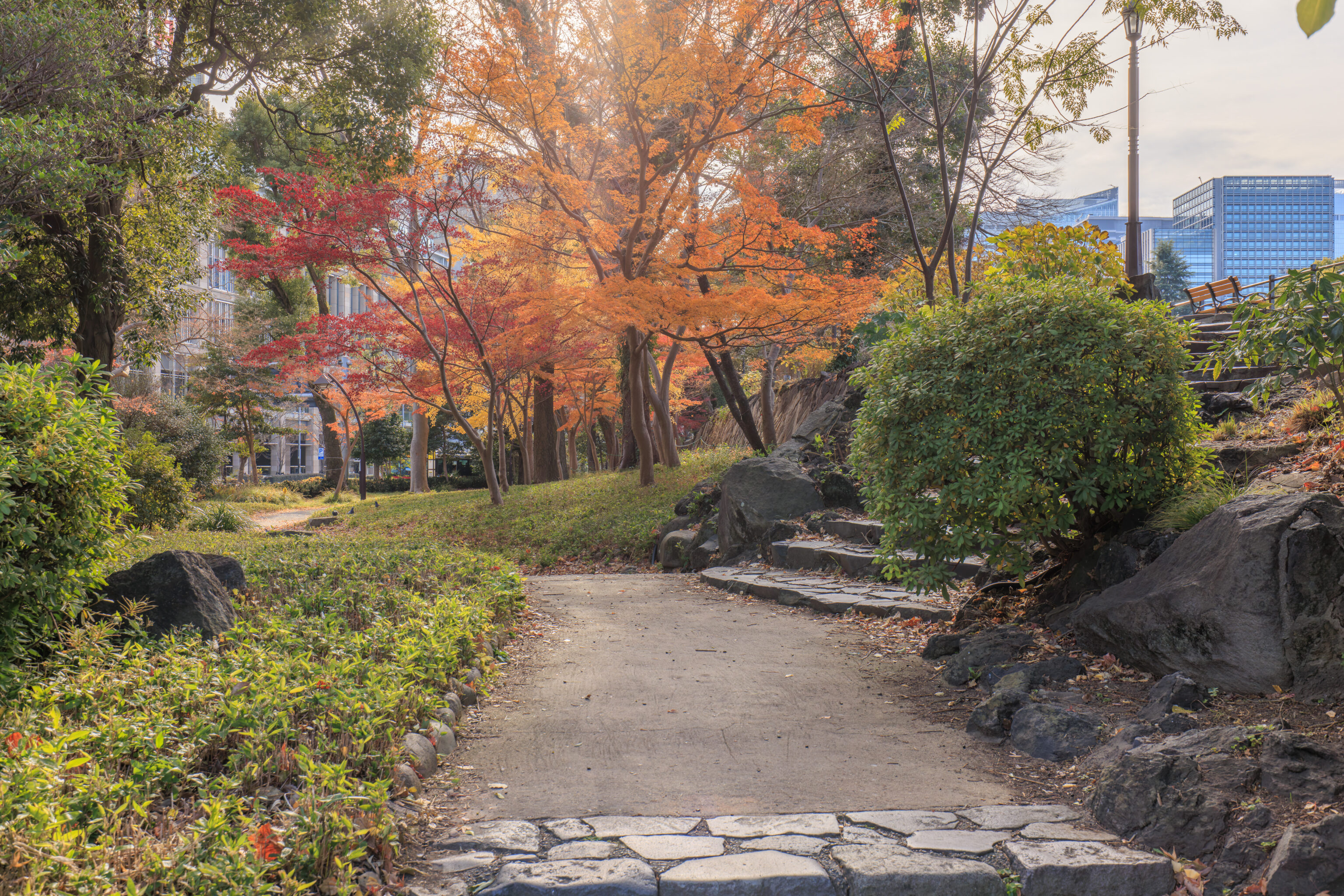
We entered the park, noticing a few pretty flowers and some fall foliage!
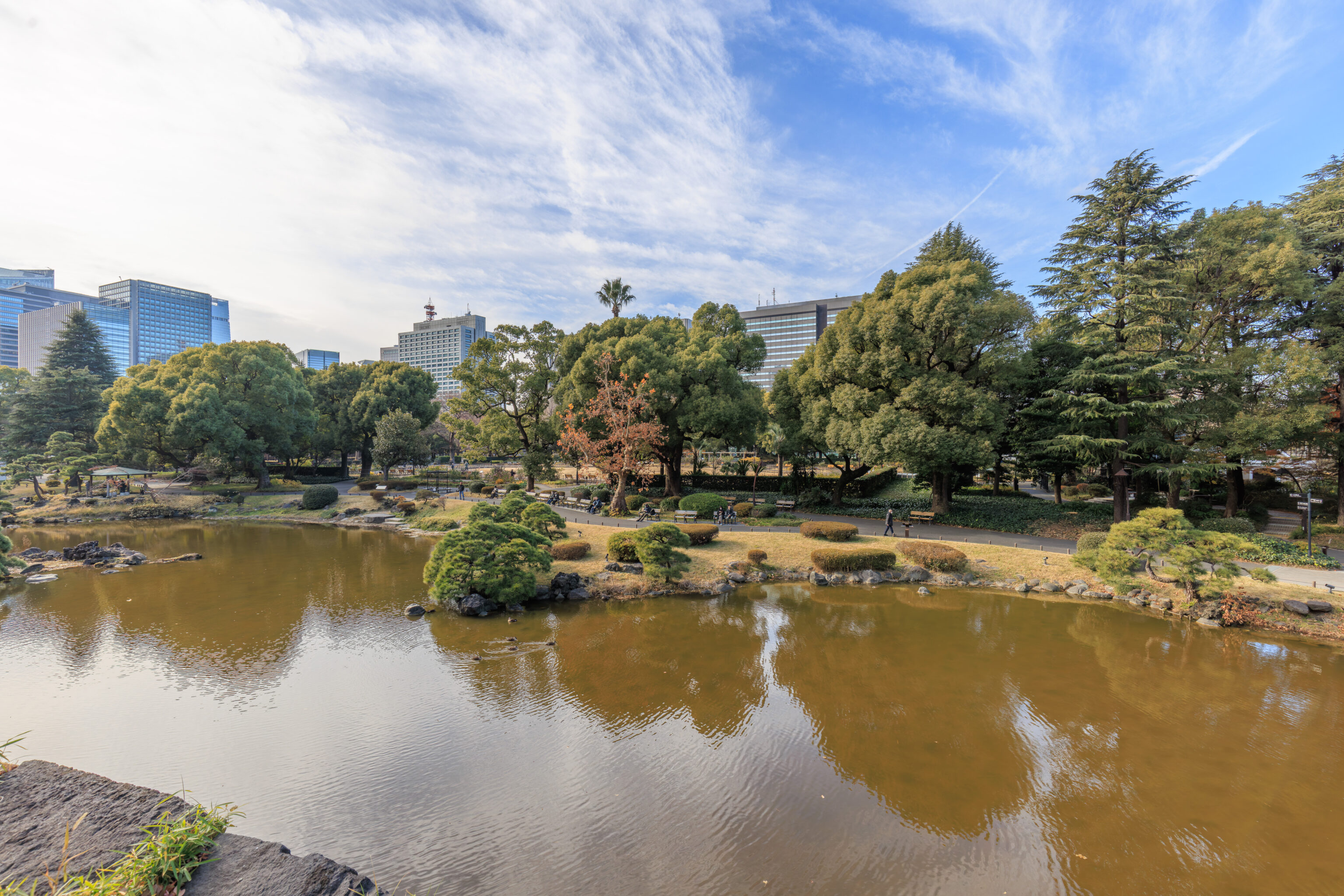
We walked up a few stairs to have this view! This was a nice spot to sit as there were ample benches.
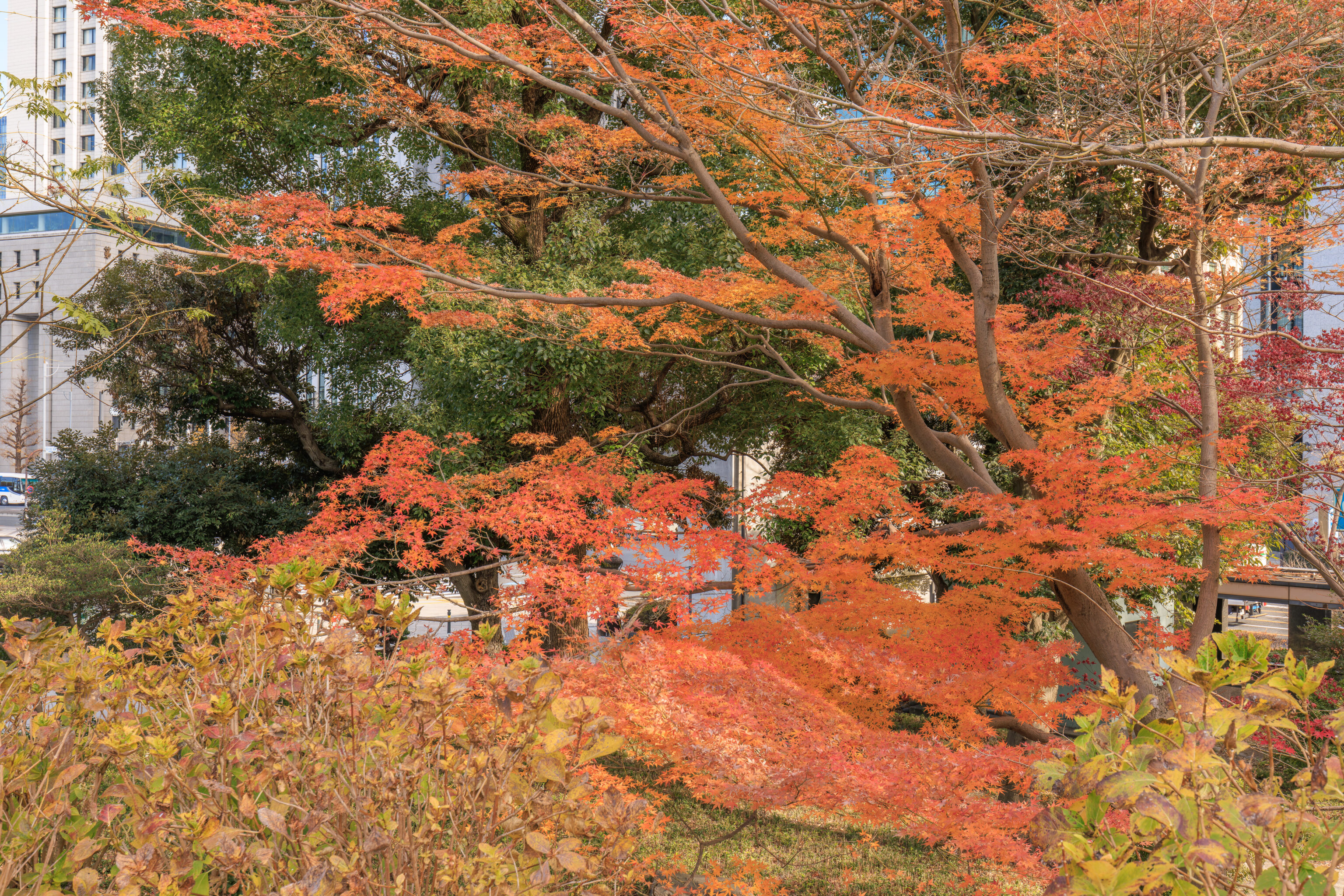
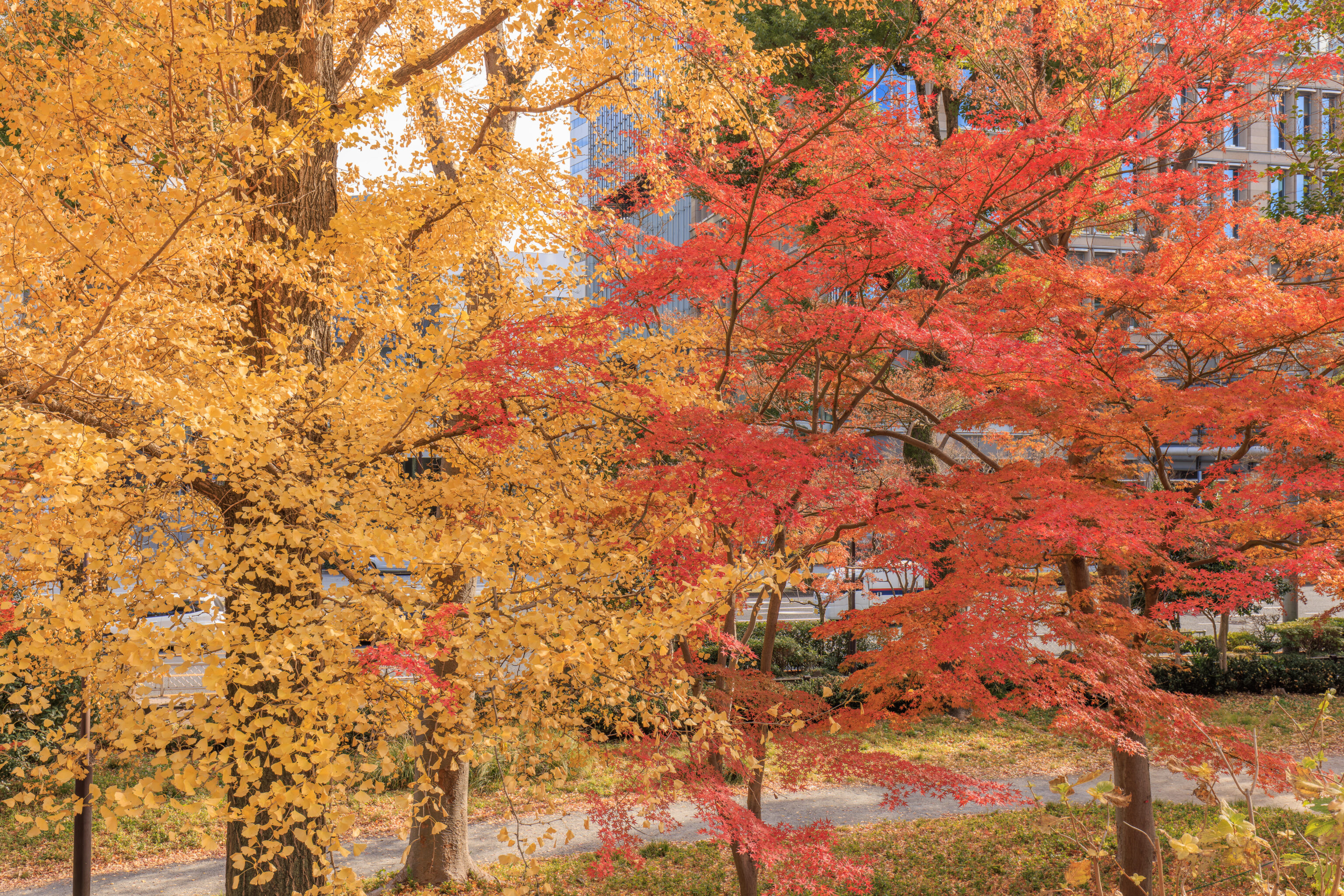
We definitely did not expect this much fall foliage to still be present in Tokyo!
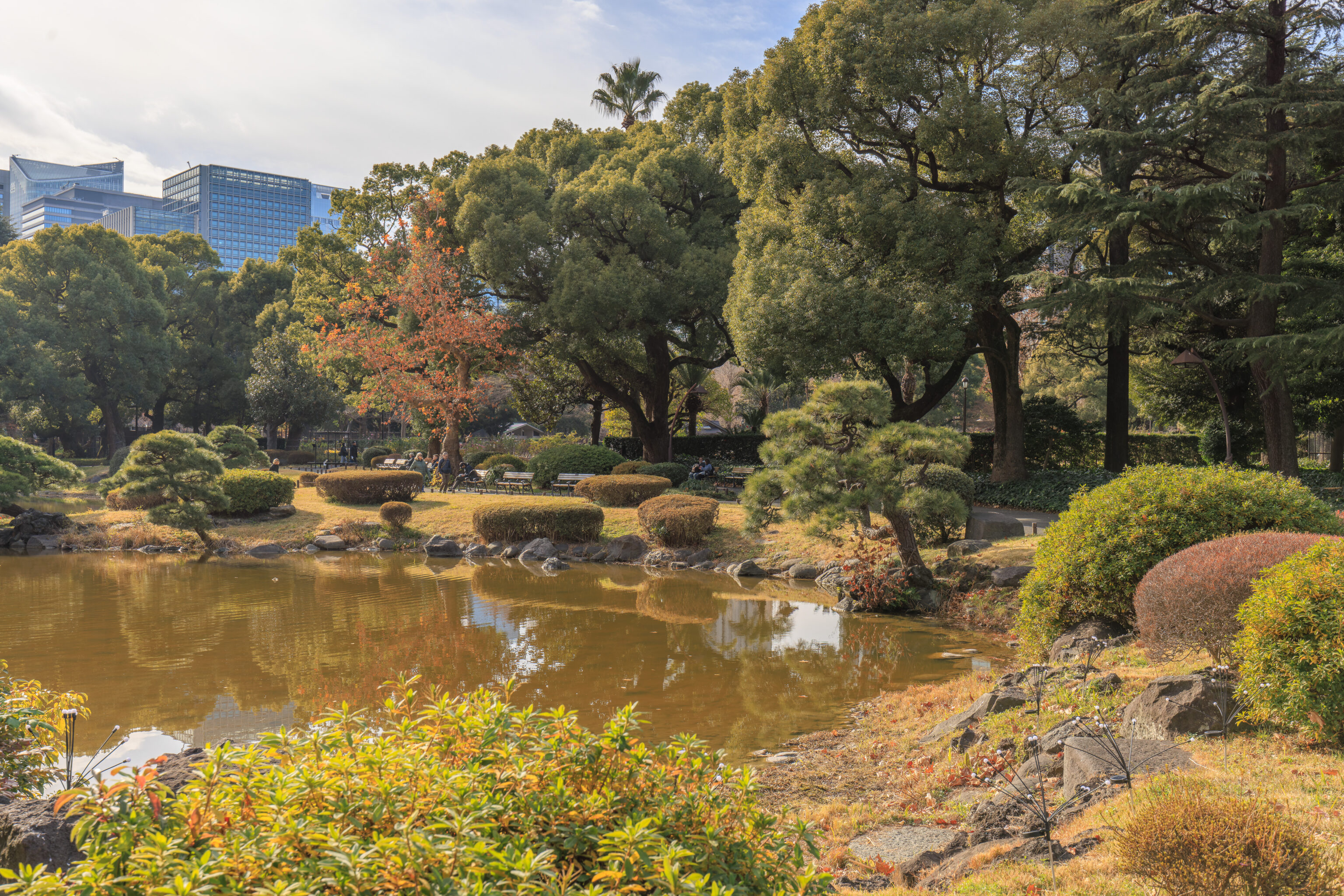
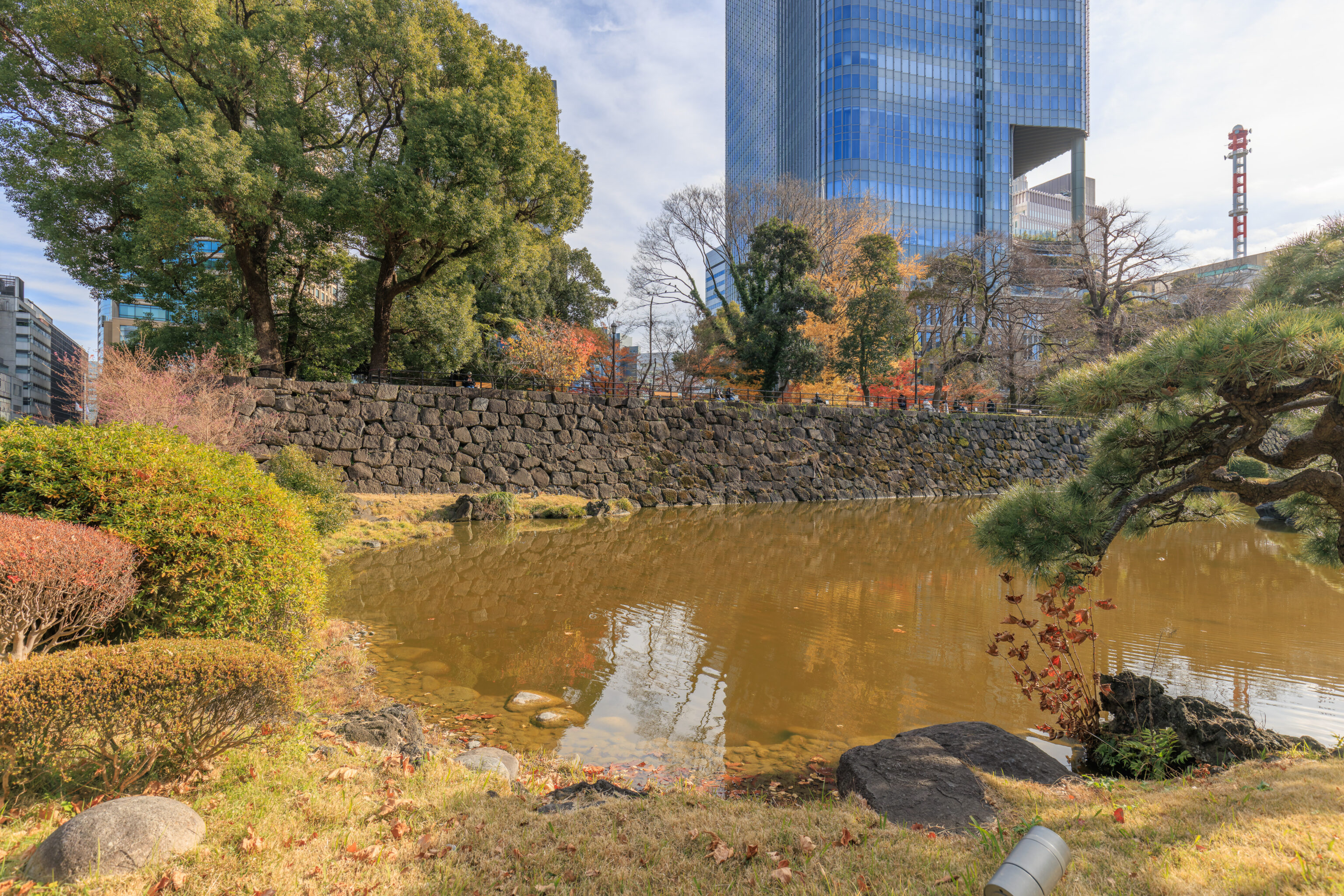
We left the hill that we were on and walked around to the other side of the pond. From here, we can see that the hill is really the top of a stone wall. A nearby sign explained that this pond was originally part of Edo Castle’s moat. The language used is a bit vague but it seems the wall may also have been part of the original structure that was here between two gates.
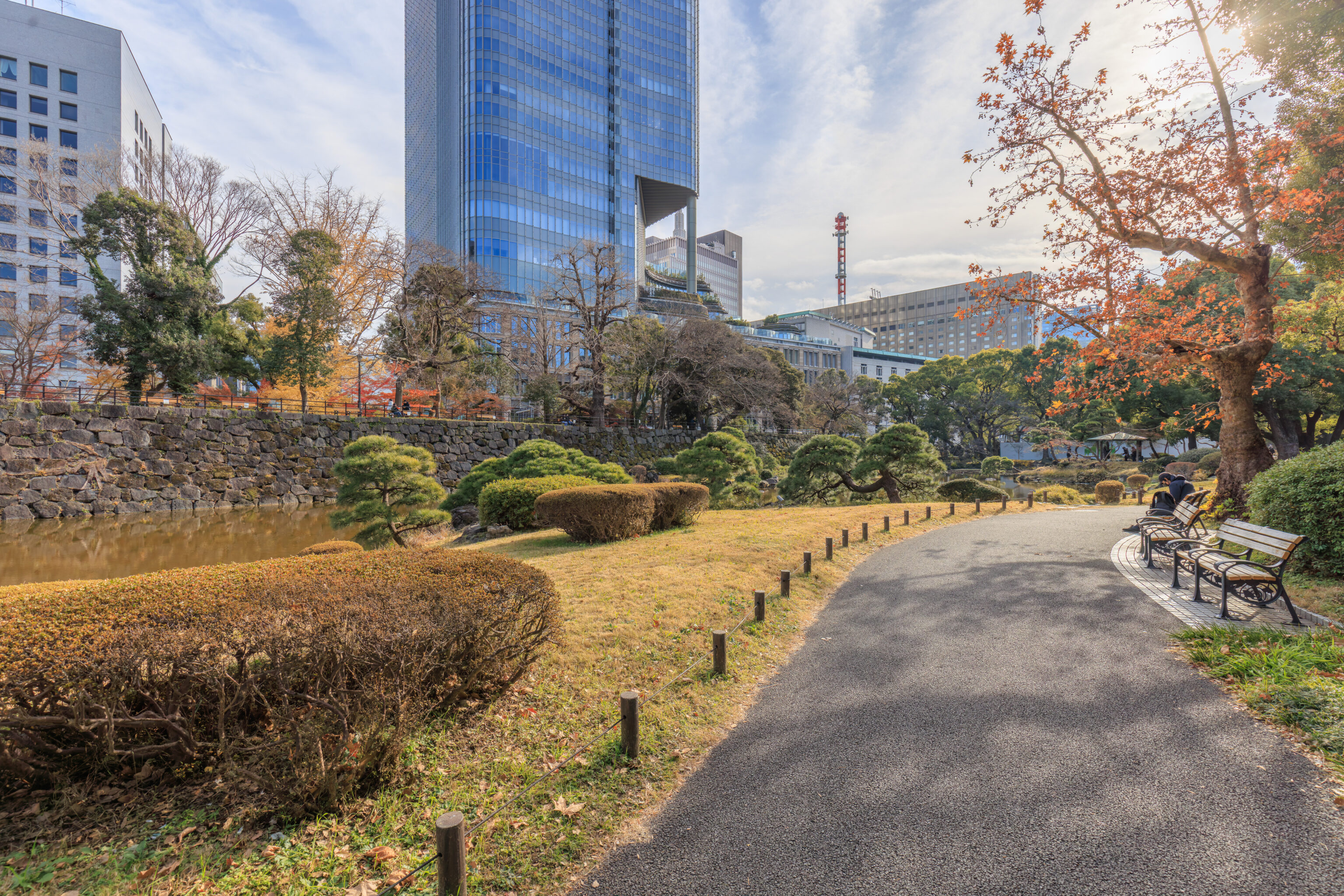
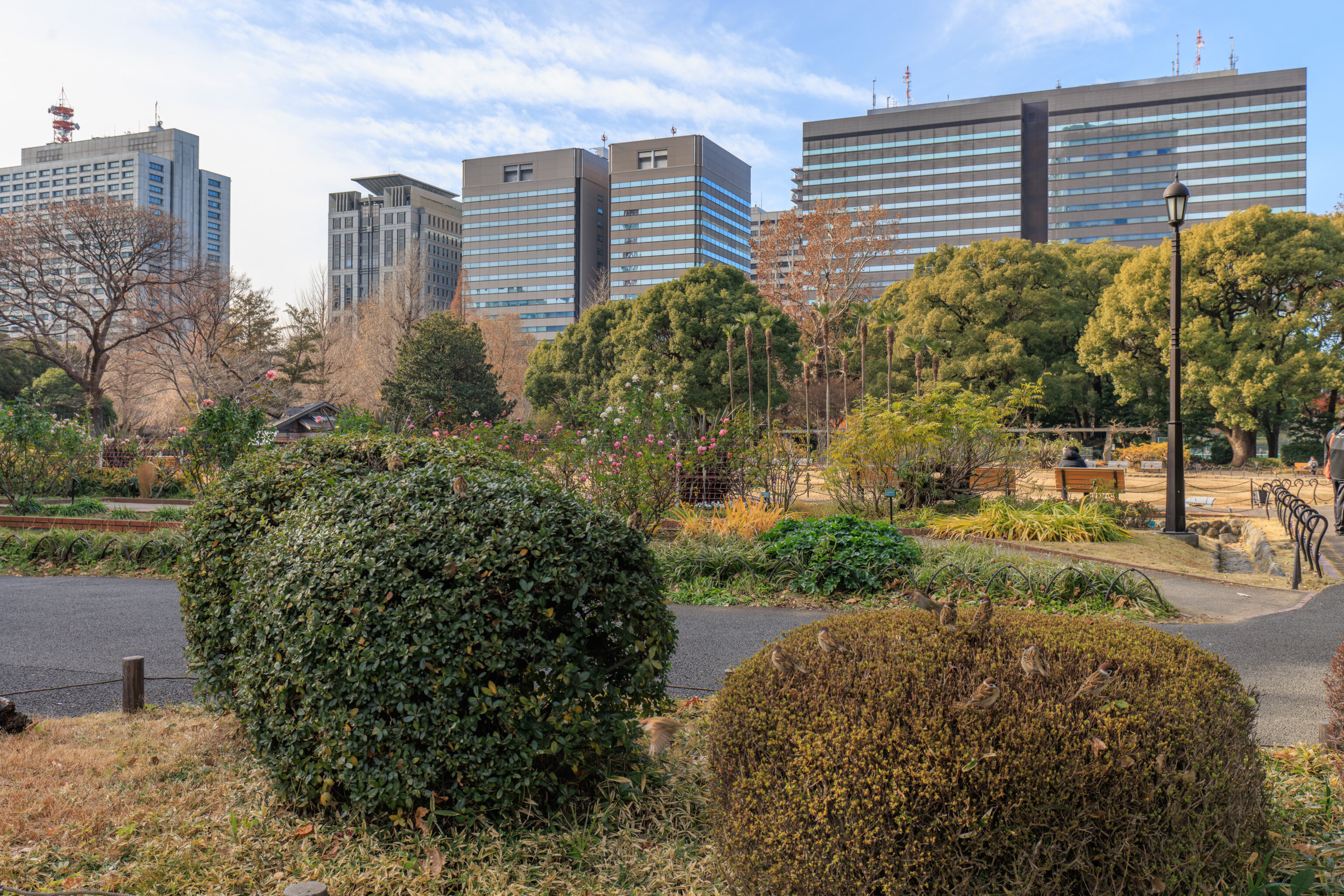
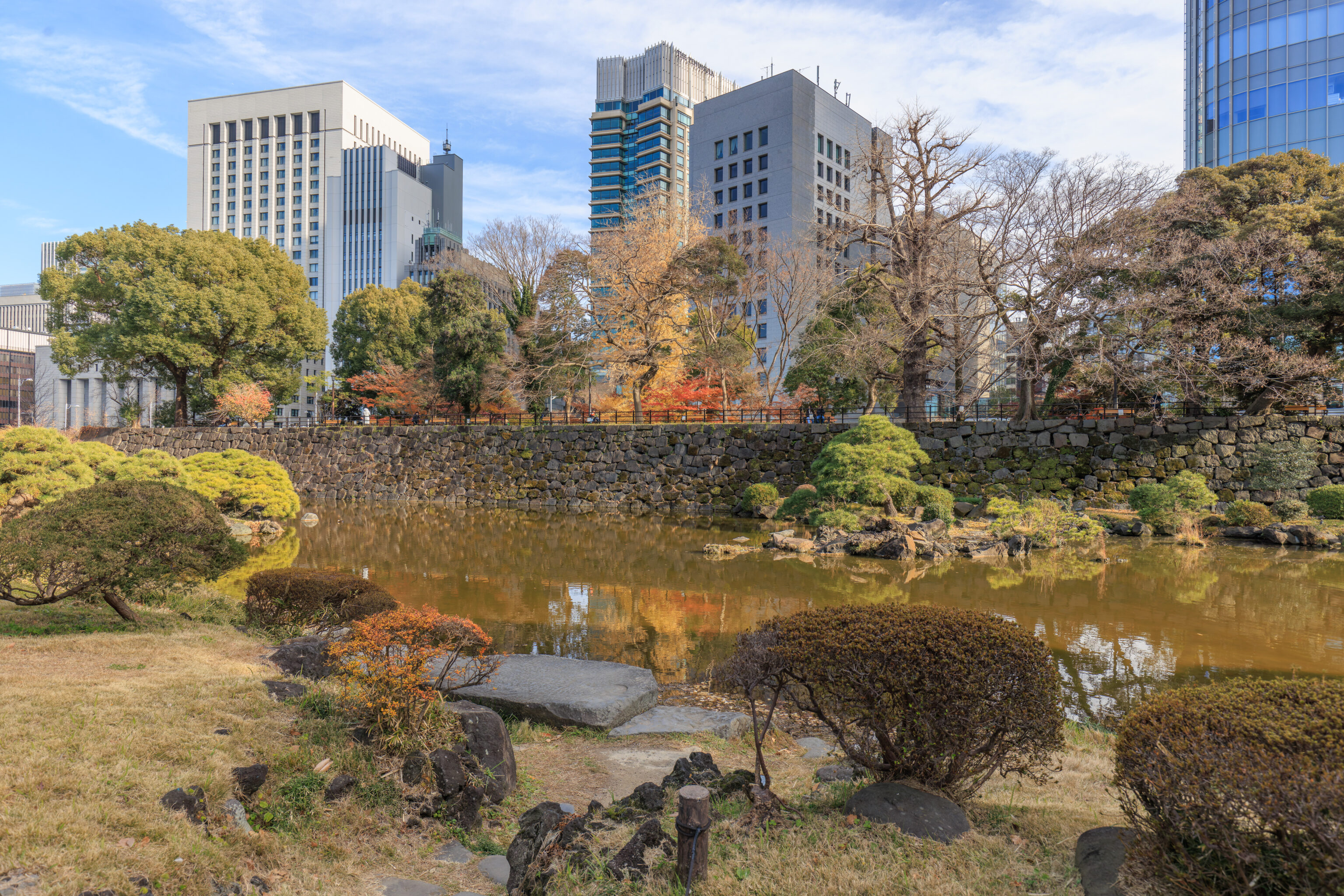
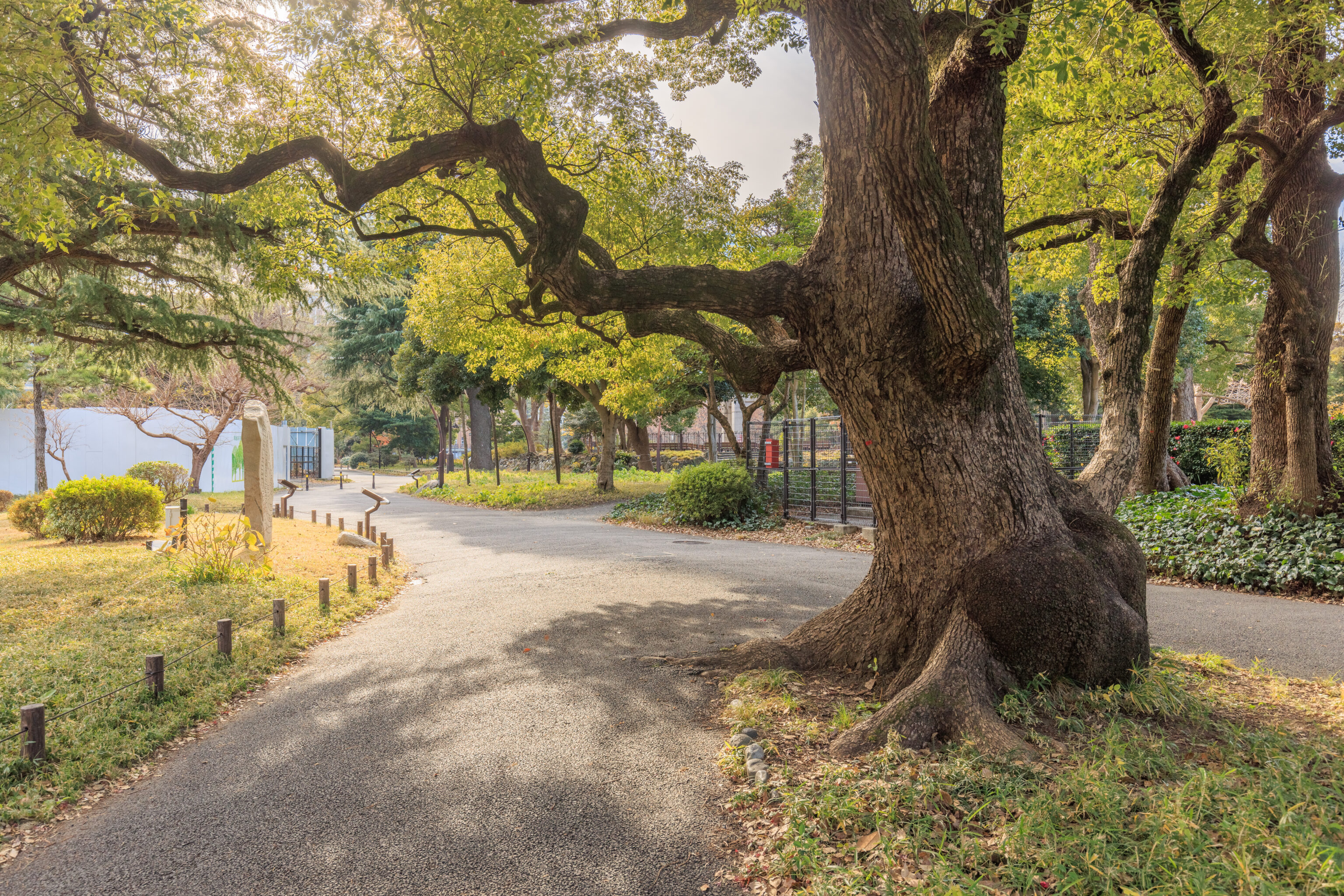
We continued on, walking to the southwest along the pond’s west side.
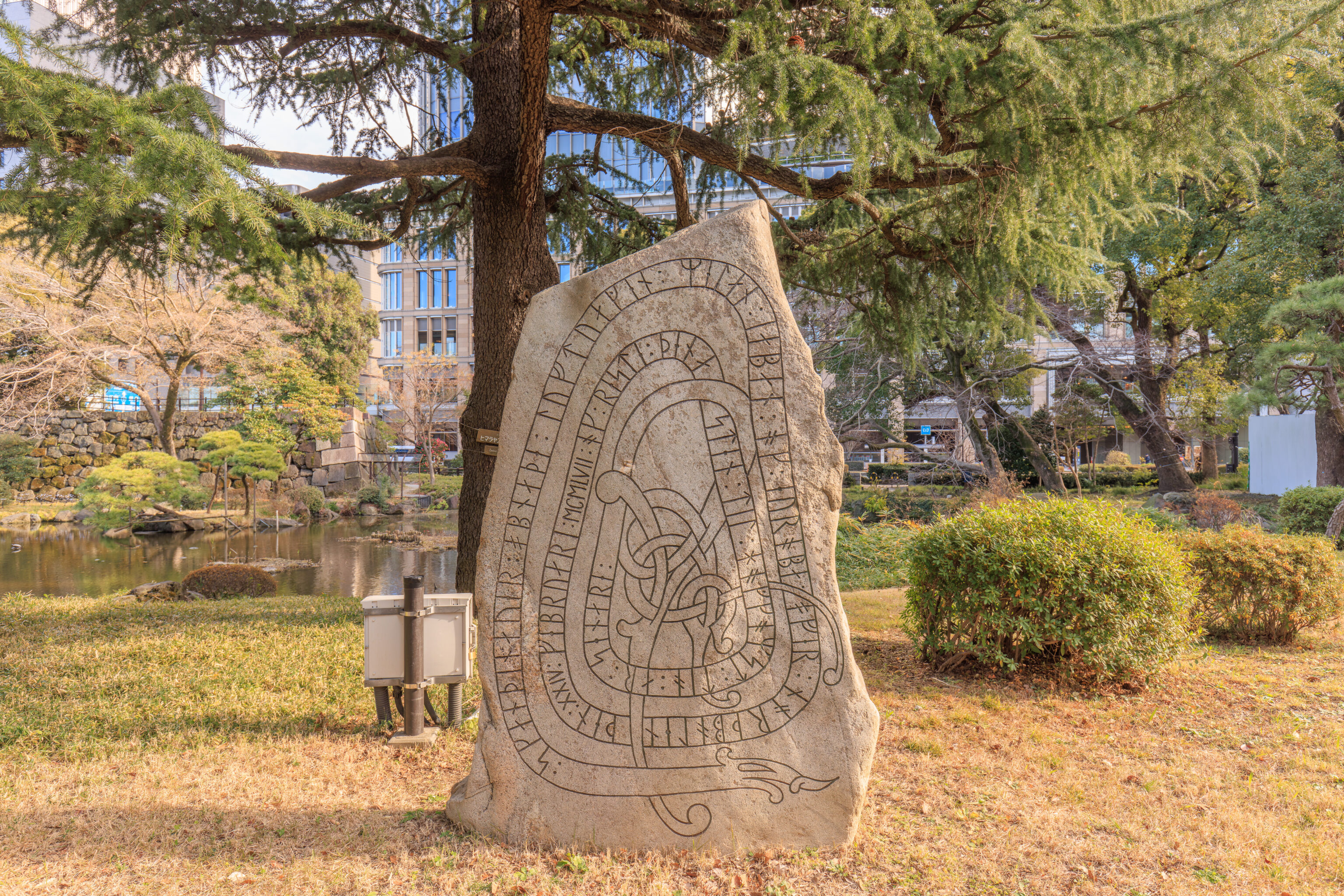
This stone tablet is quite unlike anything we’ve seen in Japan. What is it? A stone plaque explains in English:
This stone is a replica of a Scandinavian Viking Rune Stone.
Translation of the rune inscription
Scandinavians opened the air route between Japan and Europe over the North Pole on February 24, 1957 and presented this stone in commemoration ten years later
That’s certainly interesting and different!
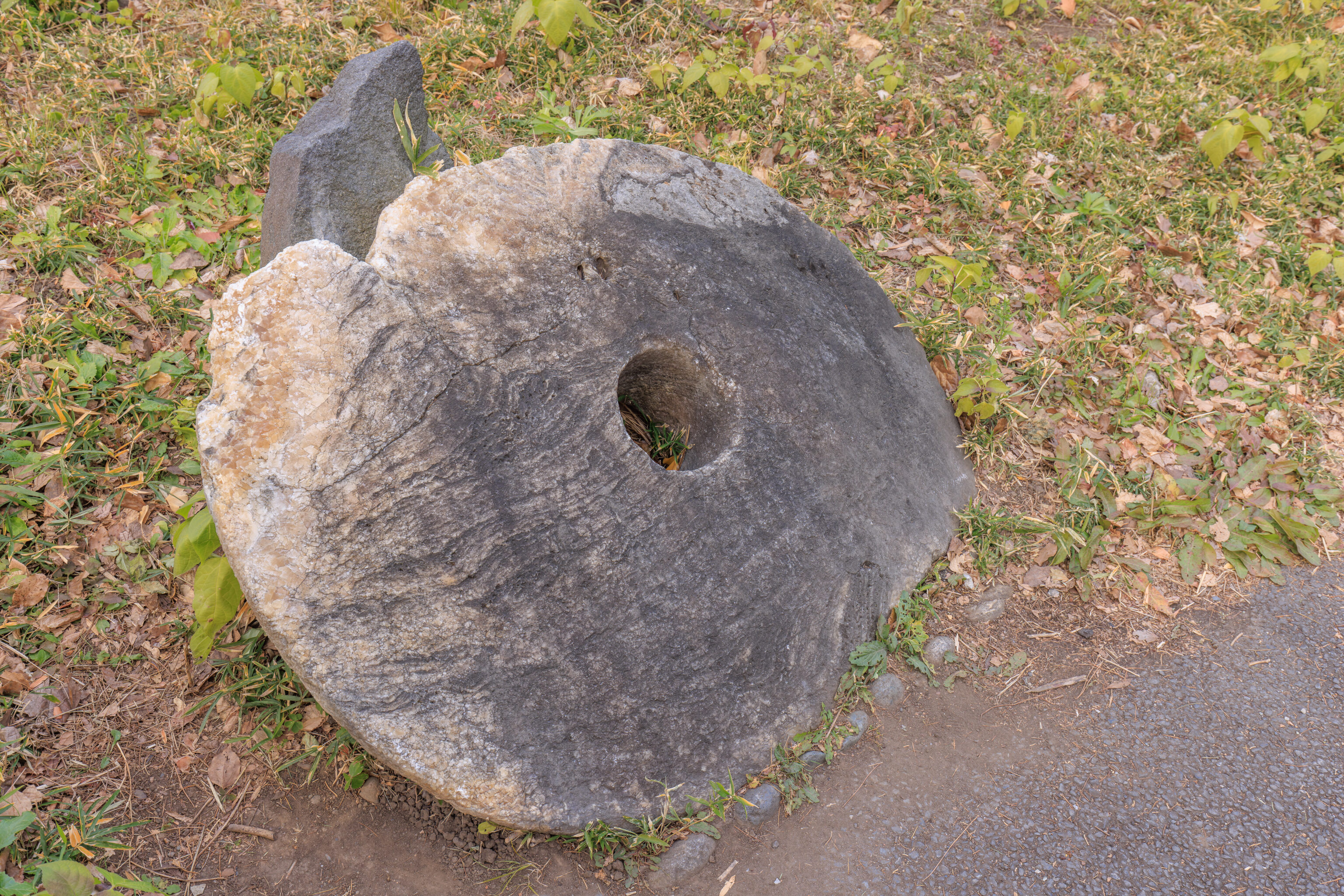
This stone on the ground is apparently money, literally! A sign explains in English:
Stone Money
This round stone was used as money in Yap Island (the present Federated States of Micronesia) in the South Pacific, Such stone money varies greatly in size from about 6cm to 3m in diameter. In general, the value was decided based on four characteristics: 1) diameter, 2) surface texture (smooth or rough), 3)shape, and 4) difficulty of transportation. This stone money is approximately circular, measuring 1.35m across its longest axis and 1.0m across its shortest. It was regarded to be worth about 1,000 yen in 1924. (Contributed by the Mayor of Yap Island Branch Office in January 1925)
Yap, where this coin is from, is near Guam, where we visited on Christmas Day before flying to Tokyo. In 1924, $1 USD was worth 2.48 JPY1. $1 in 1924 is worth $18.36 today2. This stone was worth about $7,500 USD in today’s money. Luckily, we don’t have to use this kind of currency in the modern world!
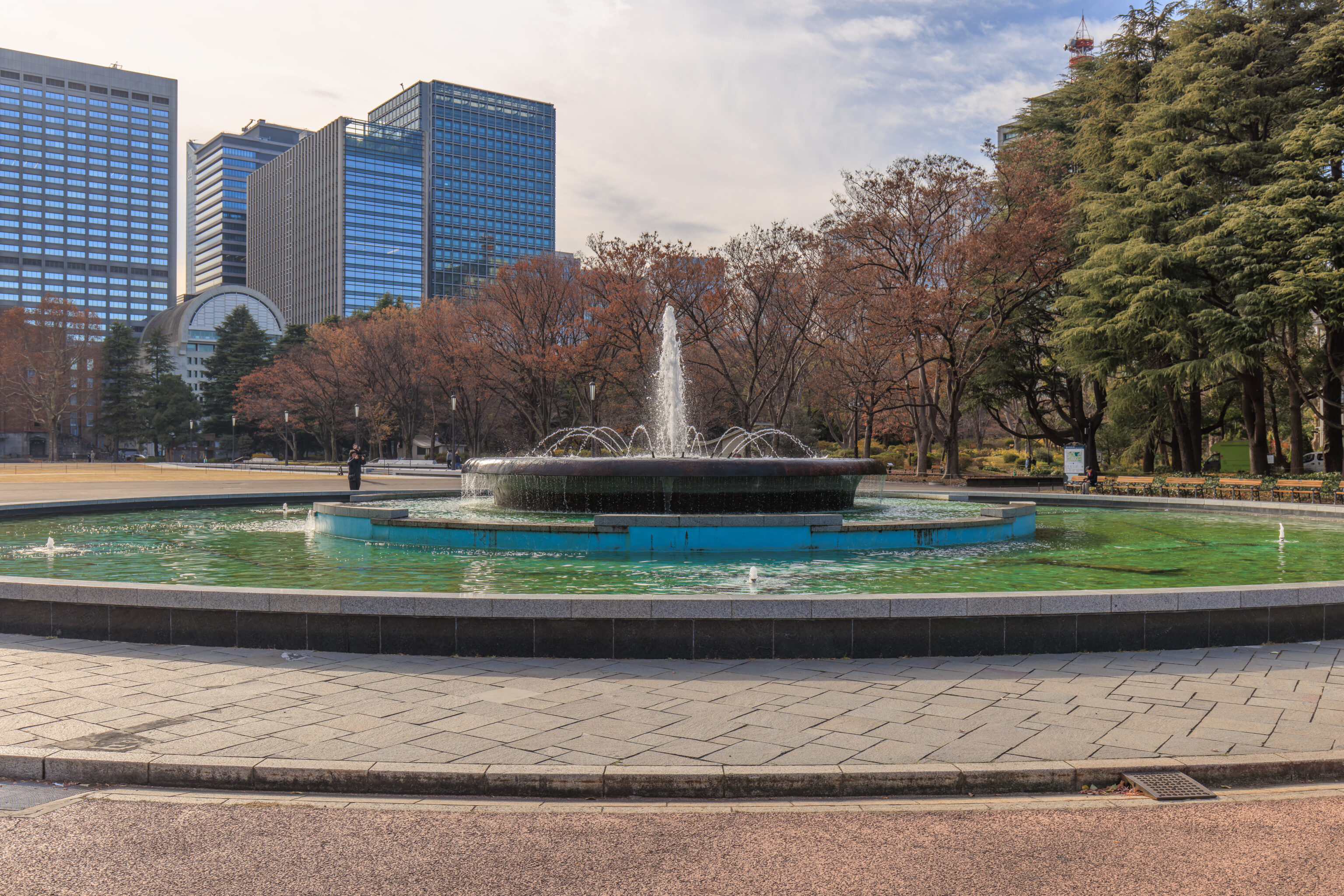
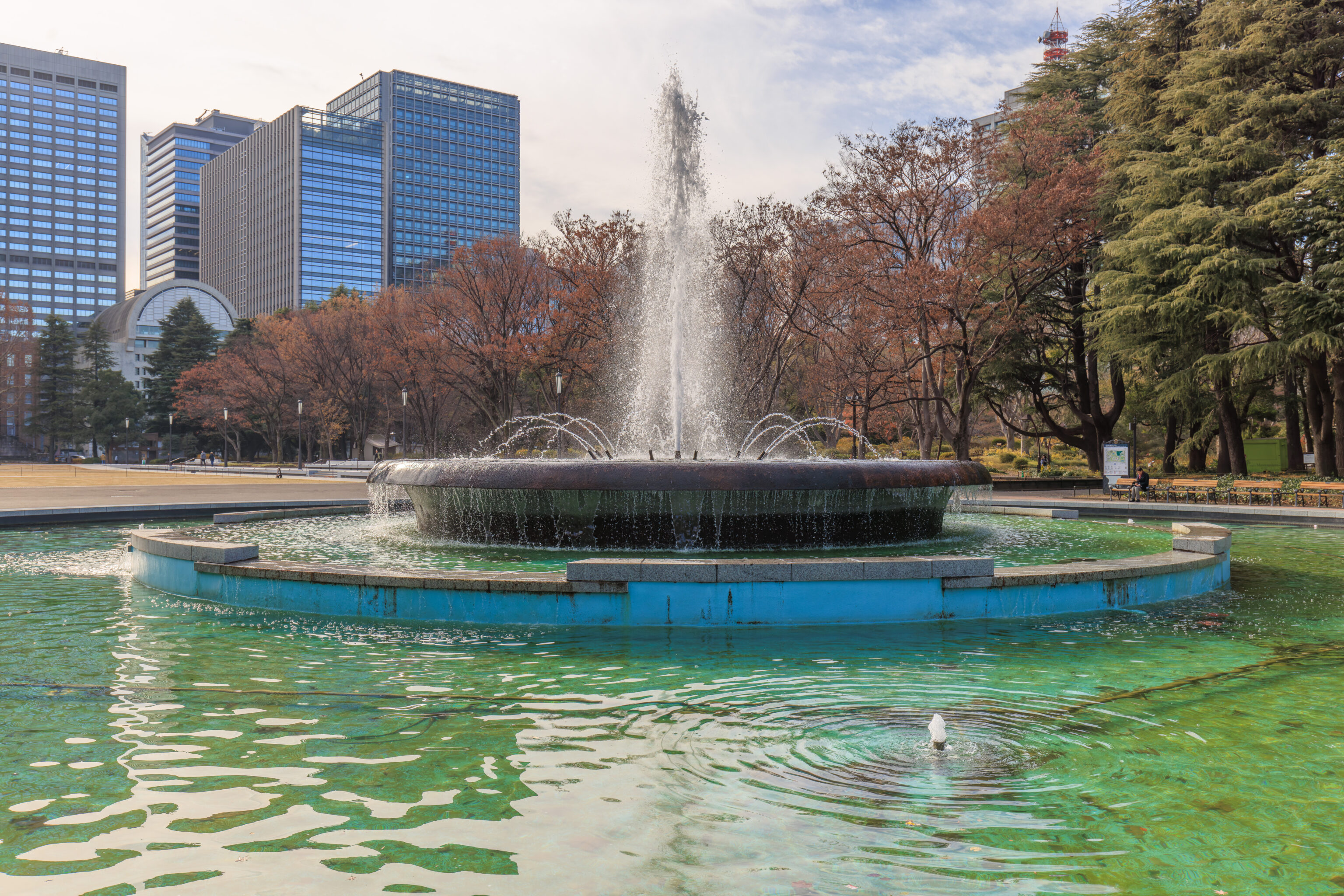
There is a fountain in the middle of the park. It was filled with water and active.
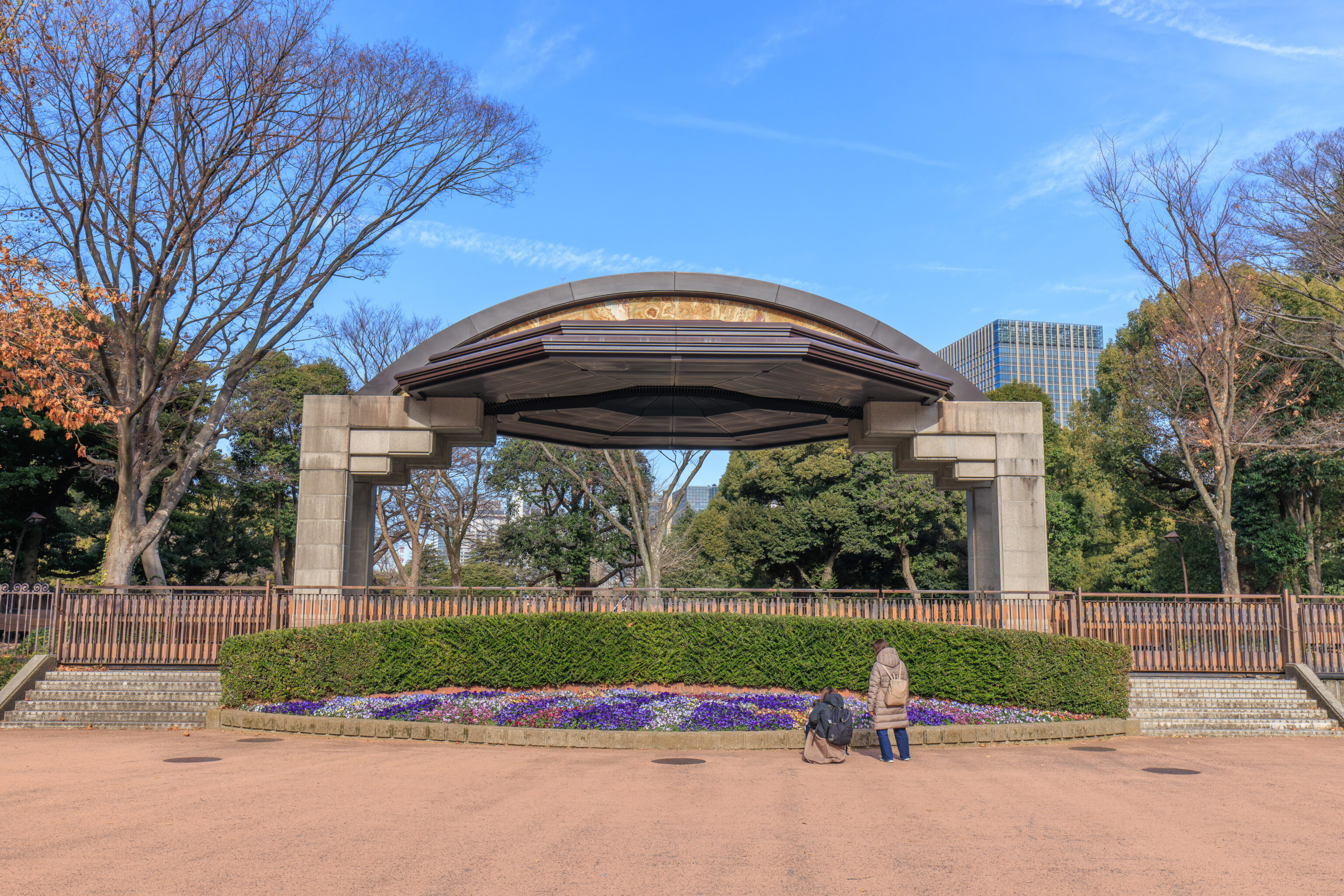
This structure is apparently the rear of a small stage with seating on the other side.
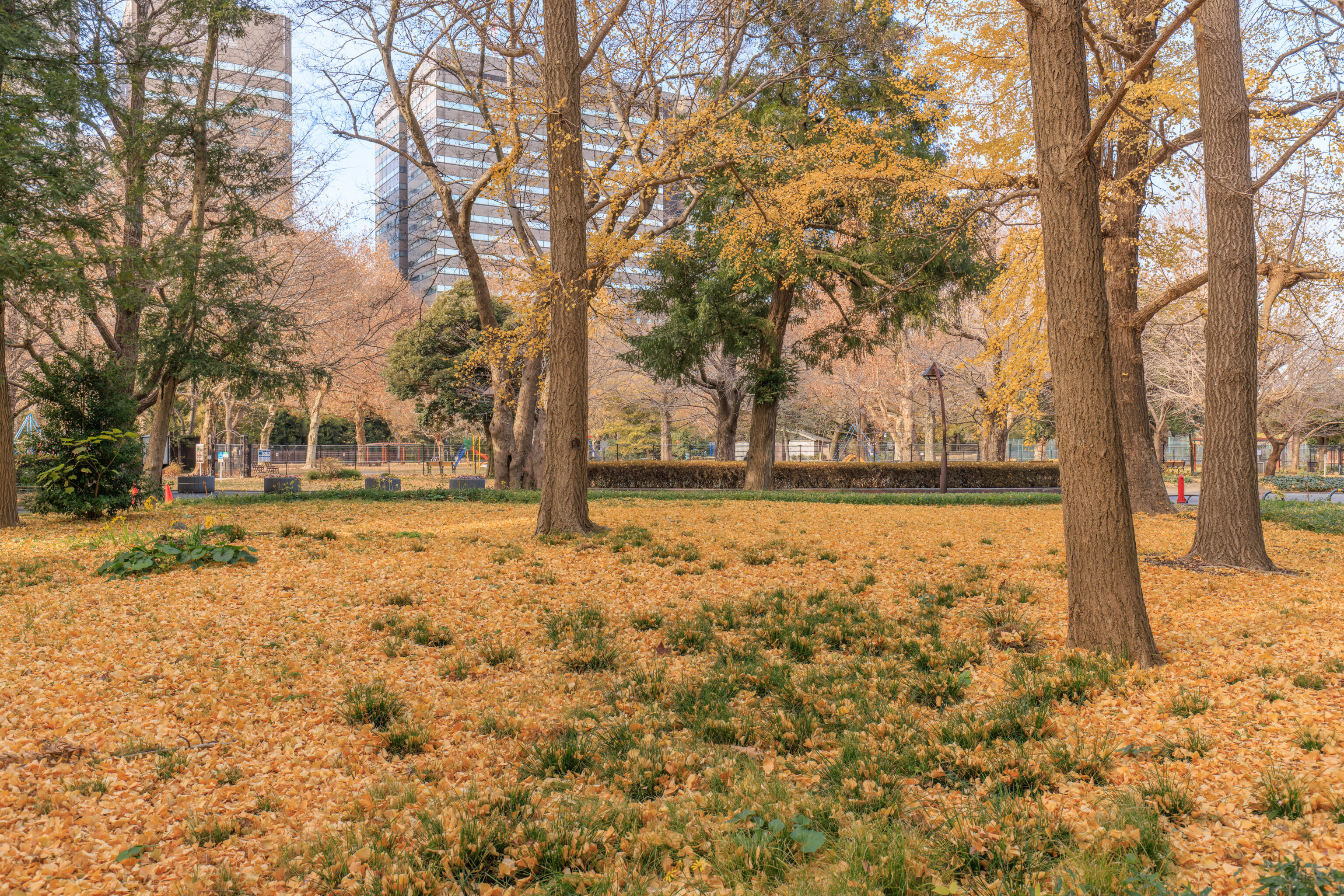
This patch of ground had a huge amount of fallen fall foliage!
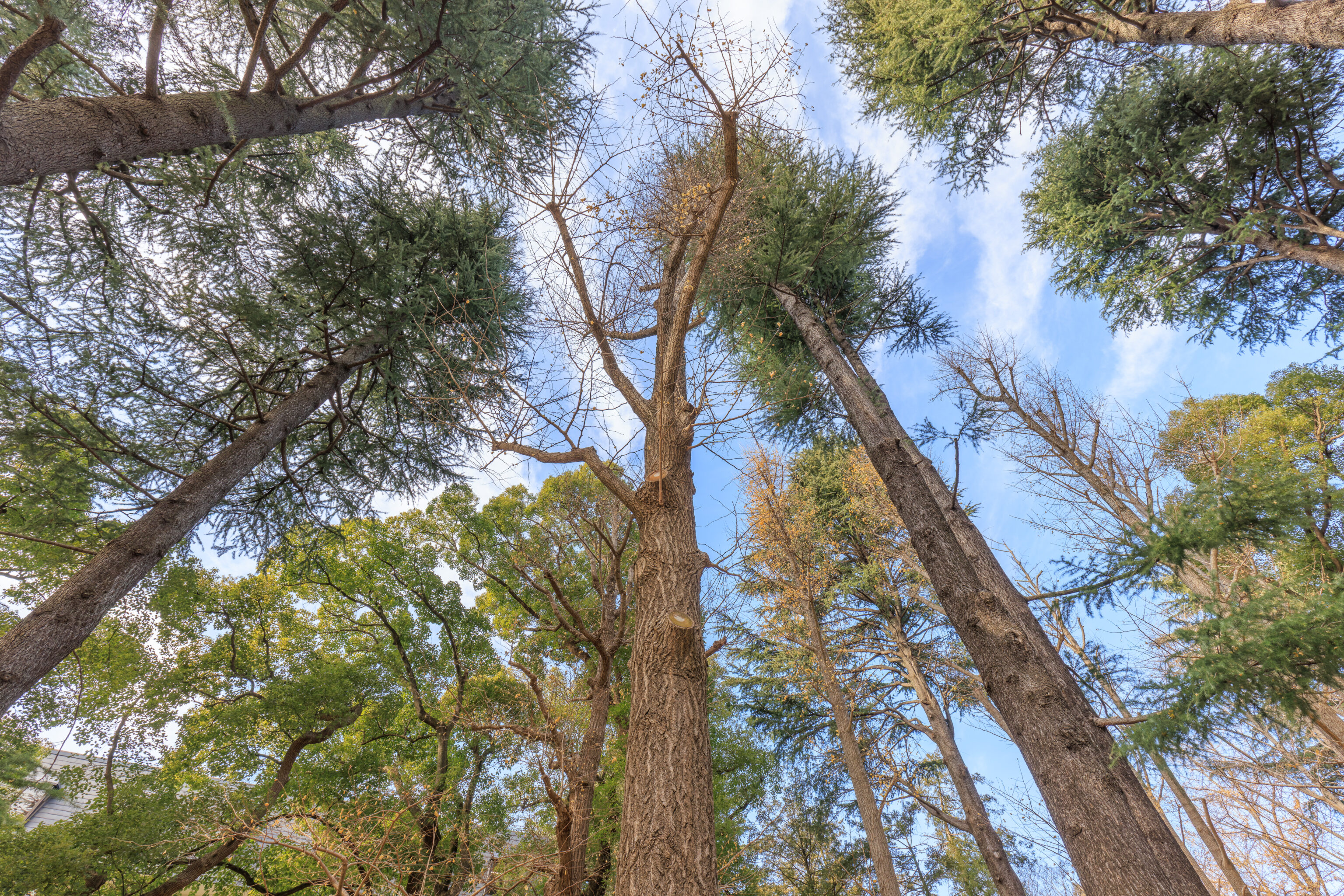
The park has some very tall trees.
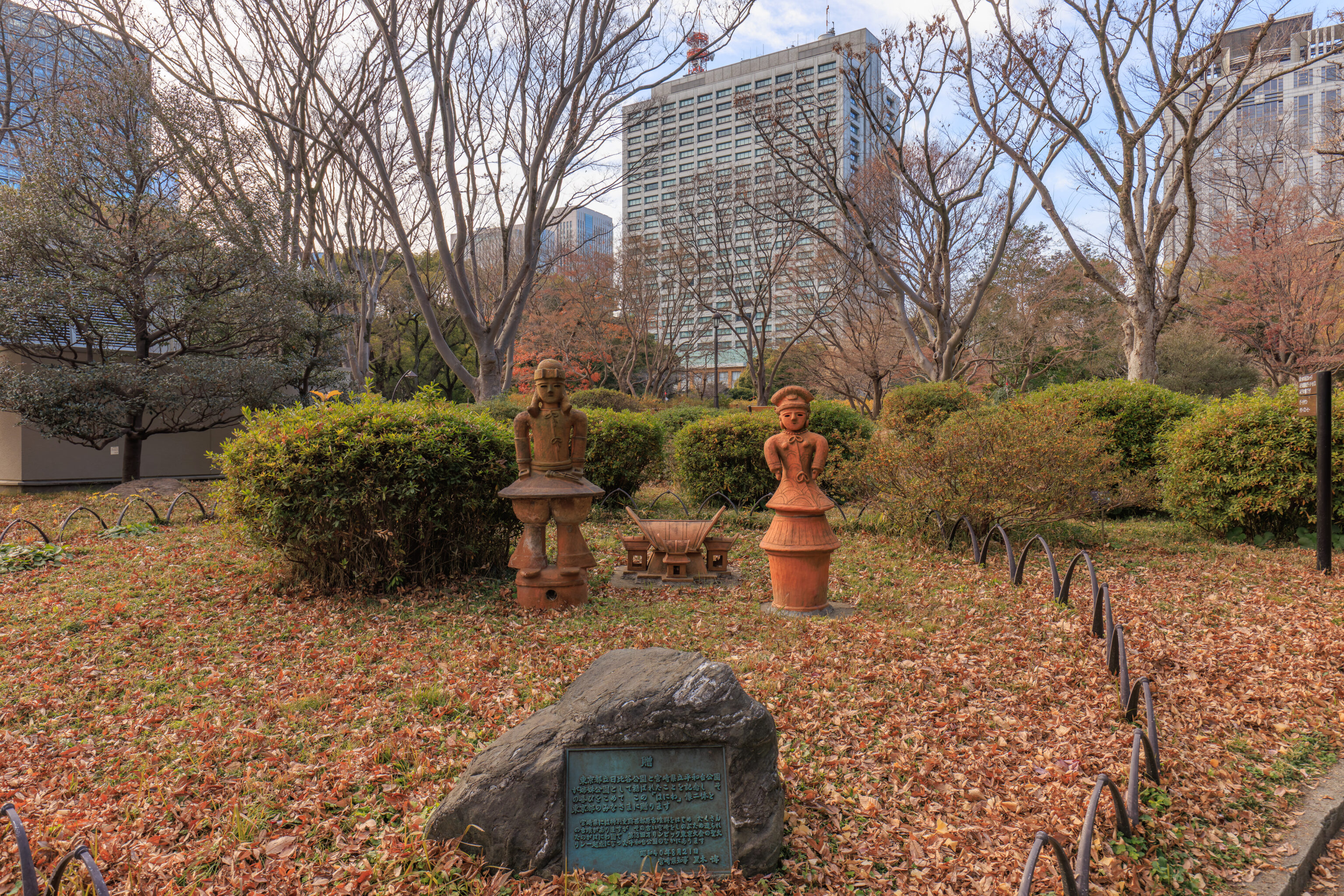
These sculptures are made out of clay and are from 宮崎県 Miyazaki Prefecture. A sign explains in English:
Clay Figures
Tokyo Metropolitan Hibiya Park and Miyazaki Prefectural Heiwadai Park entered into a sister-park agreement on August 21, 1965. In commemoration, two clay figures were given to Tokyo Metropolitan Government from Miyazaki Prefecture, where there are many ancient burial mounds including the Saitobaru Ancient Burial Mounds, which are special historic remains.
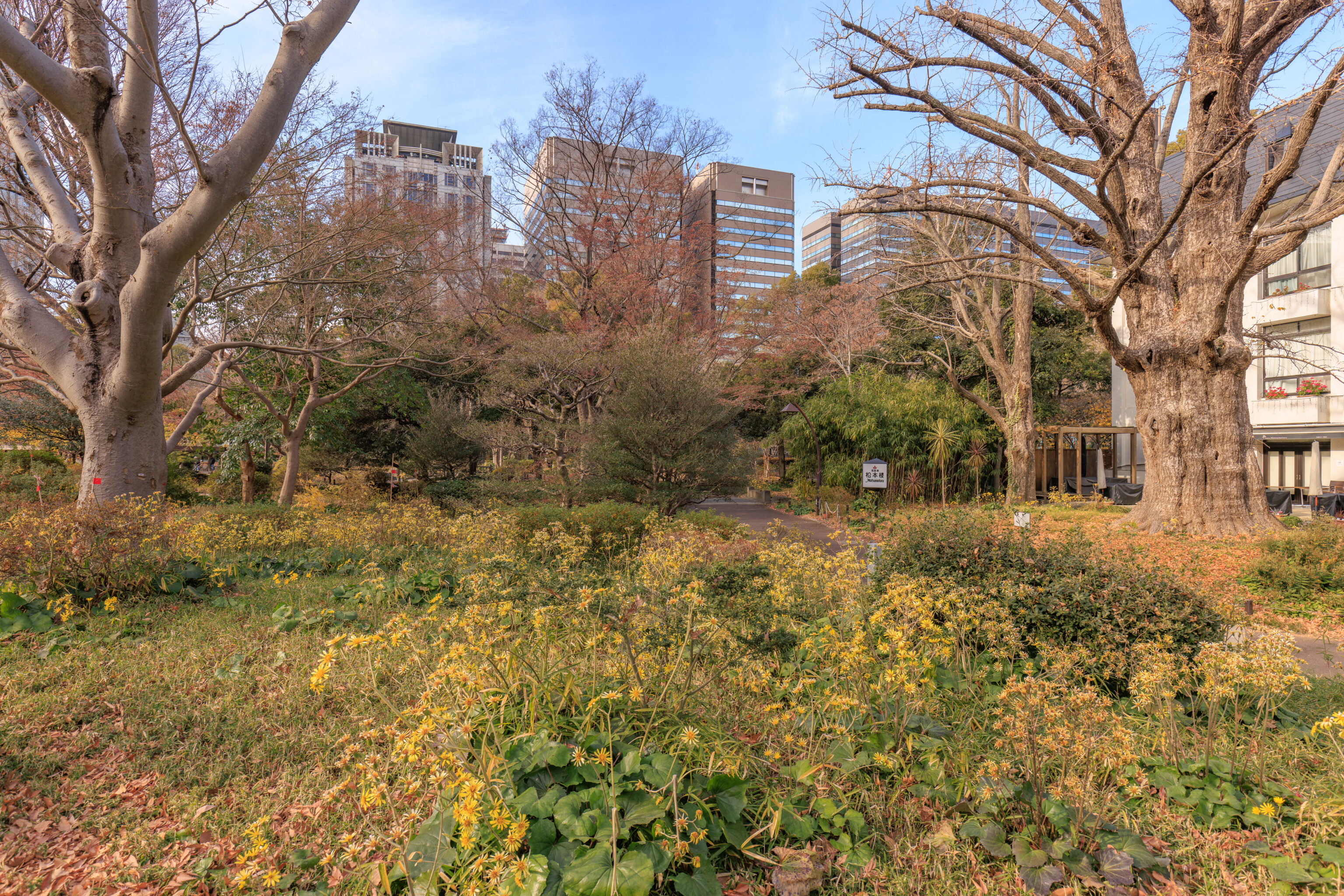
We headed in the direction of the park’s second pond.
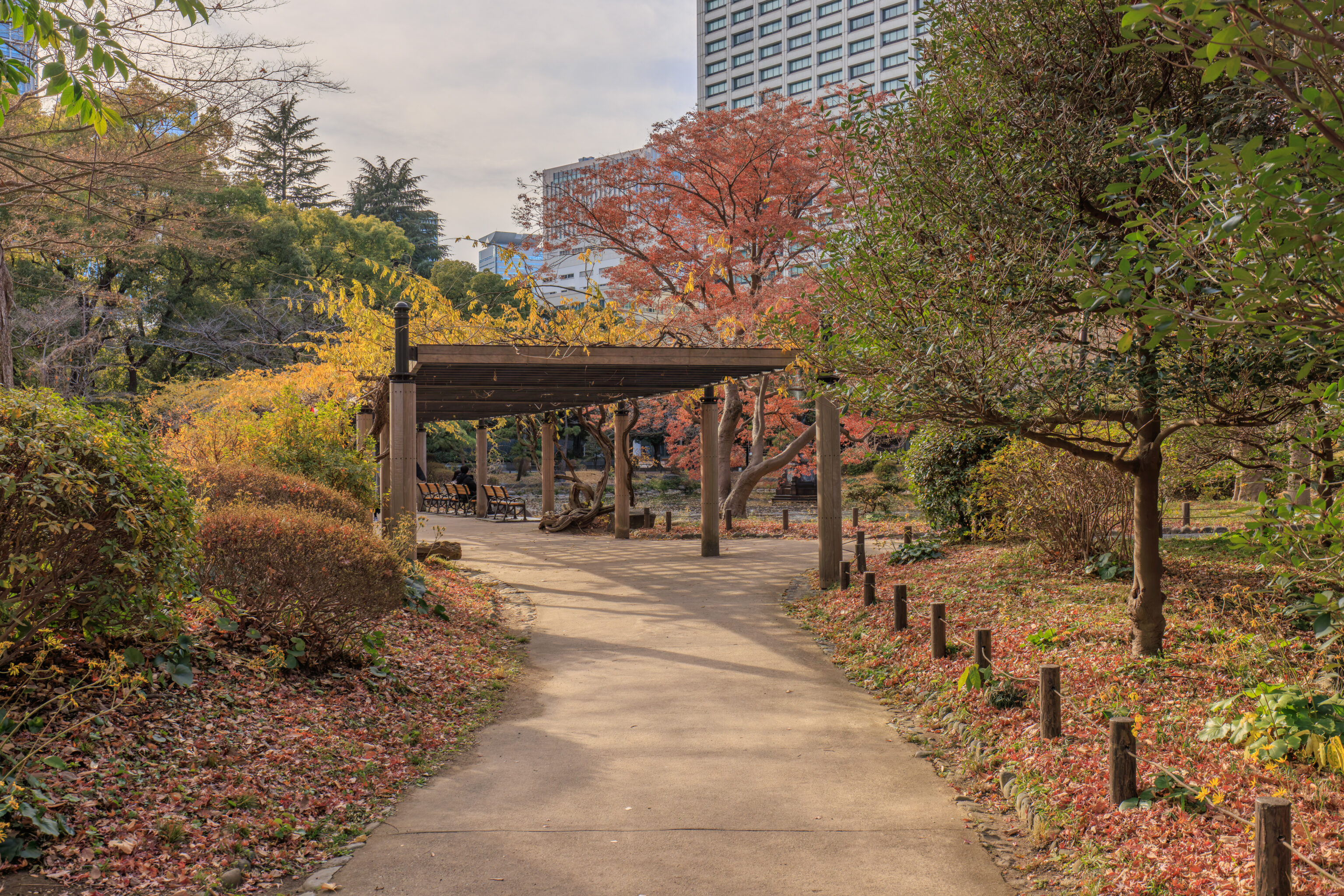
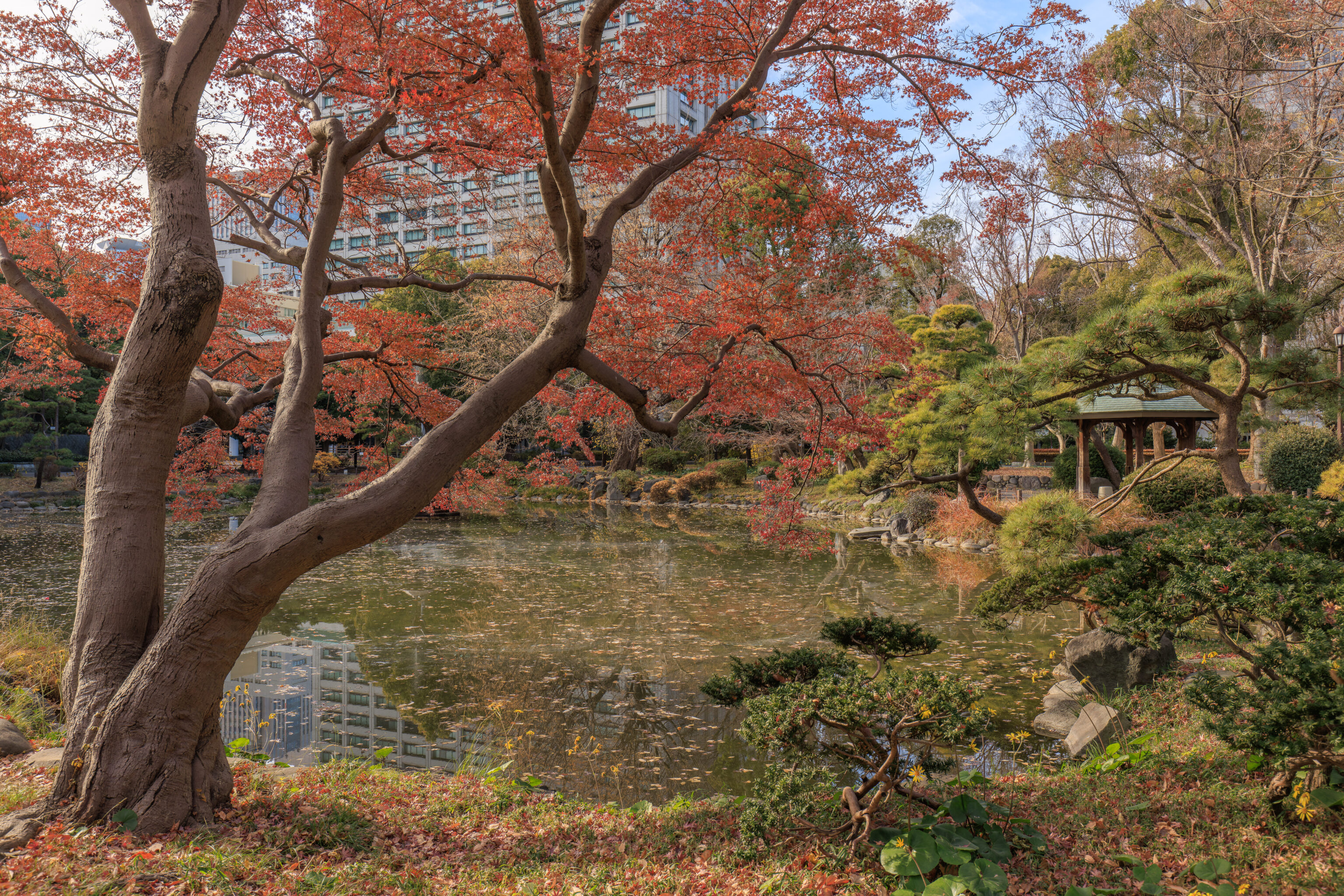
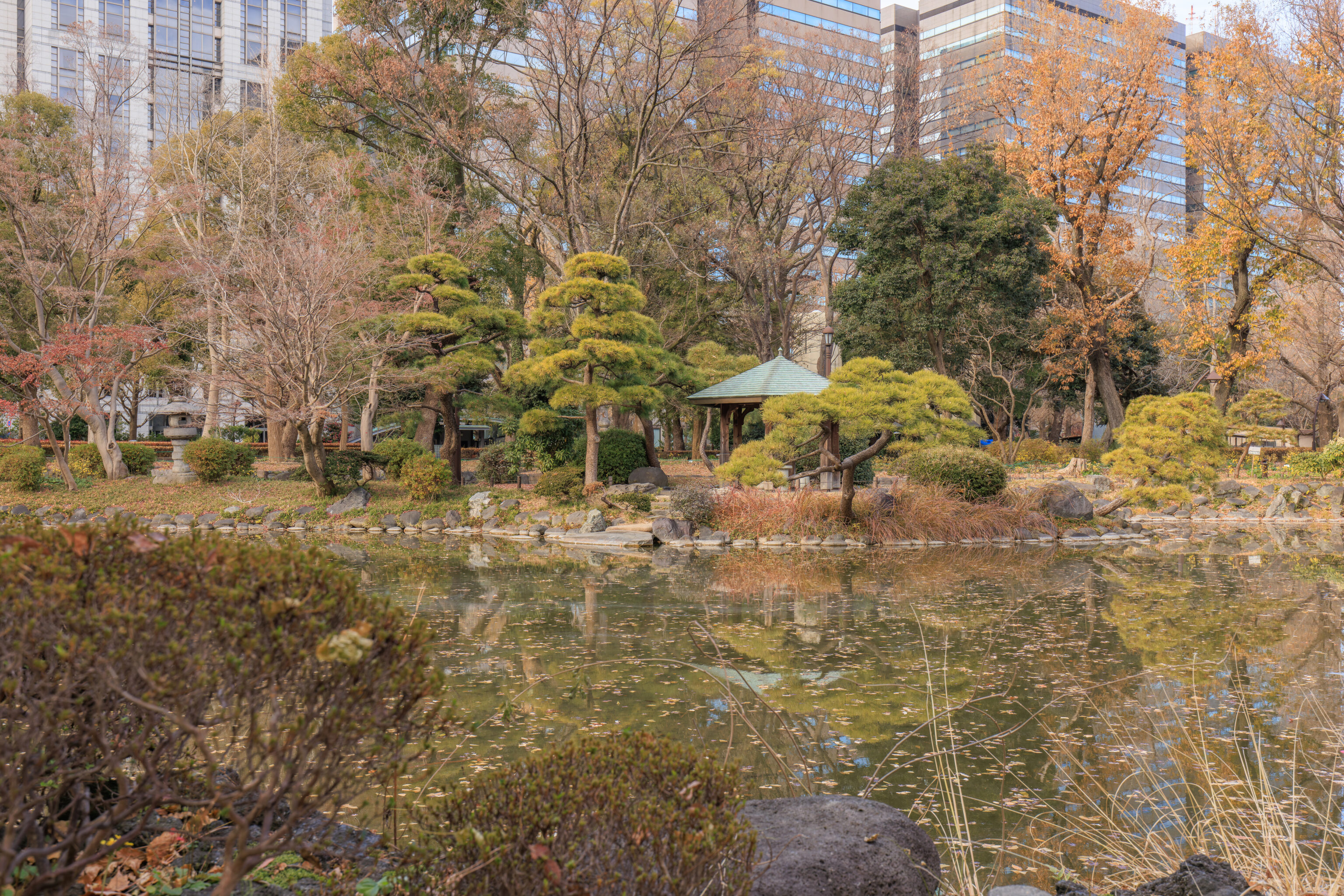
This pond is smaller and more or less surrounded with trees.
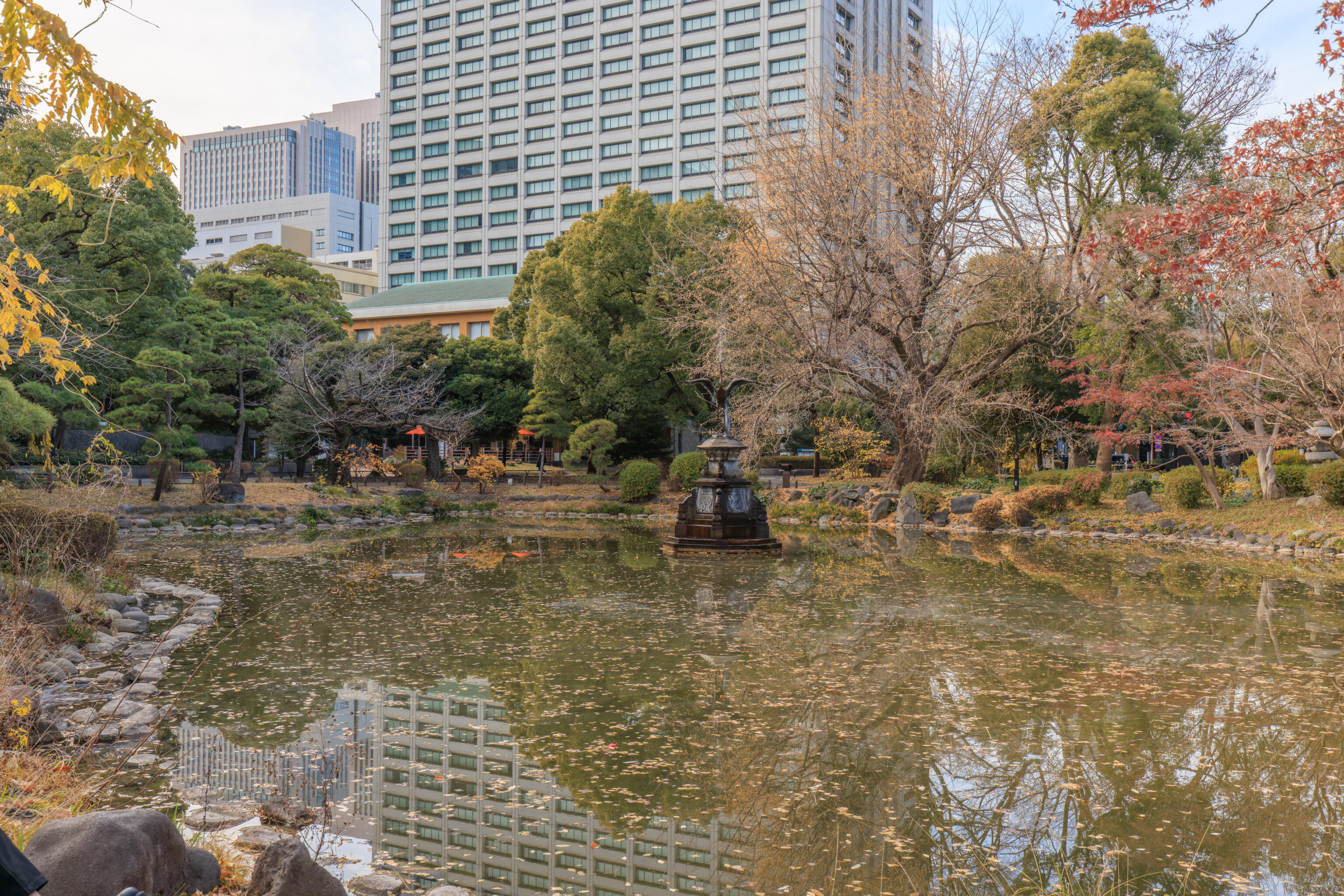
There is a fountain with a crane in the middle of the pond. A sign explains that this fountain is famous for icicles that hang down from the crane’s wings during winter. Definitely not right now though!
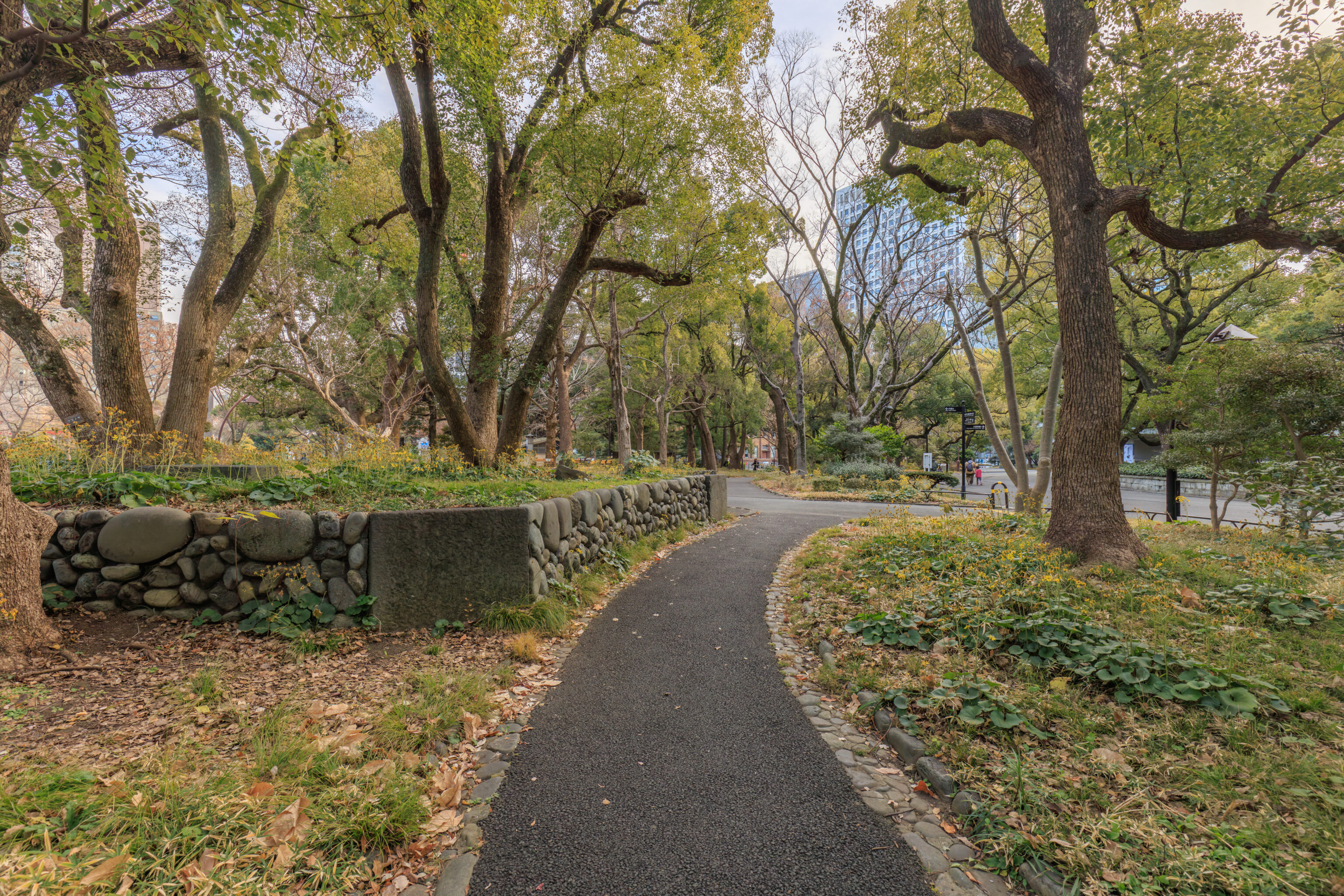
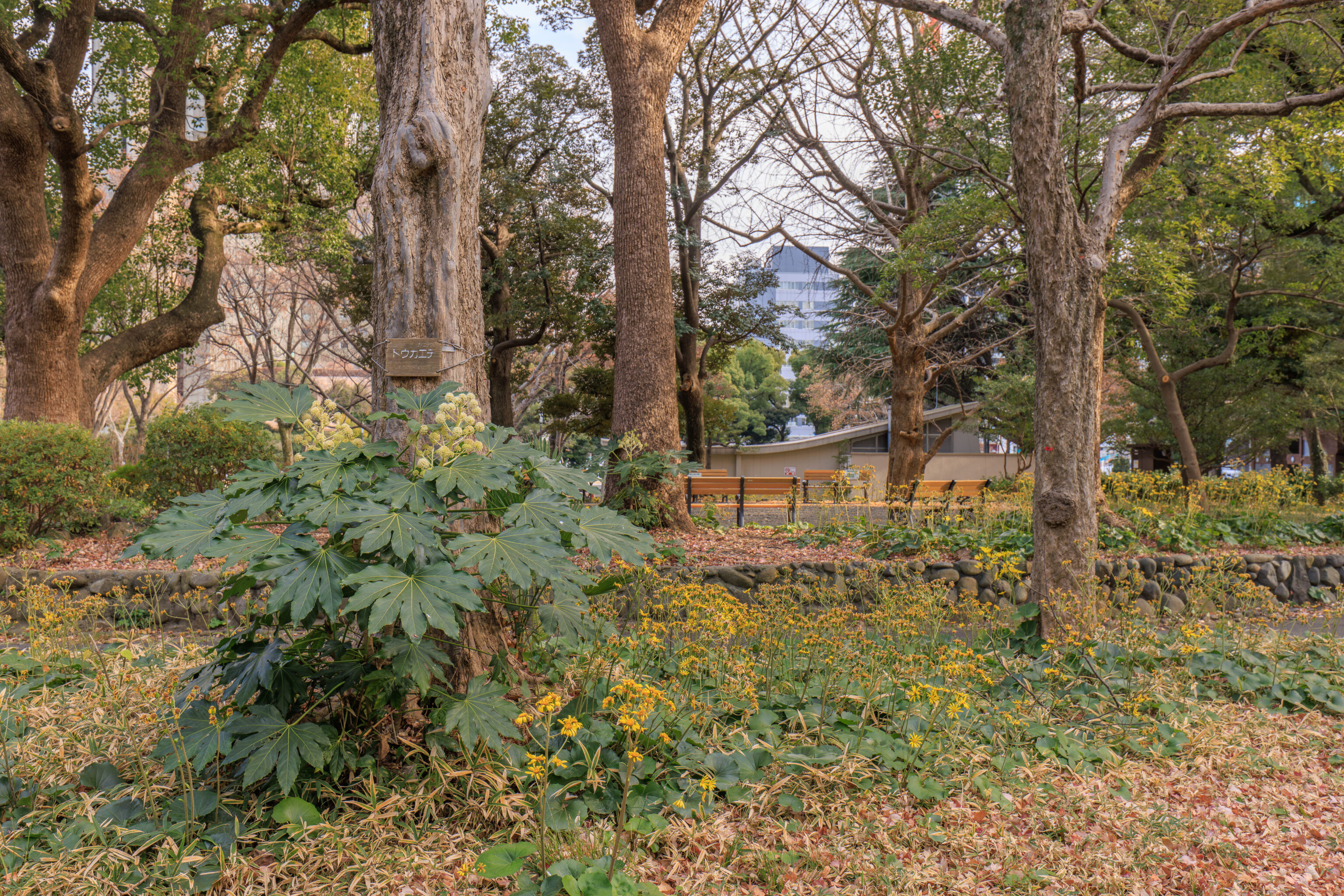
We started heading to the south through the park on our way to 内幸町駅 Uchisaiwaicho Station on the 三田線 Mita Line.
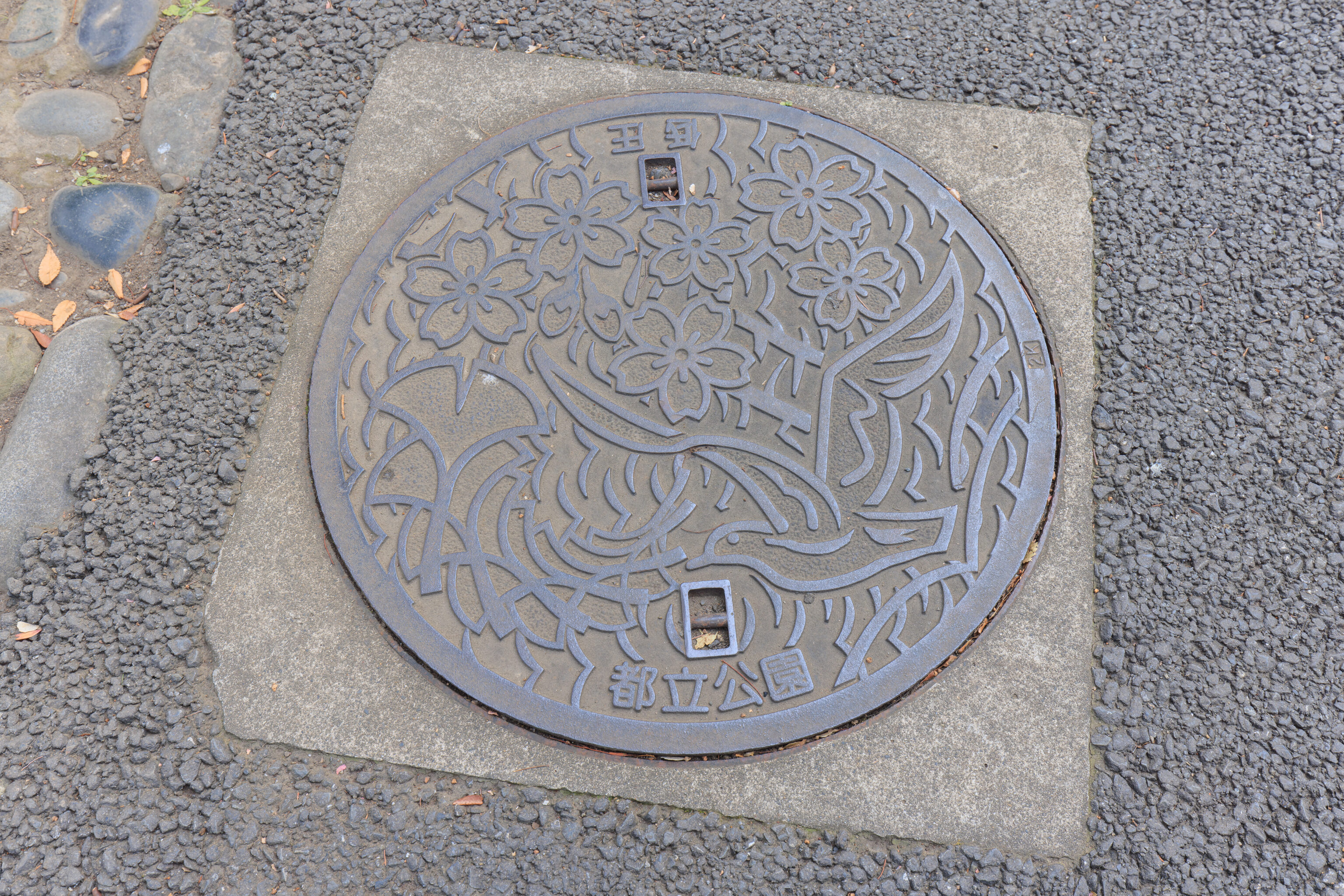
Japan is full of these sorts of decorated manhole covers. Maybe we should be photographing more of them?
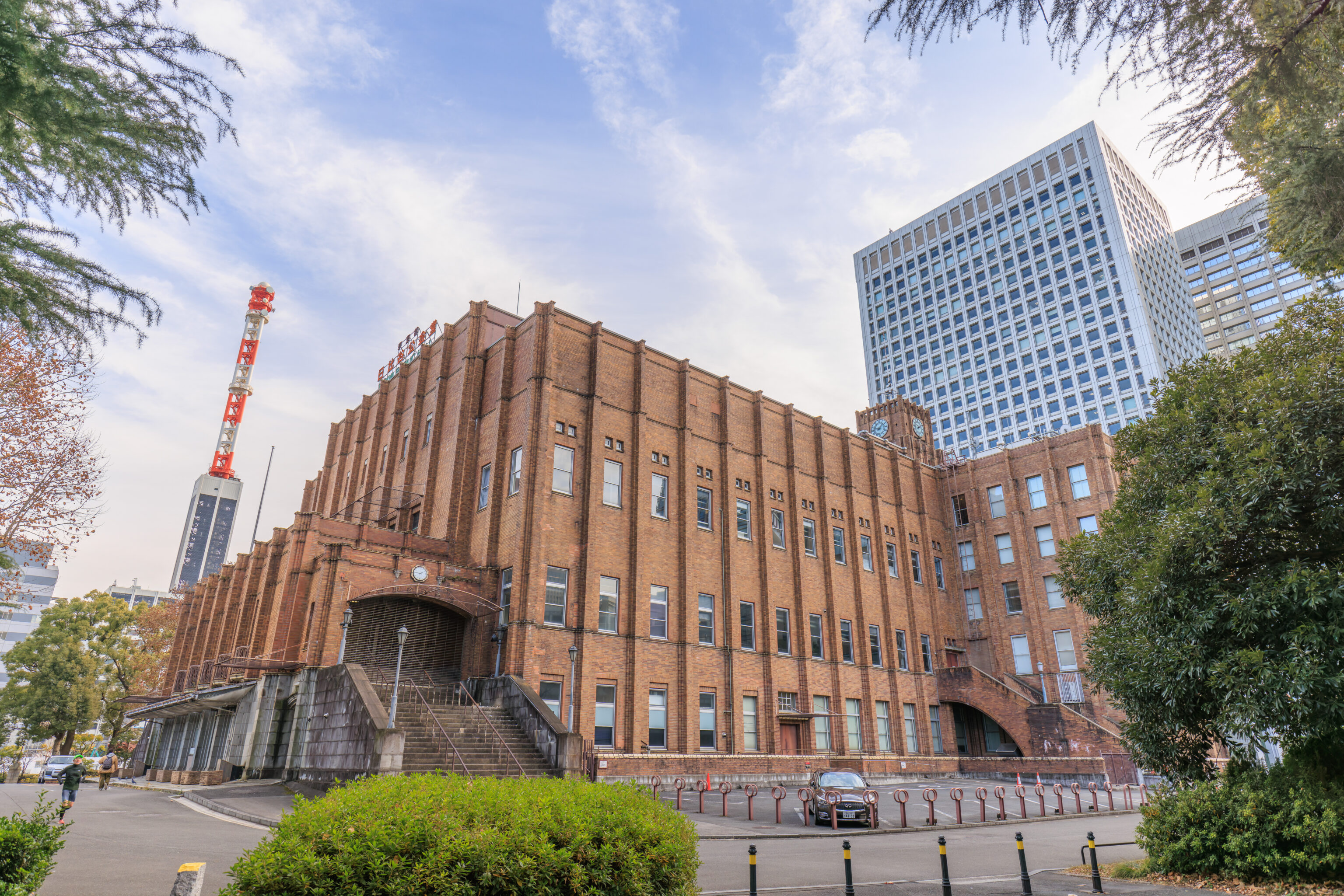
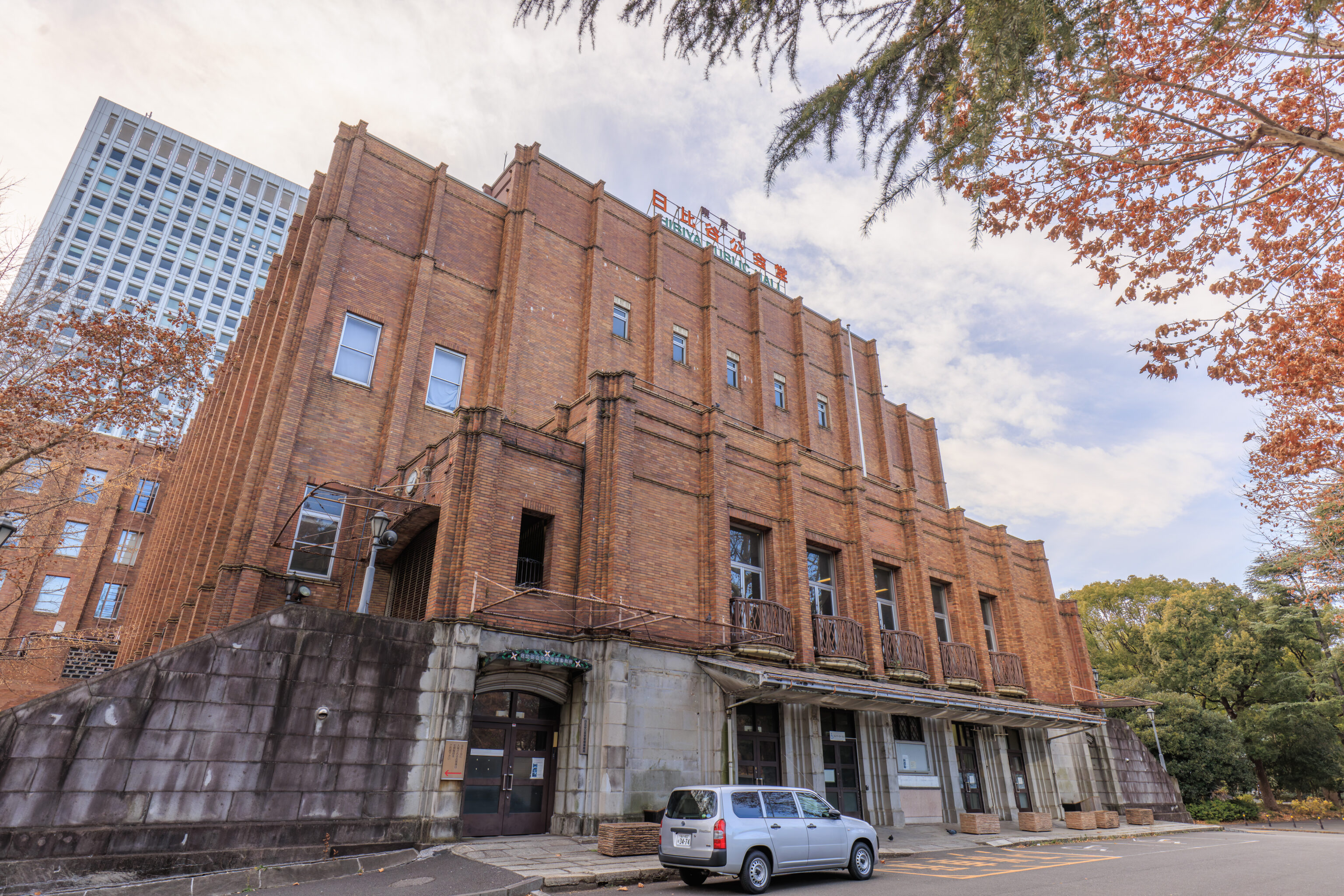
This building looks old and run down and a bit like it is abandoned. It is the Hibiya Public Hall, dating back to 1929.
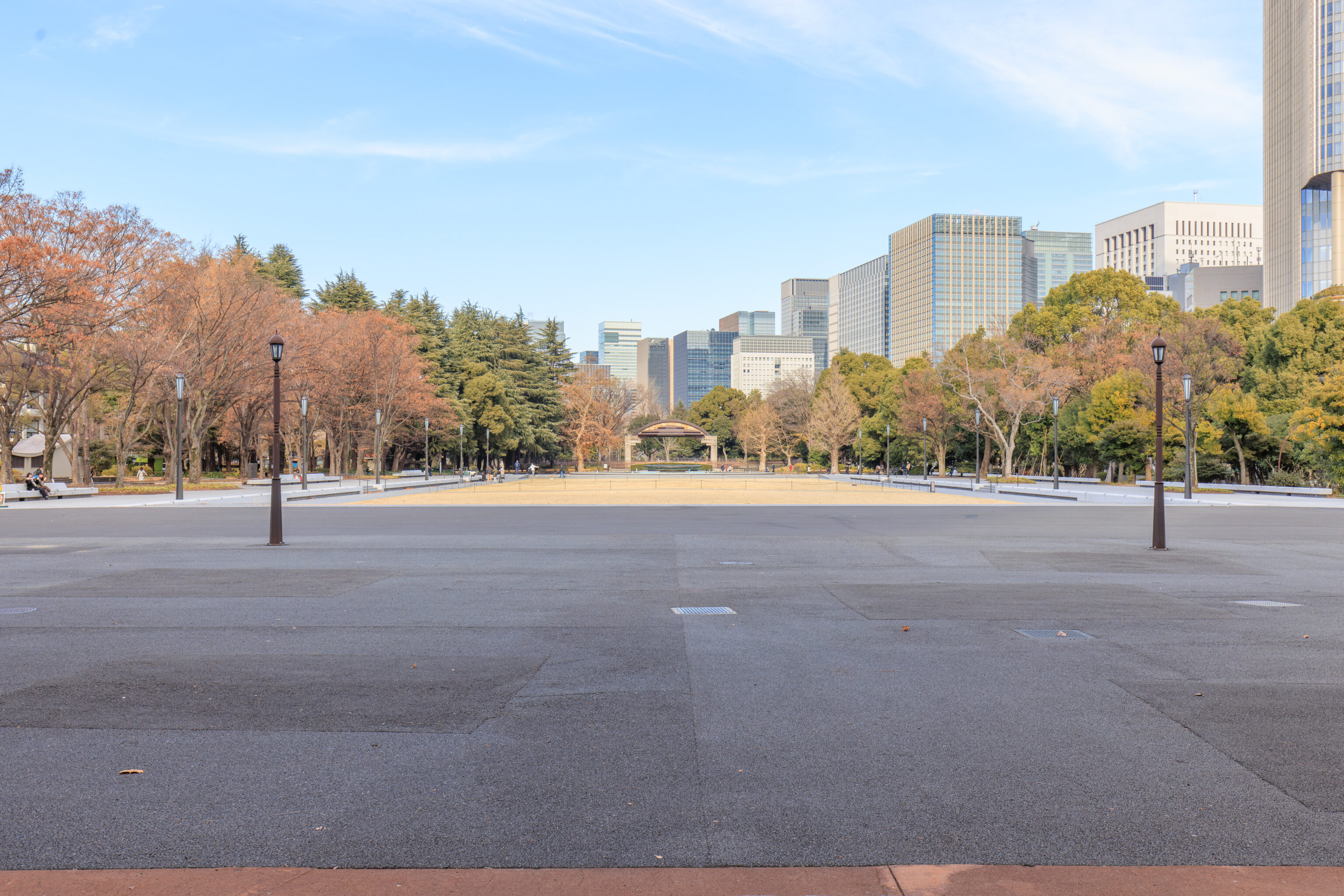
The view from the hall to the north with the stage that we walked by before in the background.
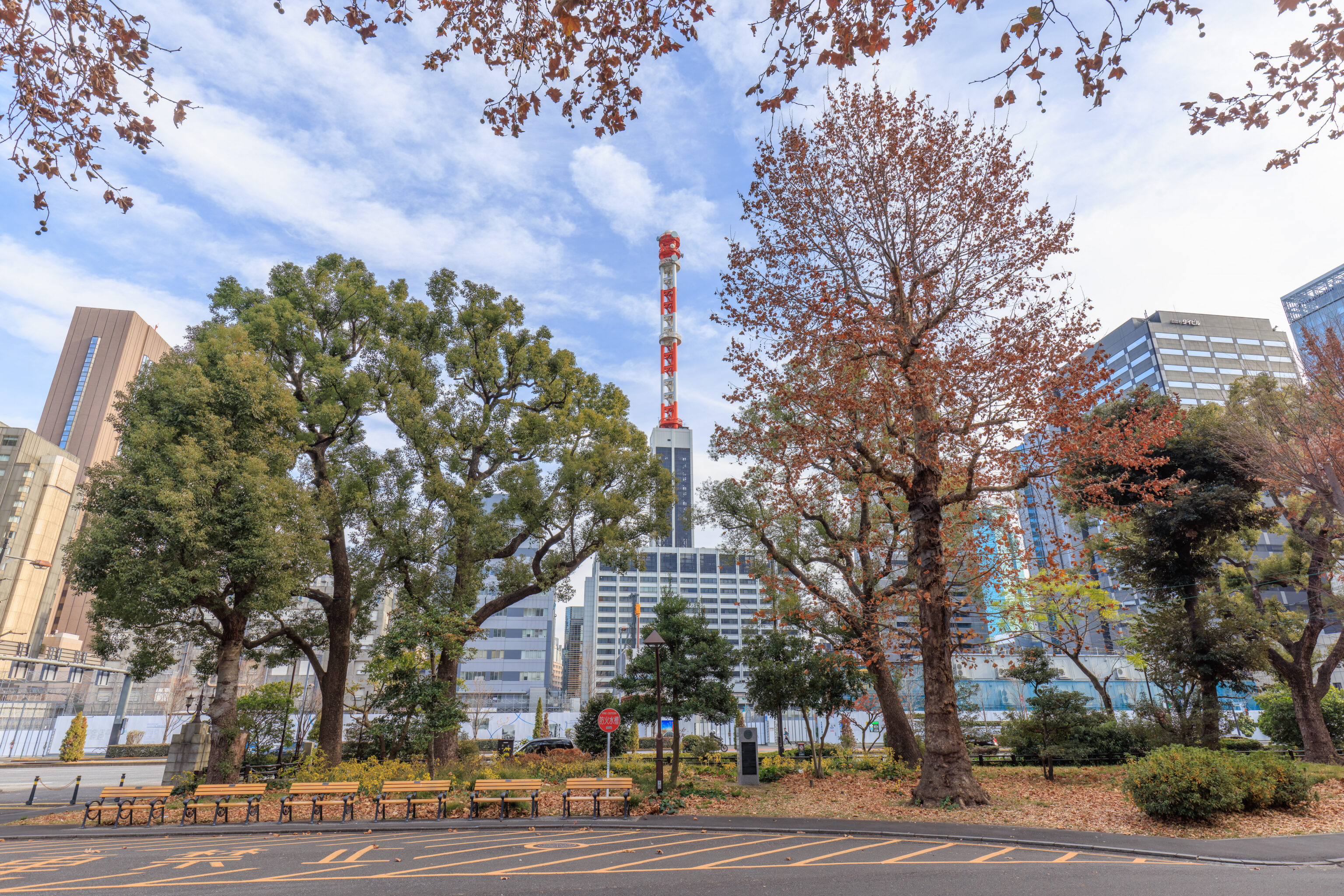
This antenna is pretty prominent.
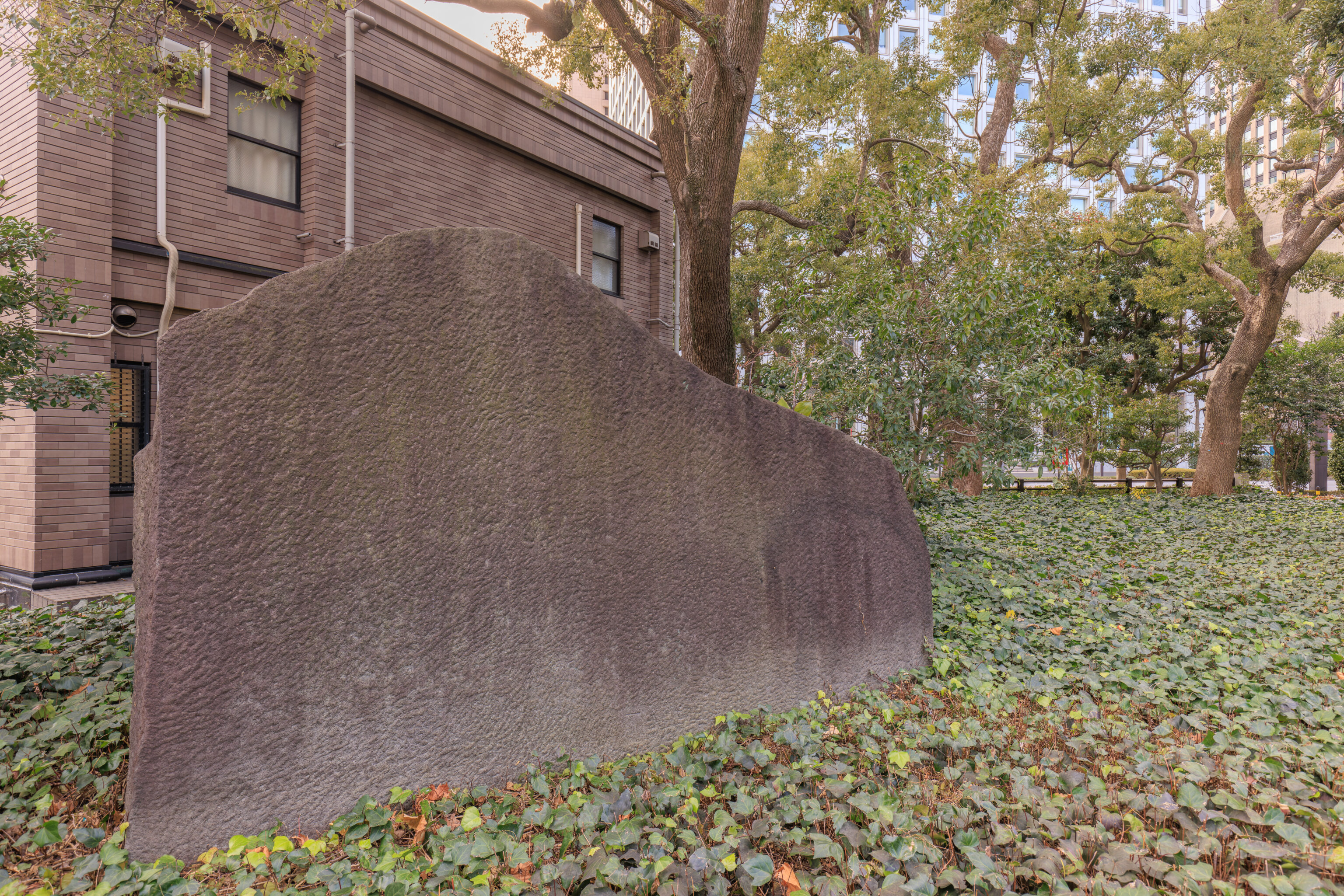
This stone was originally in one of the gates to Edo Castle. A sign explains, in English:
Eboshi Stone Monument
This stone was located inside the Ichigaya-mon Gate, one of the gates of the Edo Castle outer stone wall, during the Edo period. Because its shape resembles that of eboshi, a black headwear worn many years ago by coming-of-age men, people lovingly called the stone the Eboshi Stone Monument", and treated it with good care.
When the stone mound of the castle was demolished to accommodate road extension work in the Meiji period, "the Eboshi Stone Monument" was moved to the park to preserve it for long.
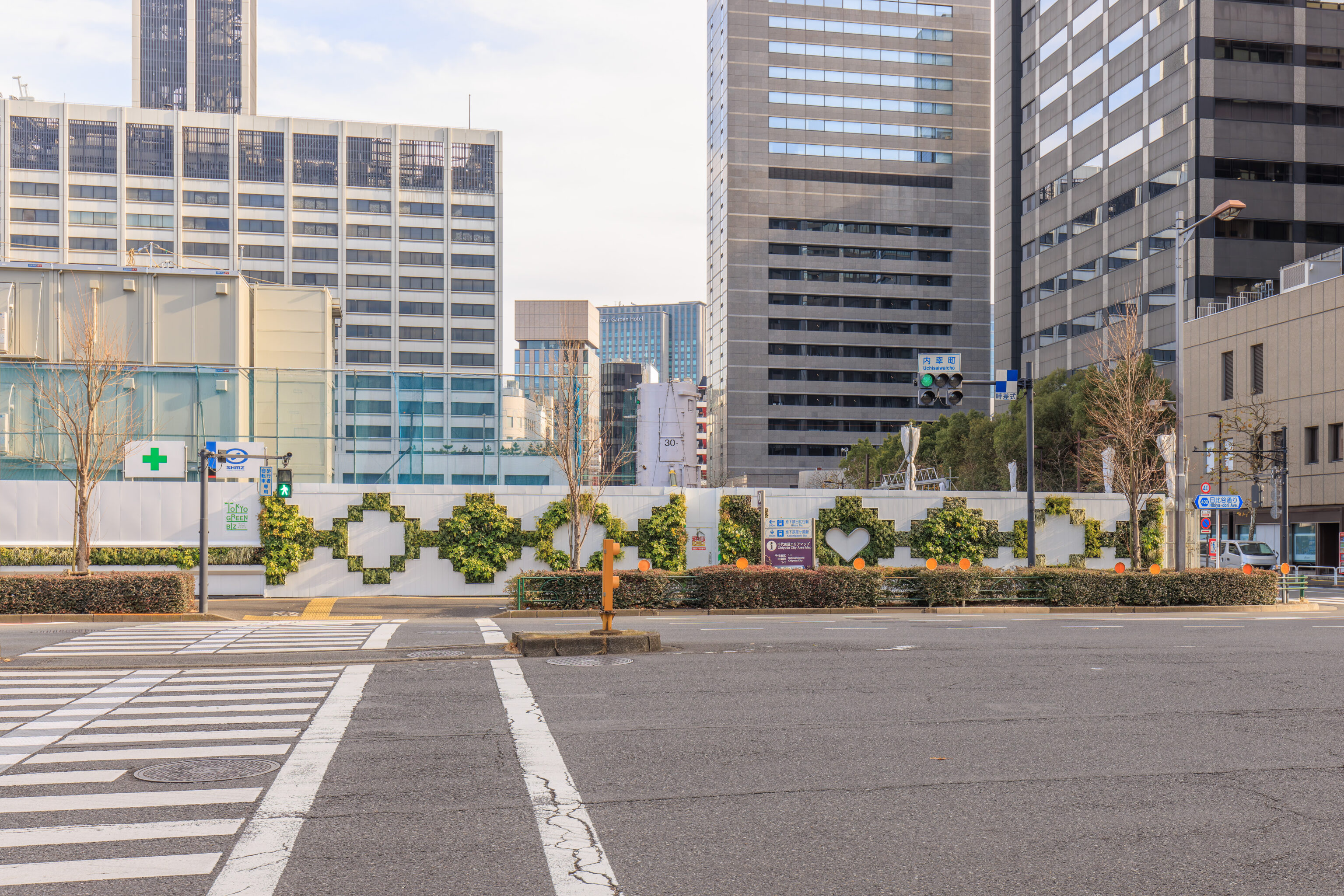
This construction site has plants integrated into its fence!
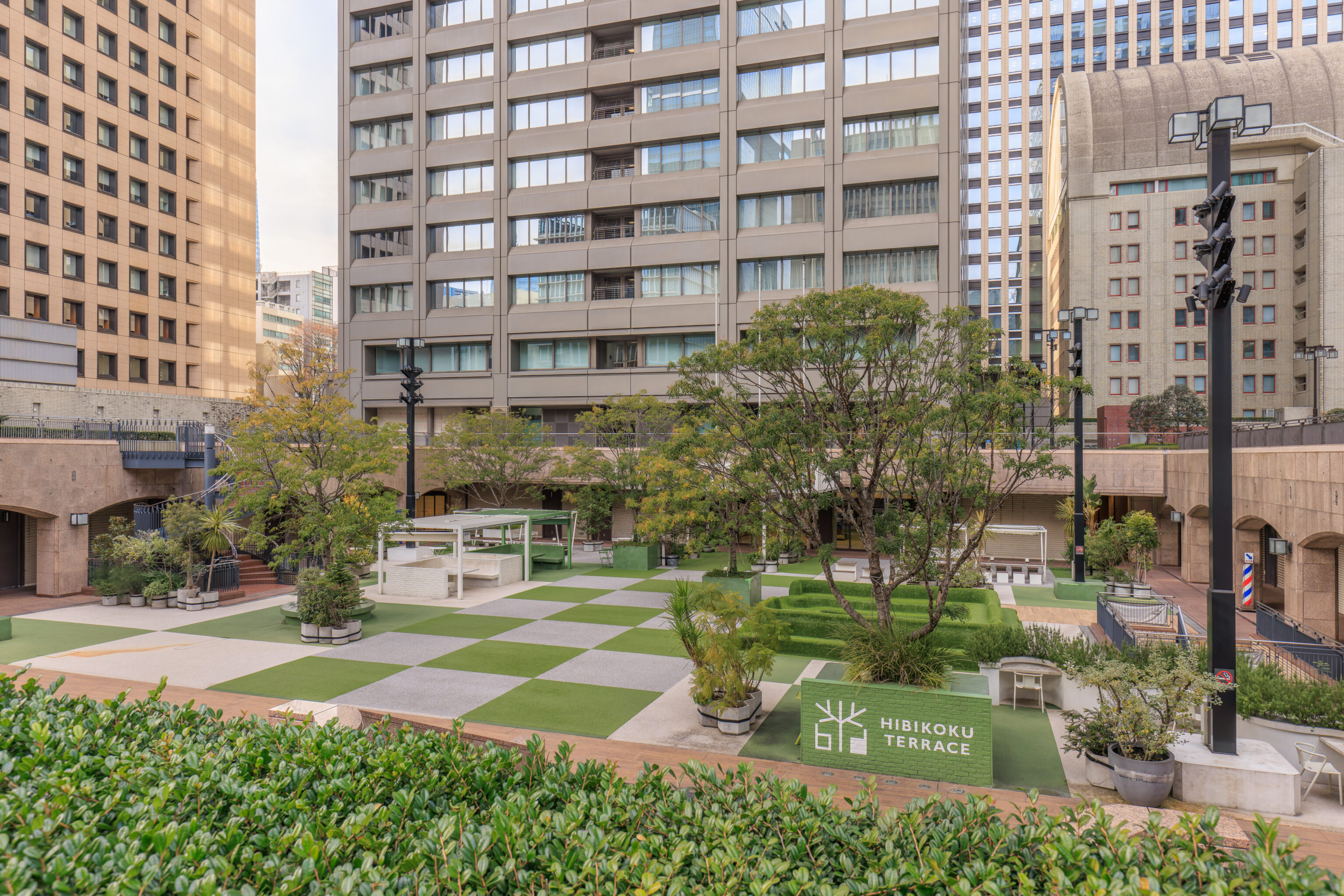
We came across this interesting little area, the ヒビコクテラス Hibikoku Terrace, created in 2019. Although it is a Monday and this is a business district, there was no one around, possibly because of the upcoming New Year holiday?

Some clever grass themed seating!
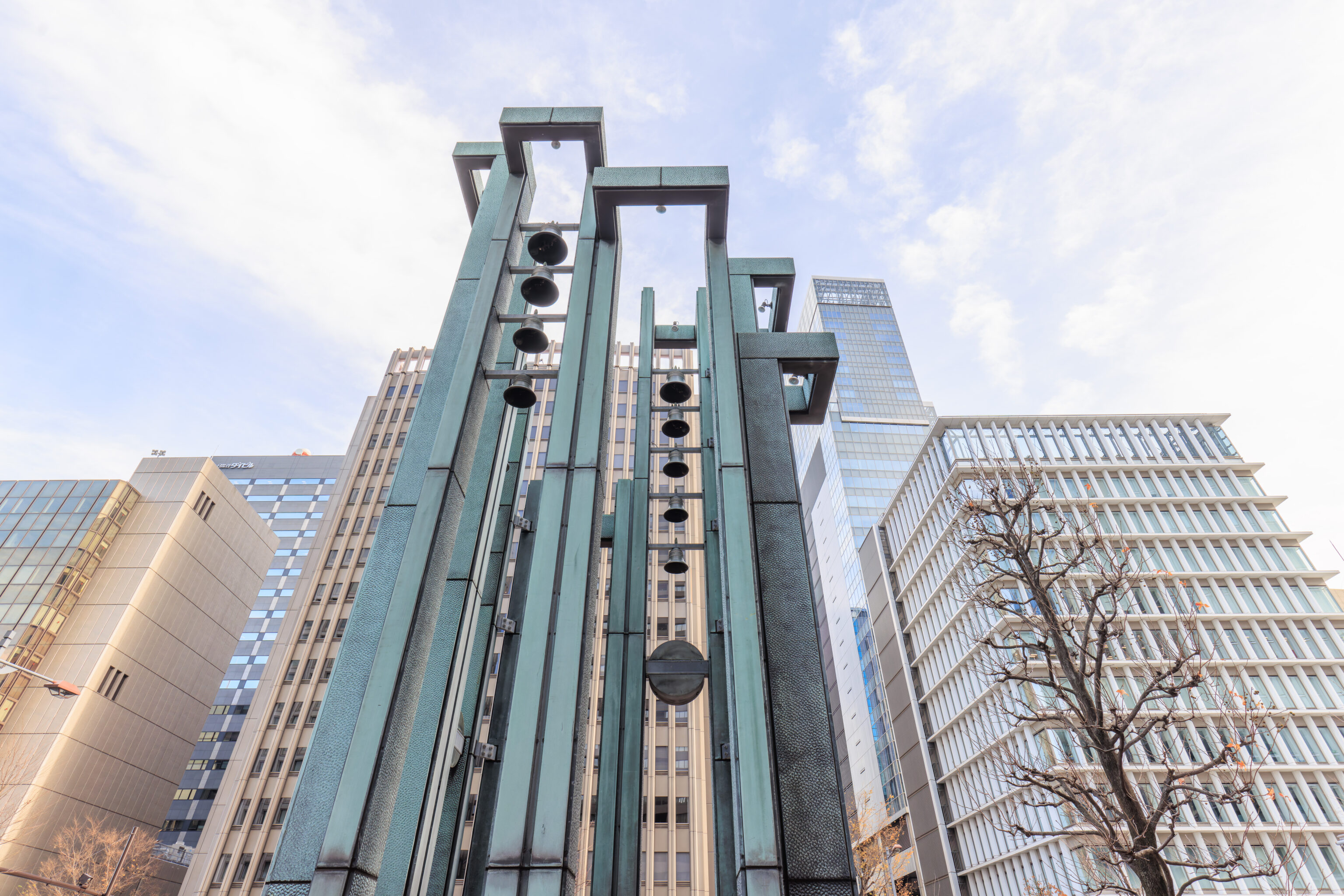
This structure is described as the 足長カリヨン Long-Legged Carillon and was made in the Netherlands according to a sign that we did not photograph. This carillon is by the entrance to the Uchisaiwaicho Station. We took the subway to 三田駅 Mita Station and then headed to Otorii via the Asakusa and Keikyu Lines where we picked up our luggage.
Haneda to New Chitose
After getting our bags from the Mercure, we returned to Otorii Station and caught the next train to Haneda Terminal 1. Once there, we found the checkin area for our flight to 新千歳空港 New Chitose Airport (CTS), the airport for the Sapporo area.
This was our first time taking a domestic flight in Japan. The experience is pretty different from the US. There doesn’t seem to be the same concept of boarding passes. Basically you just have a QR code for the flight that you scan to print bag tags and to drop off your luggage. The same QR code is needed to go into the secure area via automated gates. The automated gates print out a sheet of paper that has additional information that would be otherwise found on a boarding pass.
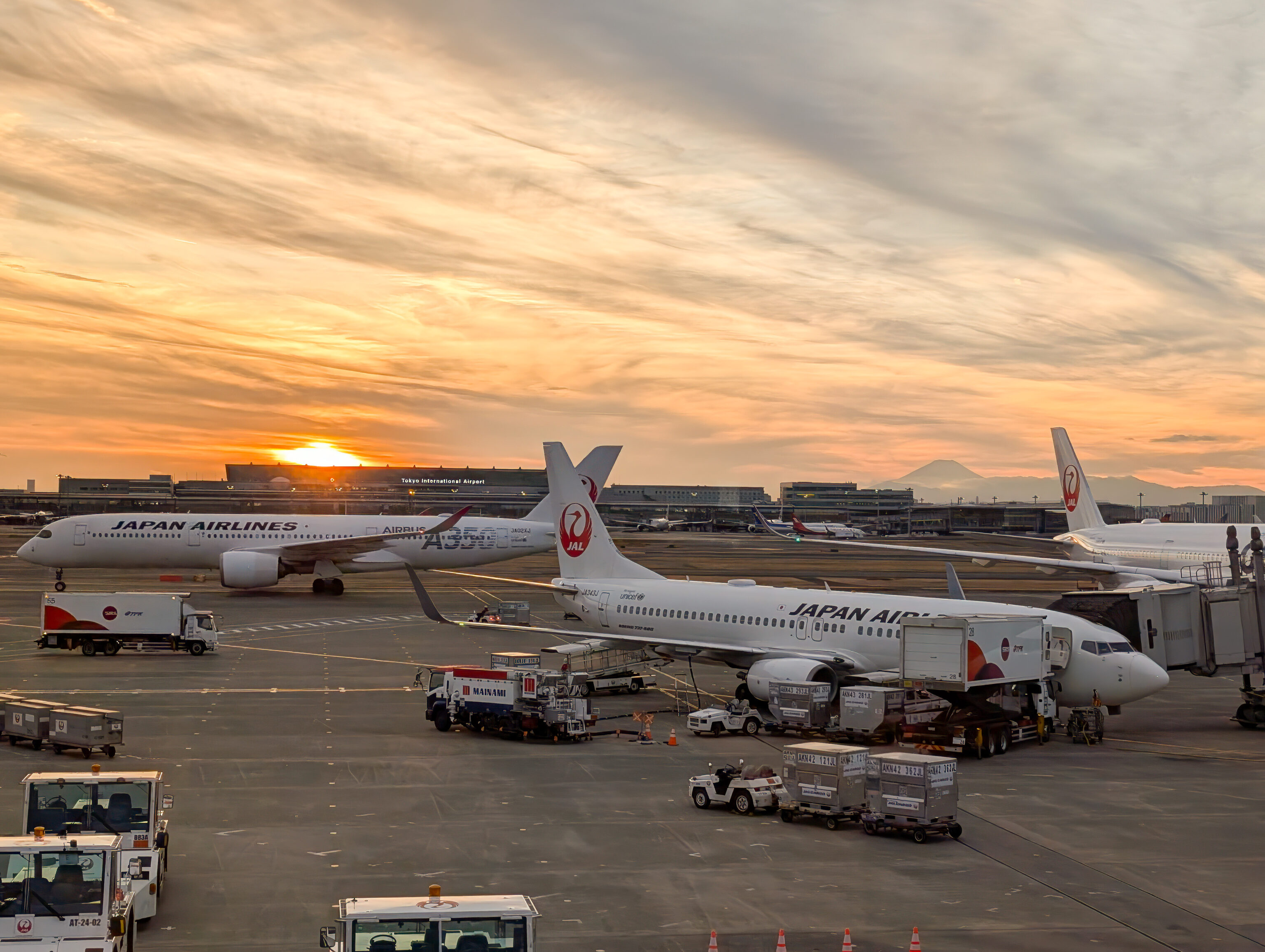
We did not have any lounge access for our Japan Airlines flight. But, we did have access to the Power Lounge via Priority Pass. This lounge is best described as a glorified waiting area. There are limited free drink options with additional items available for a fee. It did not really have any food or snacks. Overall, absolutely not something we would ever want to pay money for.
We at least got to see the sun go below the horizon behind Terminal 3. We were even able to see Mount Fuji!
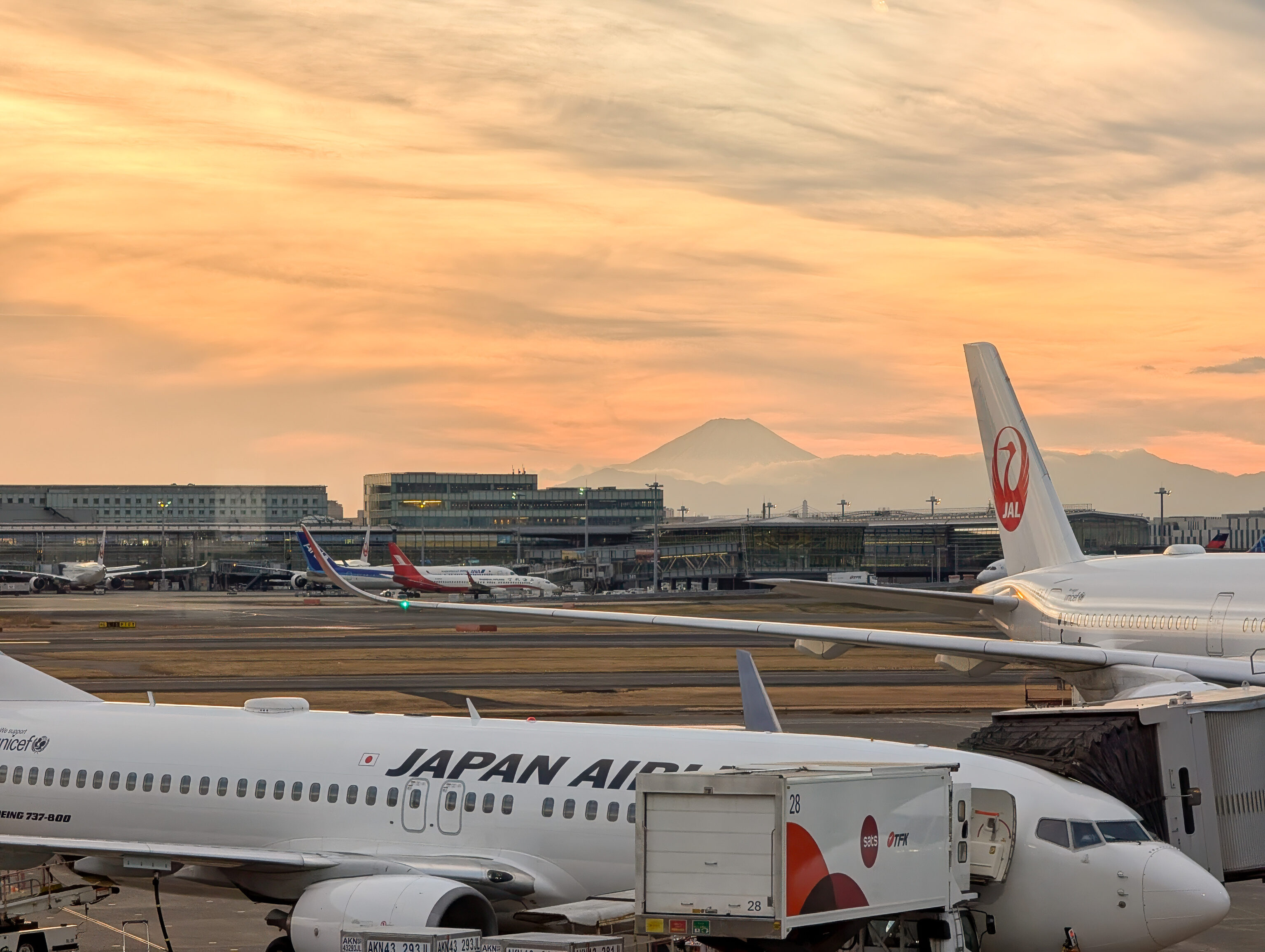
A closer look at Mount Fuji in the distance.
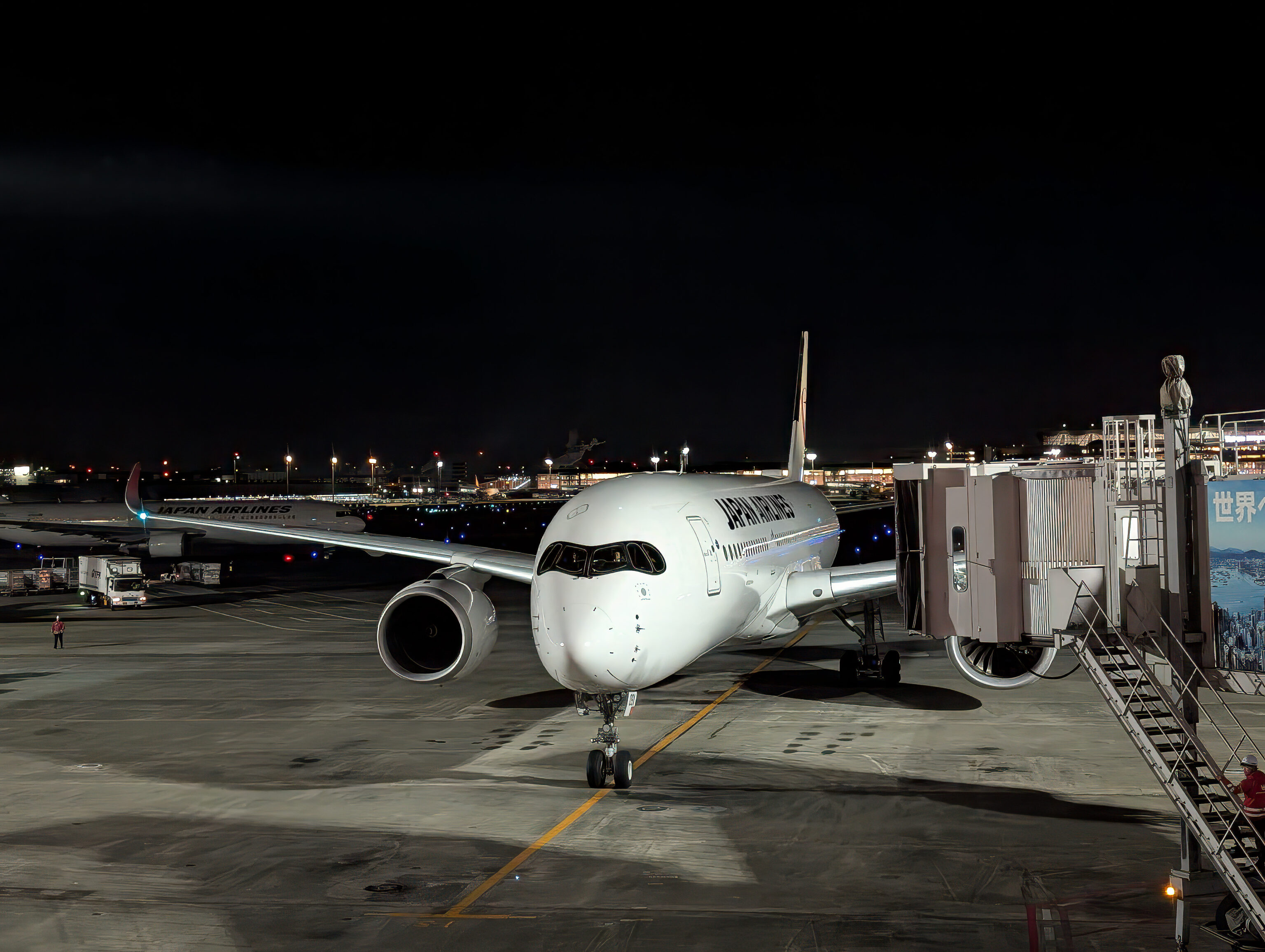
Our 6:30pm departure ended up being delayed with the aircraft finally arriving at 7pm. We watched as the A350-900 finally arrived at the gate. This flight was our first time on an A350 as well as our first time flying on JAL. JAL operates a 3 cabin aircraft on this route with First Class. J Class, and Economy. We had tickets for J Class. Despite its name and use of J, the full fare bucket for business class on many airlines, this is actually just premium economy in both seat and service. No meal was provided but we did have drink service on the flight. Seats were 8 across configured as 2-4-2, one less than regular economy which was 9 across as 3-3-3. The flight to CTS is pretty short at just 1 hour and 30 minutes.
ANA Crowne Plaza Chitose
After arriving at CTS, we picked up our luggage and headed out to our hotel, the ANAクラウンプラザホテル 千歳 ANA Crowne Plaza Chitose. Our initial plan was to take a taxi. It turns out that late at night, there are very few taxis. We saw them refuse a previous passenger at the taxi rank who didn’t want to go as far as Sapporo. There were other options, such as the train or bus. We saw that there was a bus leaving soon so we decided to take it. The bus stop was at the far end of the domestic terminal and it was a bit questionable if we were in the right place. But, we were. The bus showed up, we got on using our IC cards for the fare, and off we went to our hotel. The closest bus stop is actually at JR’s 千歳駅 Chitose Station. Taking the bus takes about the same time as the train but is significantly cheaper.
The hotel is about a 10 minute walk from the station. We ended up walking on the southwest side of the street, opposite of the station, which turned out to be a mistake as it was entirely covered with ice, though there was a tiny bit of old snow atop it. Our microspikes were in the bags that we sent ahead from Narita when we first arrived in Japan so we just walked slowly. In retrospect, we should have just crossed back over to the other side of the road!
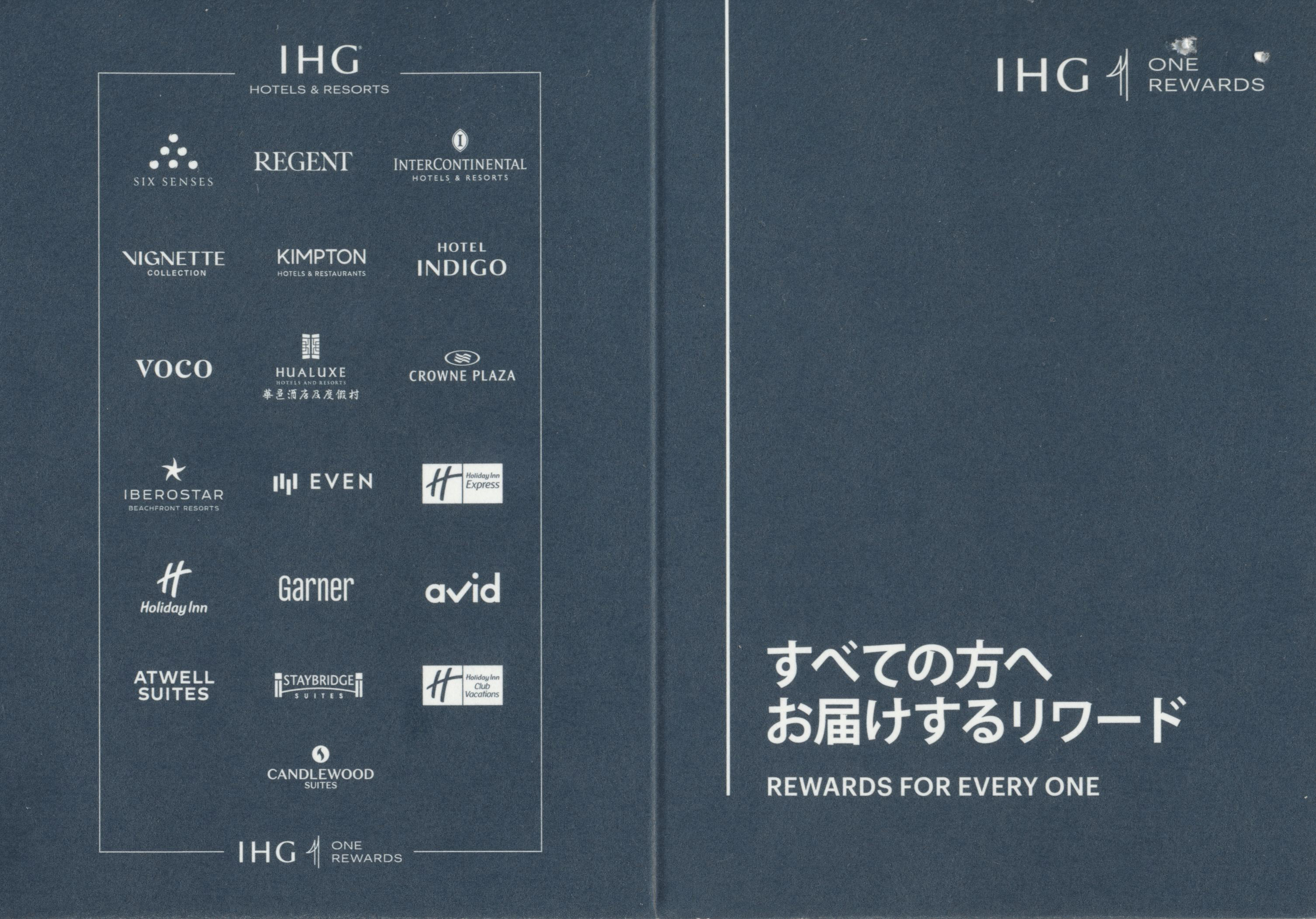
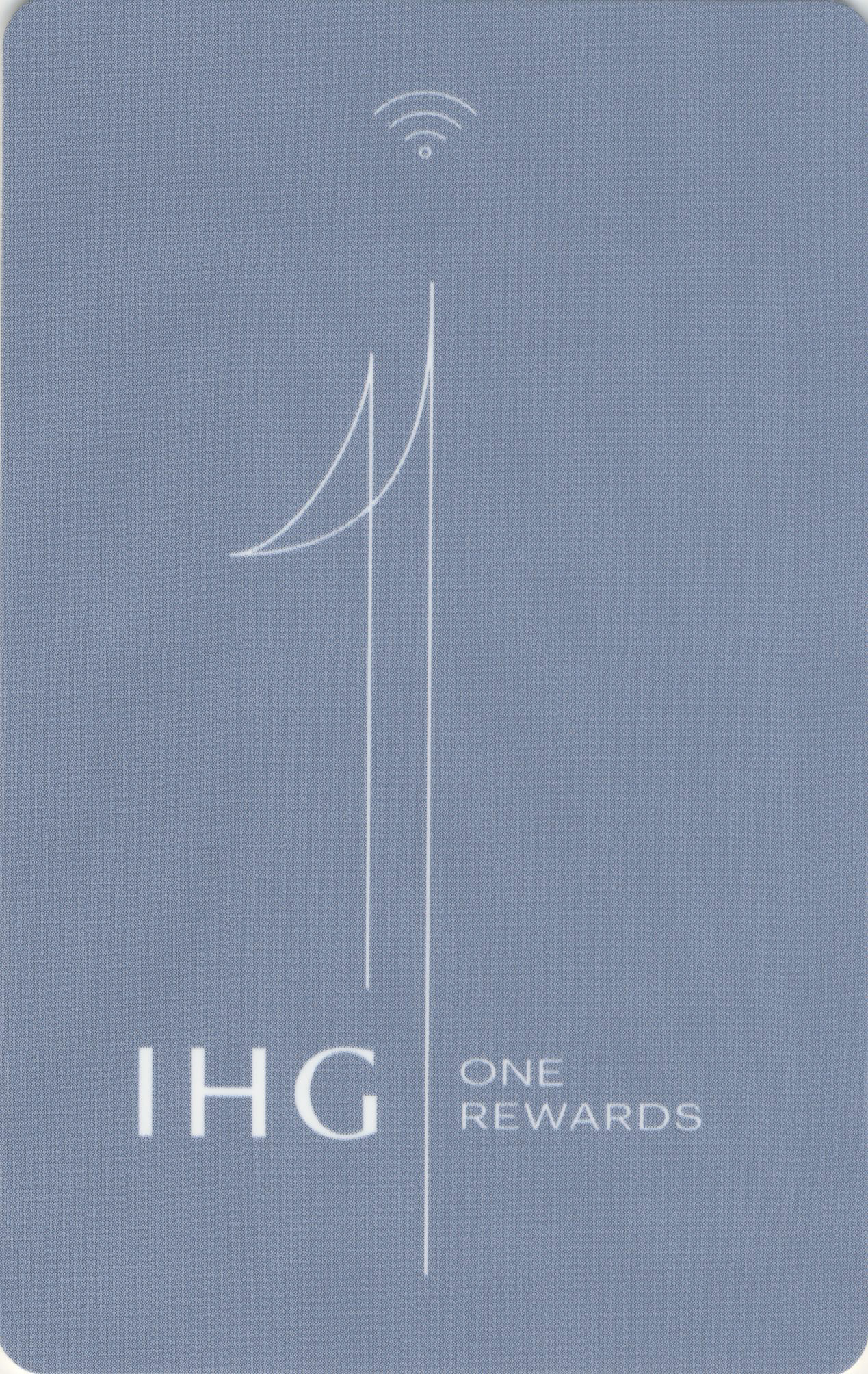
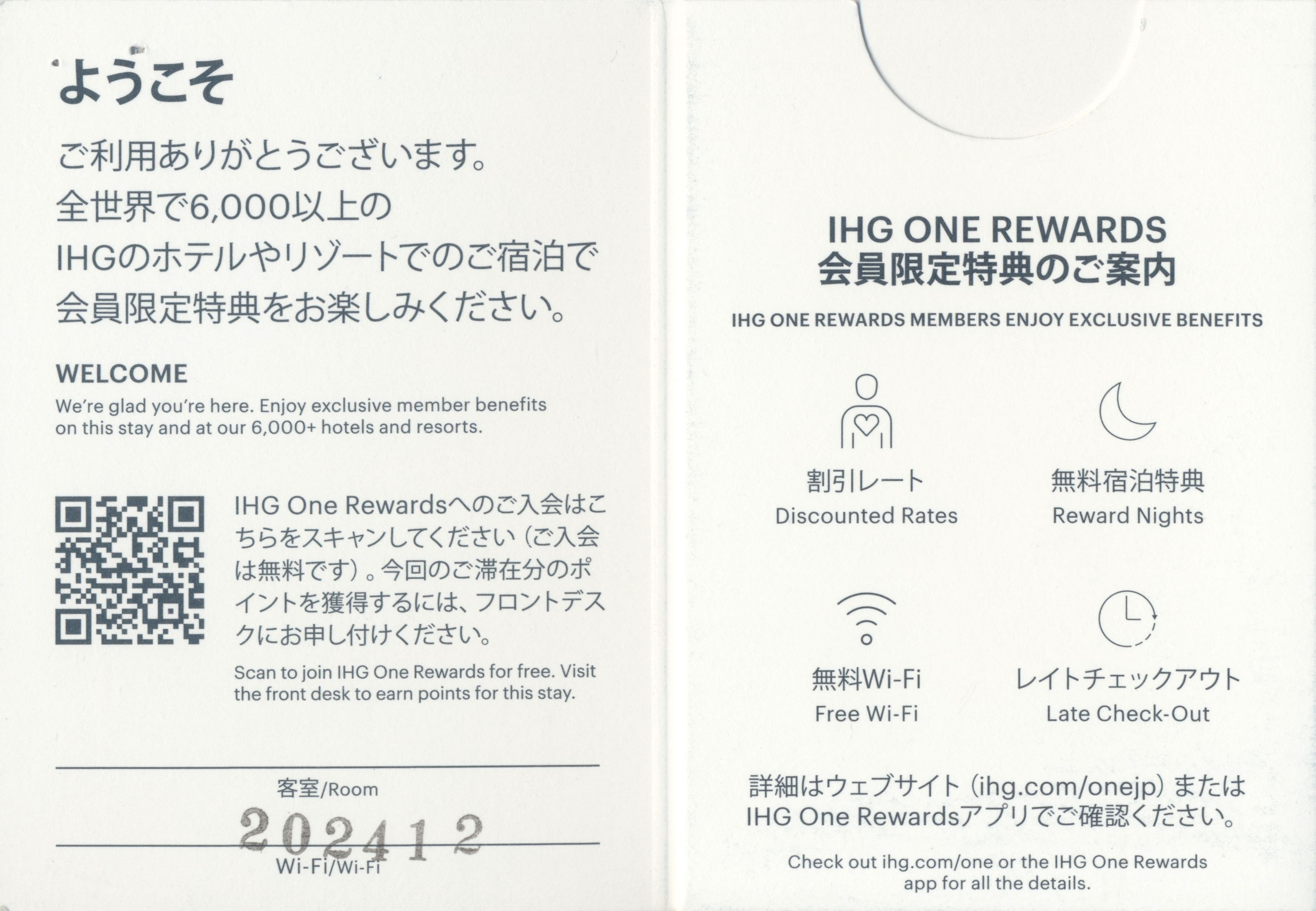
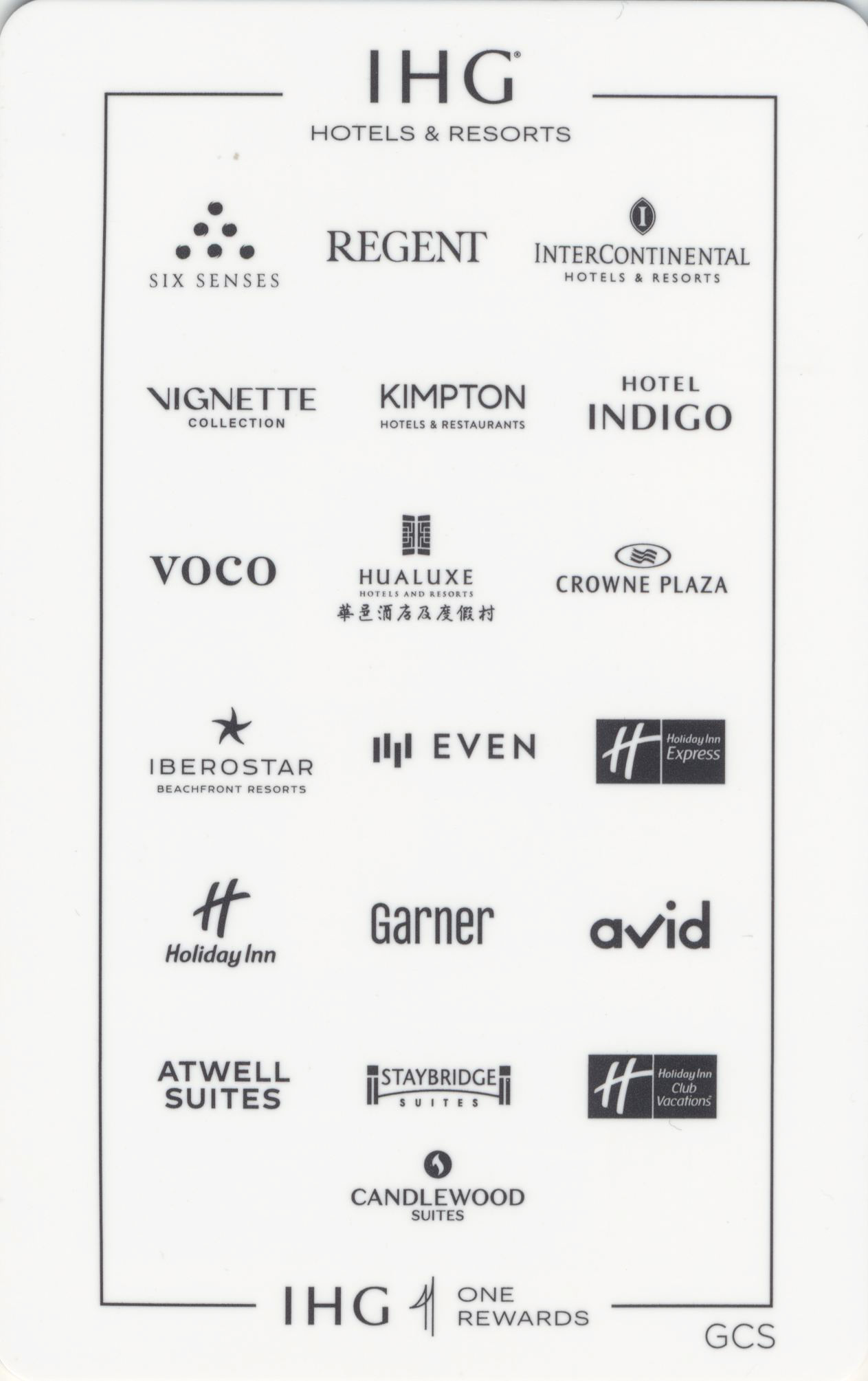
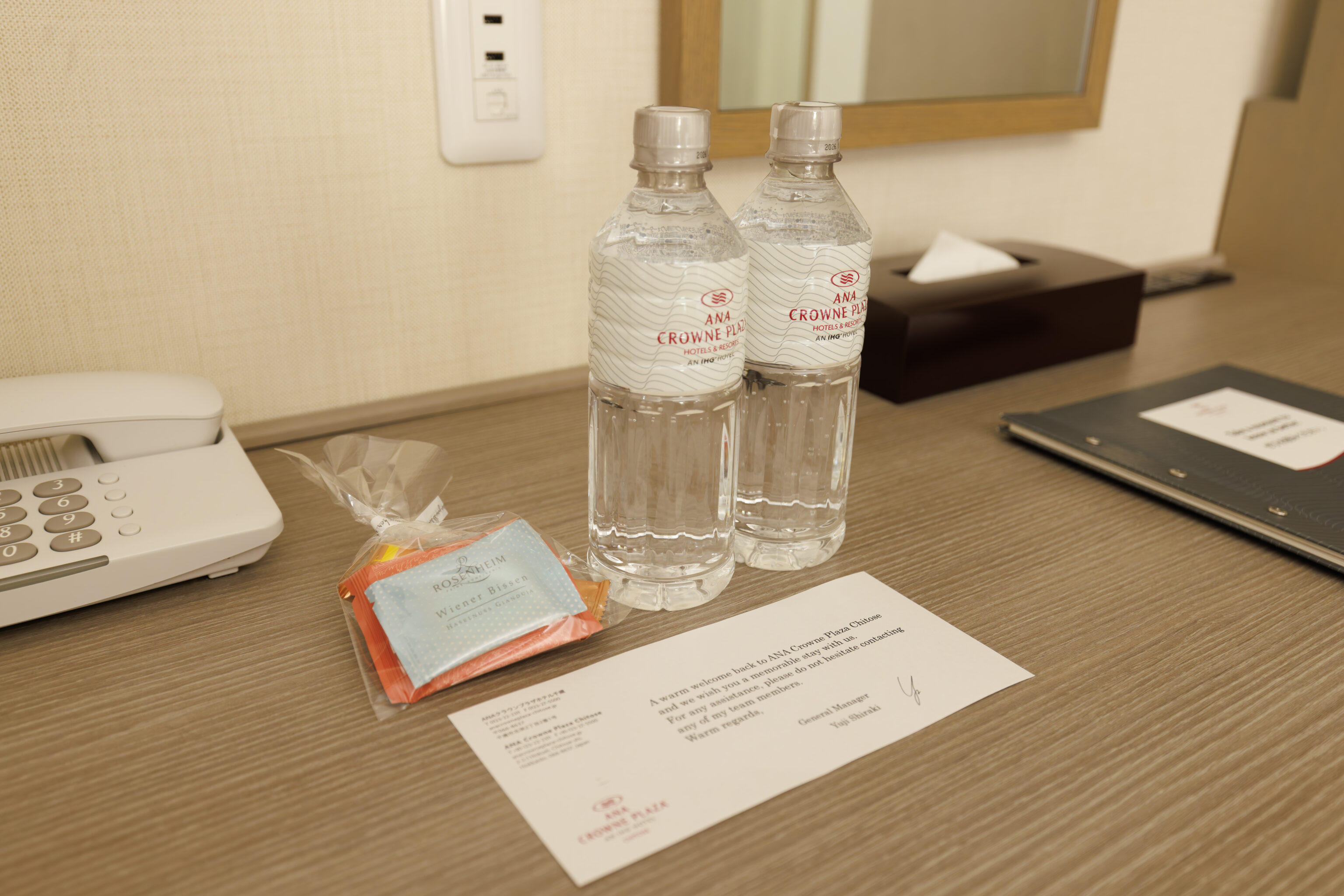
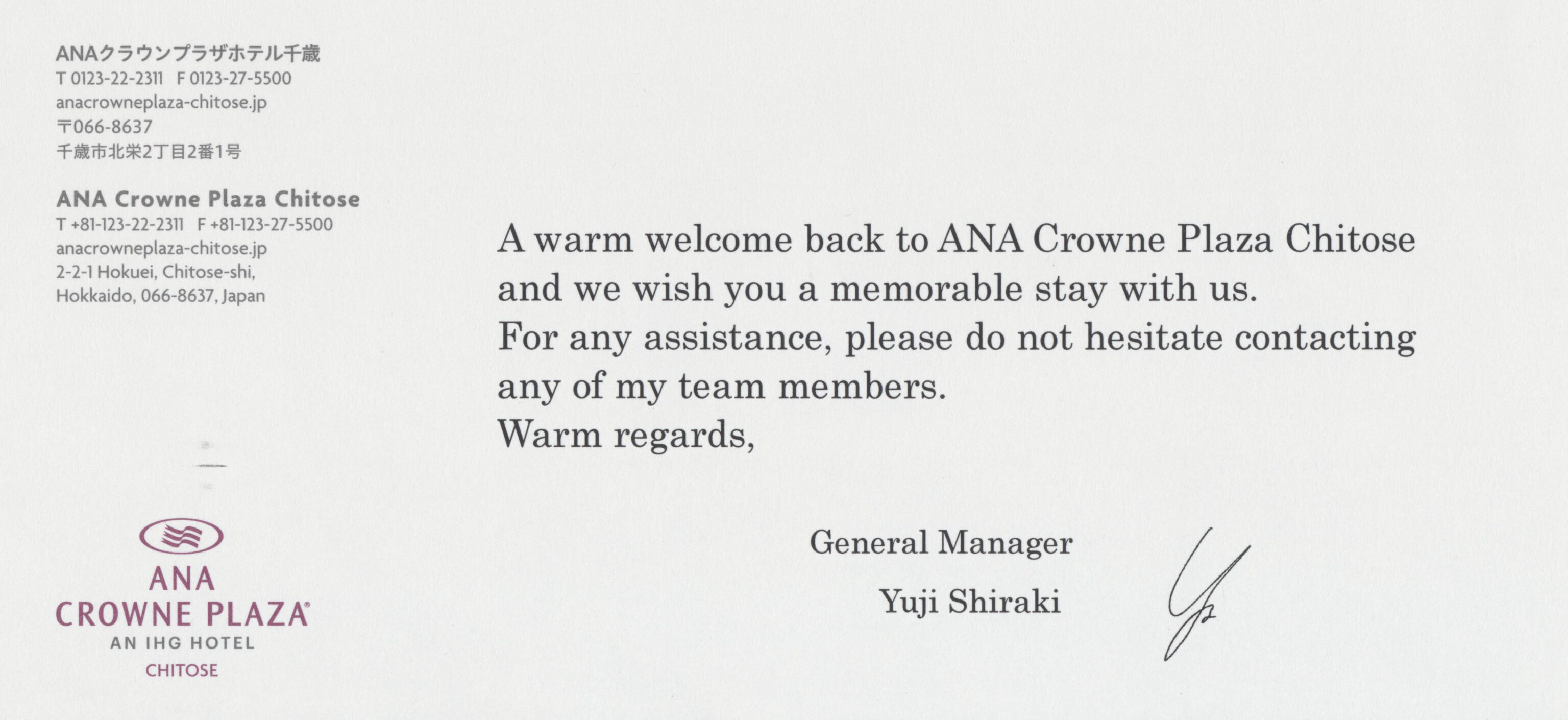
We decided to stay here one night as it is close to the airport and is also close to the JR station. We knew we would be arriving late enough that even if we went to Sapporo, we wouldn’t really have time to do much.
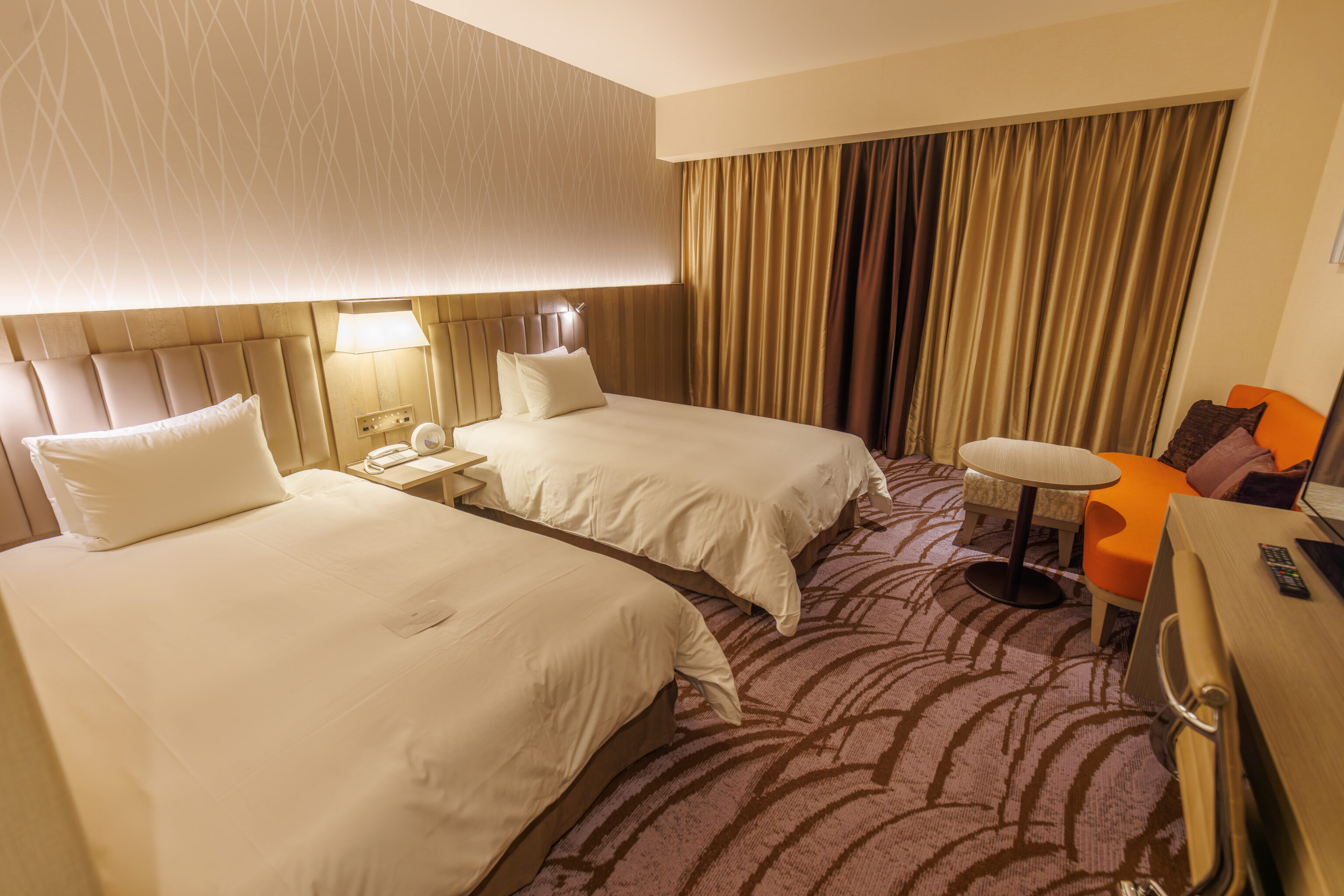
Our room was a good size and was clean and tidy. The hotel is actually fairly large with two connected buildings. It isn’t clear if there is any meaningful difference between the rooms in the buildings. Our room was in the southeastern building which is also where the breakfast restaurant is located. The lobby is by the other building but it isn’t much of a walk.
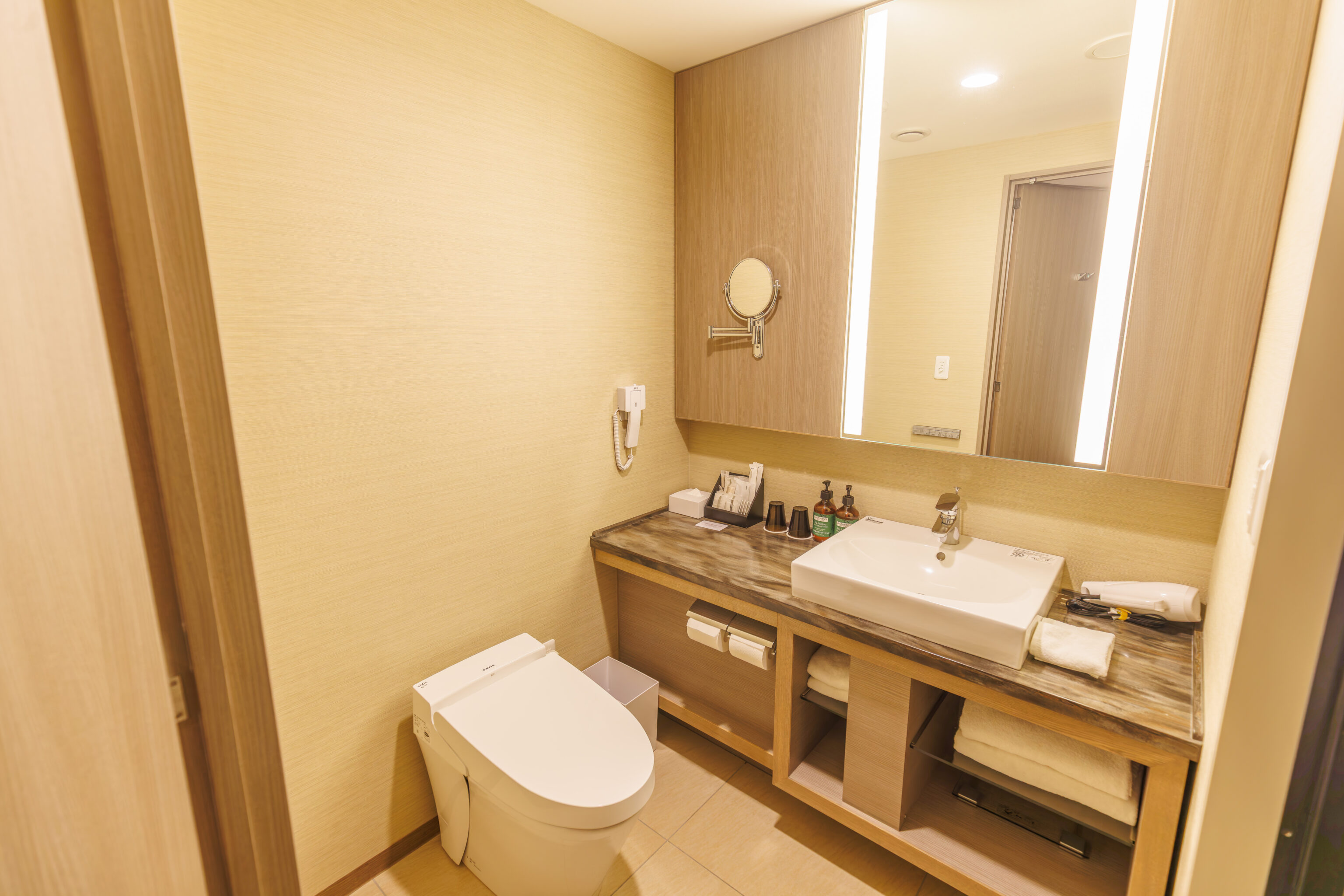
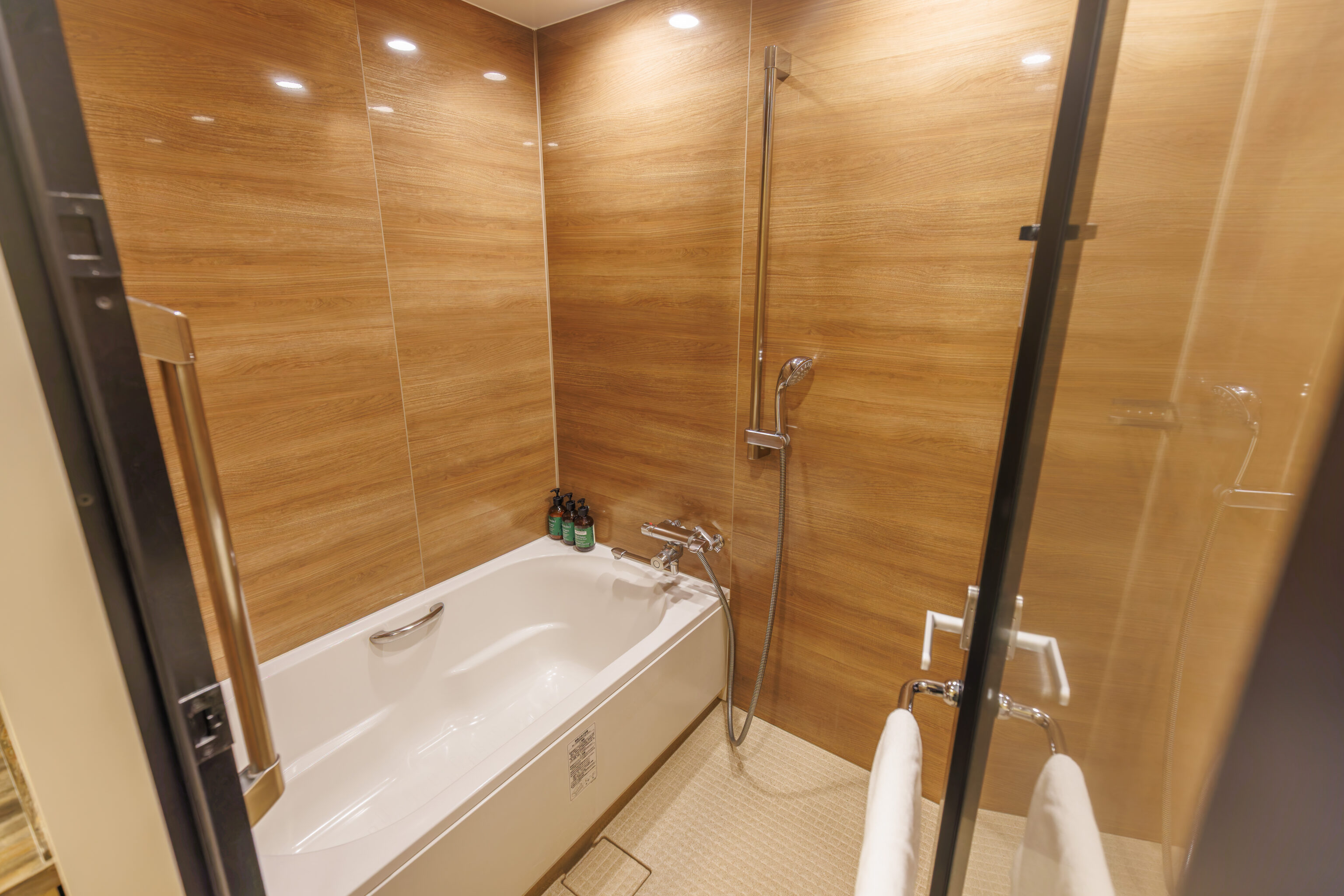
The bathroom was a very good size and had a tub.
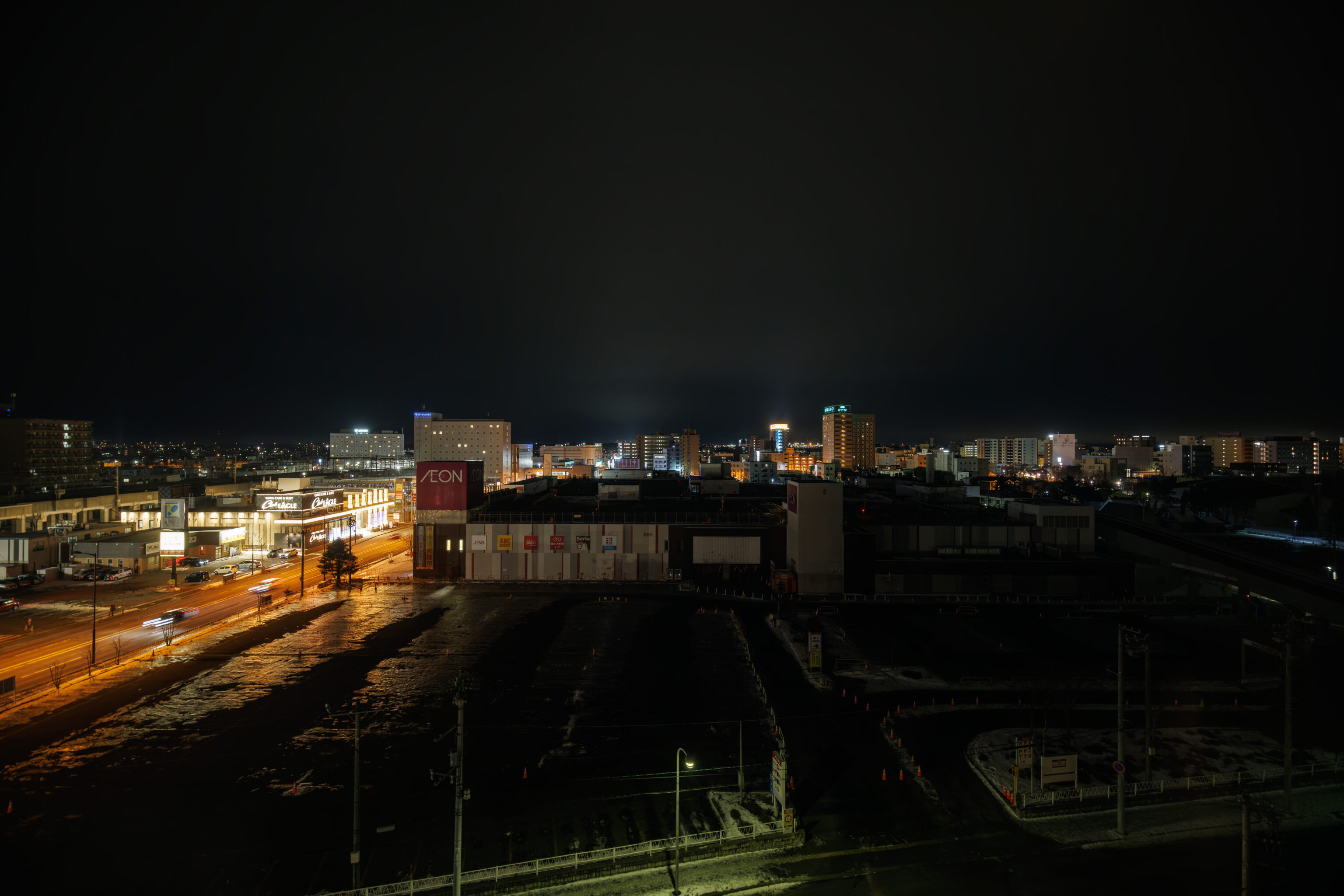
The view is of the Aeon mall to the southeast, the direction that we arrived from.
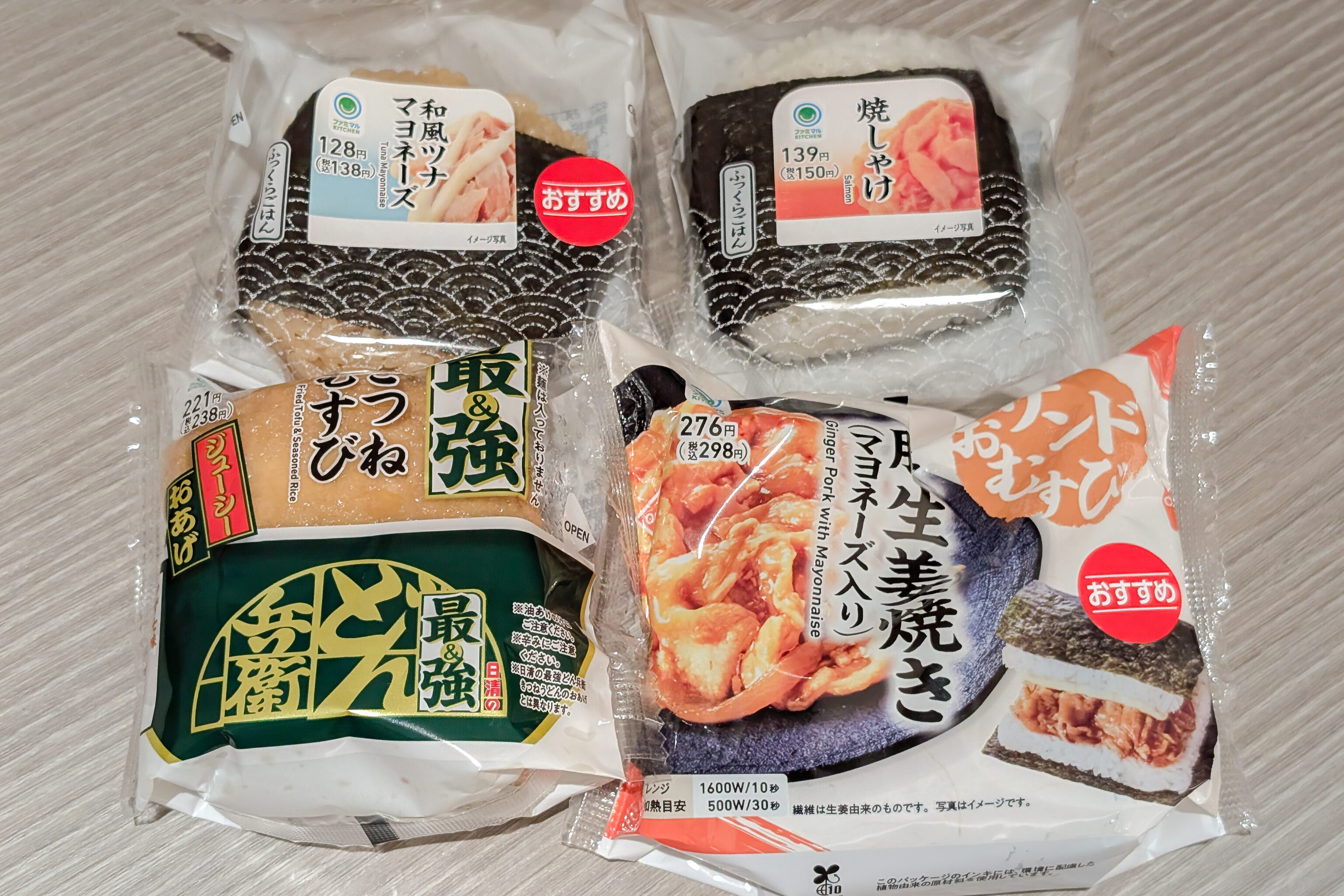
Due to the late arrival of our aircraft, we didn’t get settled into our room until 11pm. Too late to get anything to eat. But luckily, there is a konbini, FamilyMart, in the hotel which closes at midnight! It’s not fancy food, but we ate well!
- David Challis, Archival Currency Converter 1916–1940
https://canvasresources-prod.le.unimelb.edu.au/projects/CURRENCY_CALC/ ↩︎ - Federal Reserve Bank of Minneapolis, Inflation Calculator
https://www.minneapolisfed.org/about-us/monetary-policy/inflation-calculator ↩︎

